Southern Peru: Manu to Machu Picchu Trip Report (2025)
Day 1. Lima – arrival
Day 2. Lima, Pucusana, Pantanos de Villa
After an early breakfast we made our way south through the dense Lima traffic and under the dense, low cloud-cover that is characteristic to this region of Perú. We drove through the almost desert-like, barren hills and arrived at the port of Pucusana where the bay was filled with colorful fishing boats and many cool birds! We boarded our small boat and immediately began seeing iconic Peruvian birds such as Peruvian Pelican, Peruvian Booby and the elegant Inca Tern. The captain safely took us around the island of Pucusana where we spotted both Blackish and American Oystercatchers, Belcher’s Gull, Red-legged Cormorant, Humboldt Penguin and Surf Cinclodes. We also had luck with mammals and saw South American Sealions and a Marine Otter!
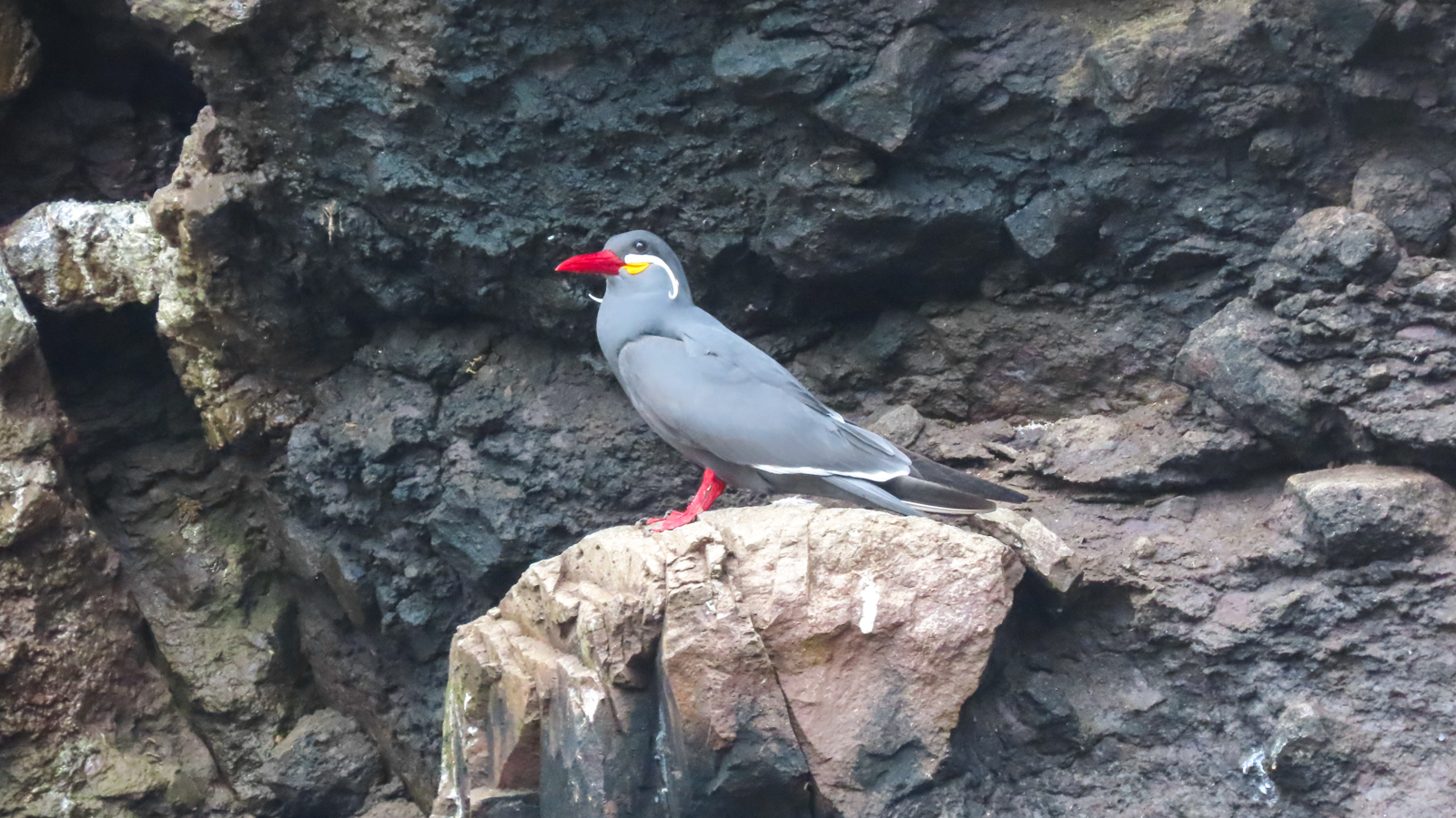
Inca Tern © Ernesto Carman
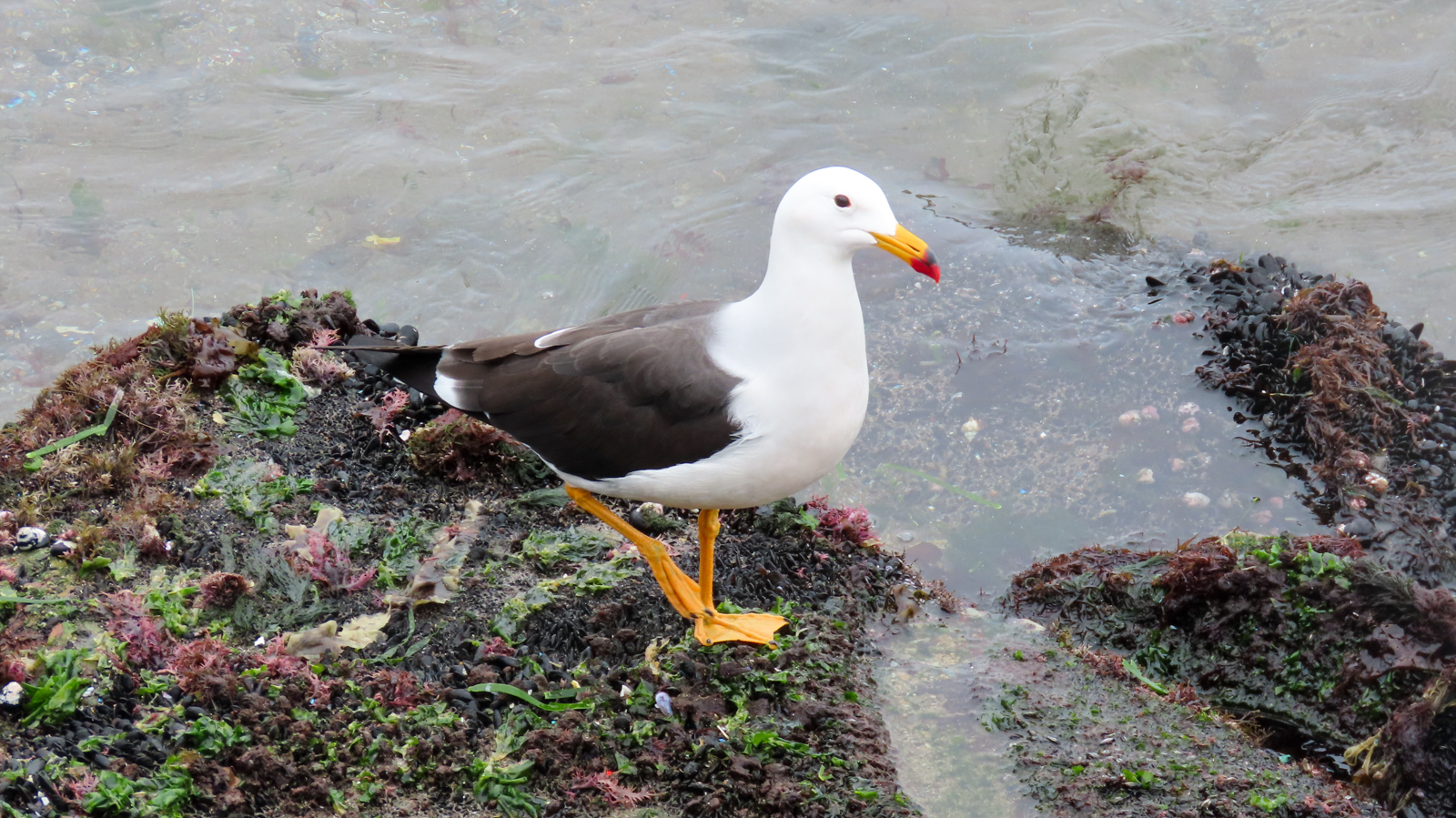
Belcher’s Gull © Ernesto Carman
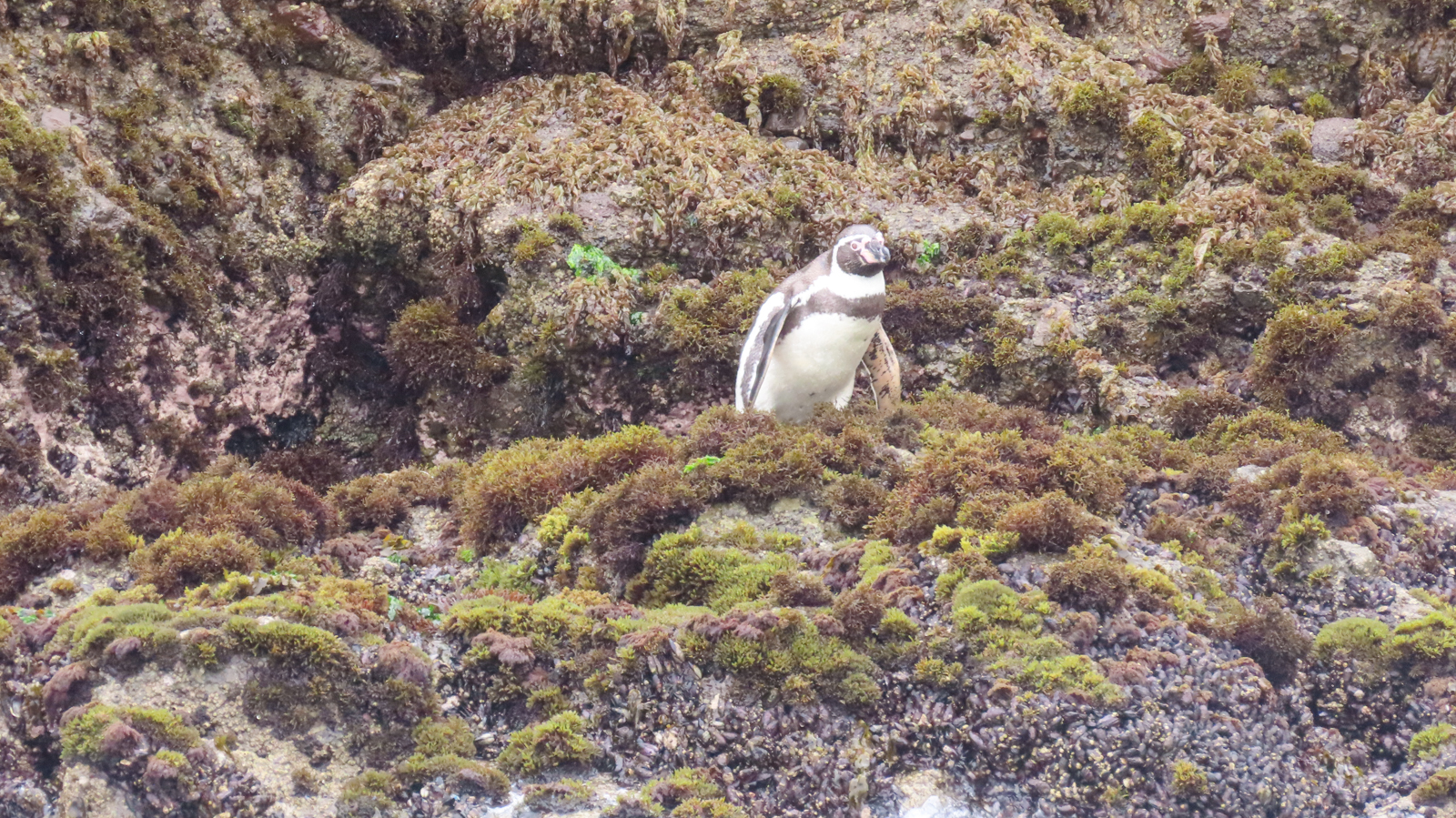
Humboldt Penguin © Ernesto Carman
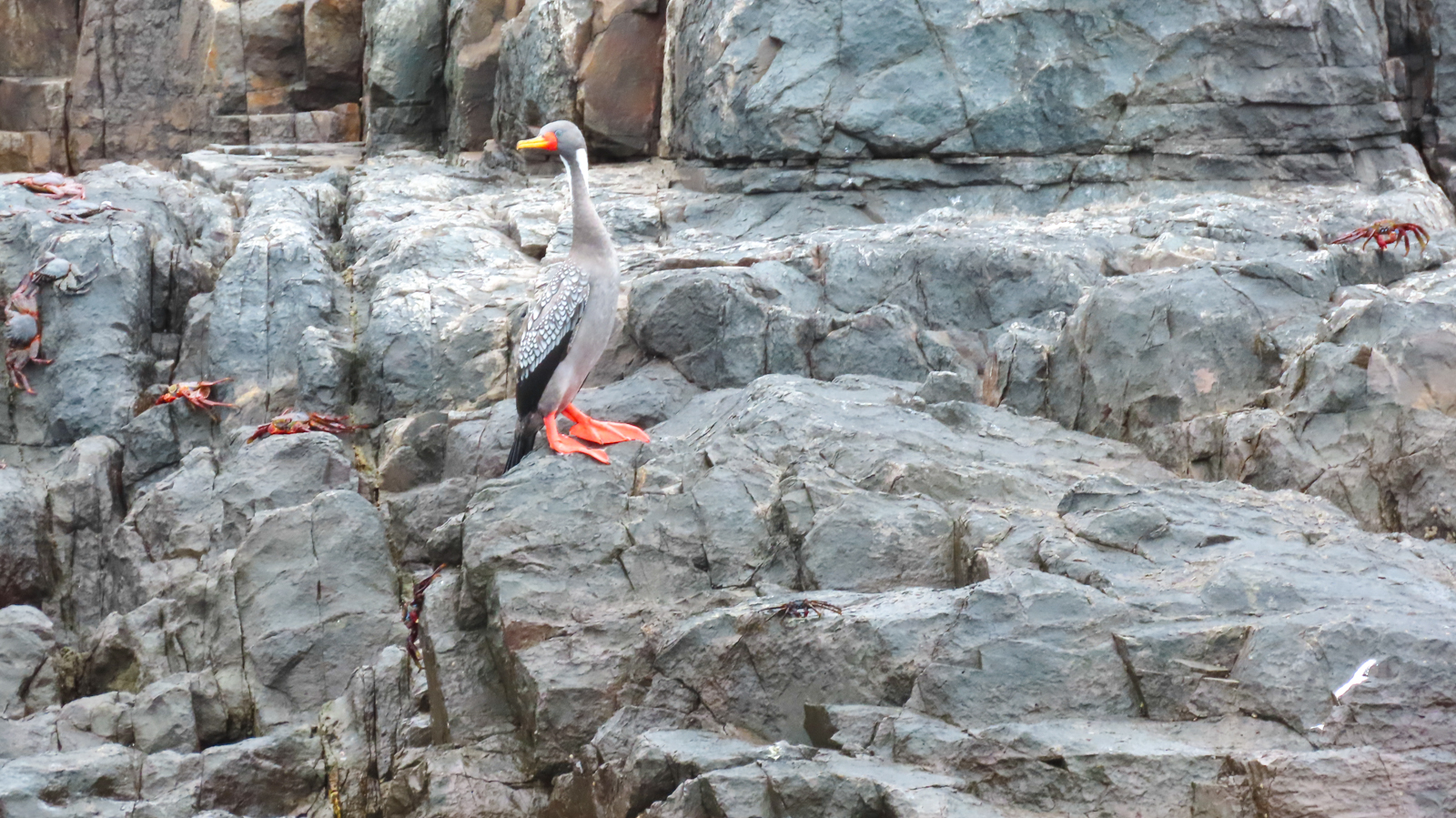
Red-legged Cormorant © Ernesto Carman
After lunch we visited several sites along the beach as we worked north back towards Lima and saw a massive flock of Guanay Cormorants and several new gulls including Gray, Franklin’s, Kelp and Gray-hooded, as well as Sanderling, Whimbrel, West Peruvian Dove, Vermilion Flycatcher, Harris’s Hawk and Long-tailed Mockingbird.
Day 3. Lima to Puerto Maldonado, Posada Amazonas
After breakfast we made our way to the airport to catch our flight to Puerto Maldonado in Peru’s Amazonian rainforest, switching the cool temperatures in Lima for the usual hot and humid weather of the lowland rainforest. We prepared for our transfer to our first hotel, Posada Amazonas, and before leaving Silverio pointed out a roosting Great Potoo in the parking lot! We then took a short bus ride to then take a boat up the Tambopata River to our first lodge in Peru’s Amazonian Rainforest, Posada Amazonas. After checking in we met later that afternoon for some birding right from the grounds and had Turquoise and Paradise Tanagers, Plum-throated Cotinga, Black-fronted Nunbird and many Mealy Amazons and macaws flying overhead to their night roost.
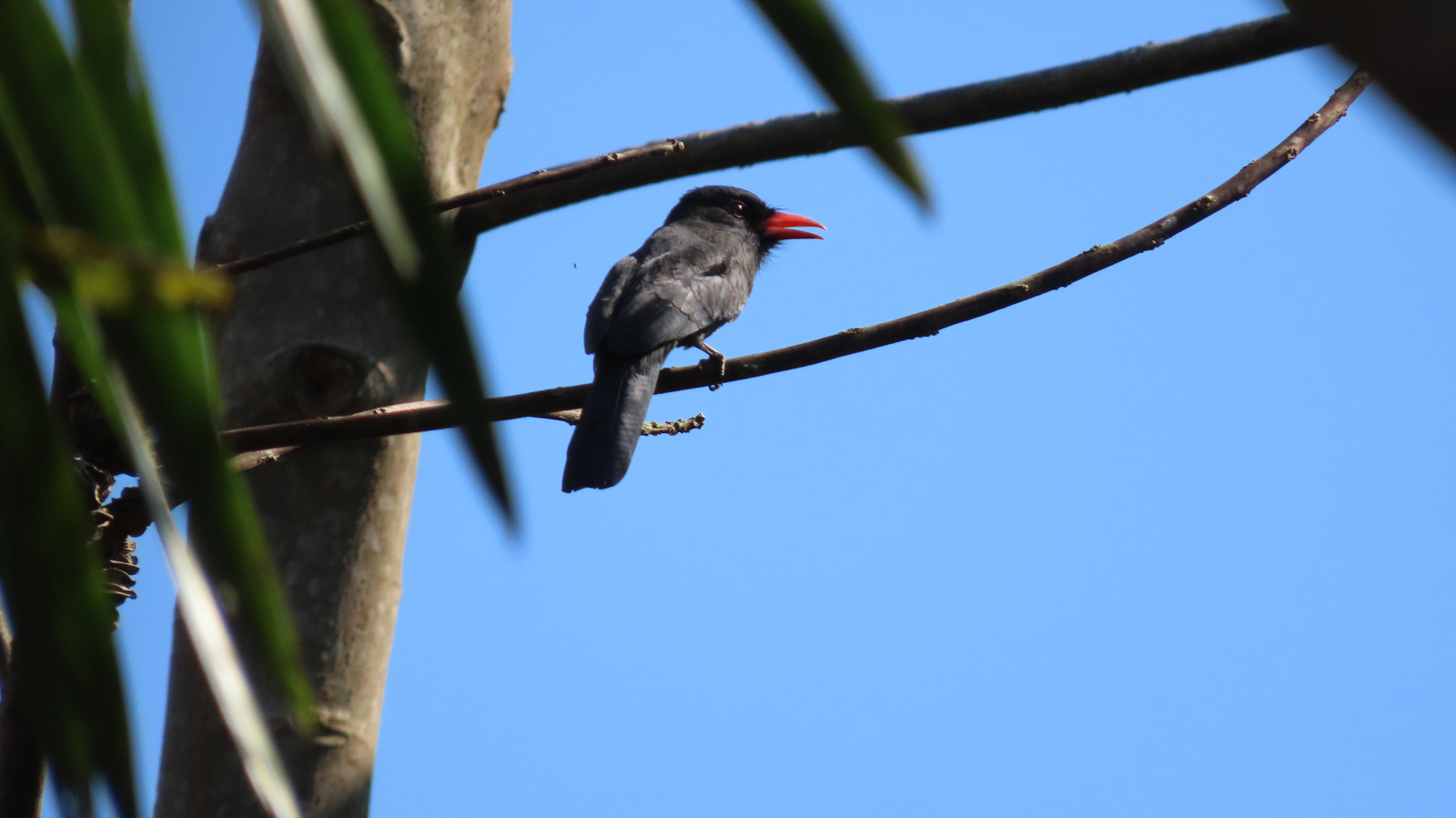
Black-fronted Nunbird © Ernesto Carman
Day 4. Tres Chimbadas Oxbow Lagoon and Posada Amazonas Canopy Tower
This morning we had an early breakfast and were off before sunrise for a short boat ride and a short walk to reach the Tres Chimbadas Oxbow Lagoon where we boarded a very stable, paddle powered sort of catamaran boat with seats which was a fantastic way to explore the edges of the lagoon. Here we found species such as Masked Crimson Tanager, Red-capped Cardinal, Wattled Jacana, Striated Heron, Ringed, Amazon and Green-and-rufous Kingfisher, Purple-throated Fruitcrow, Black-capped Donacobius, the iconic Hoatzin and a pair of Horned Screamers.
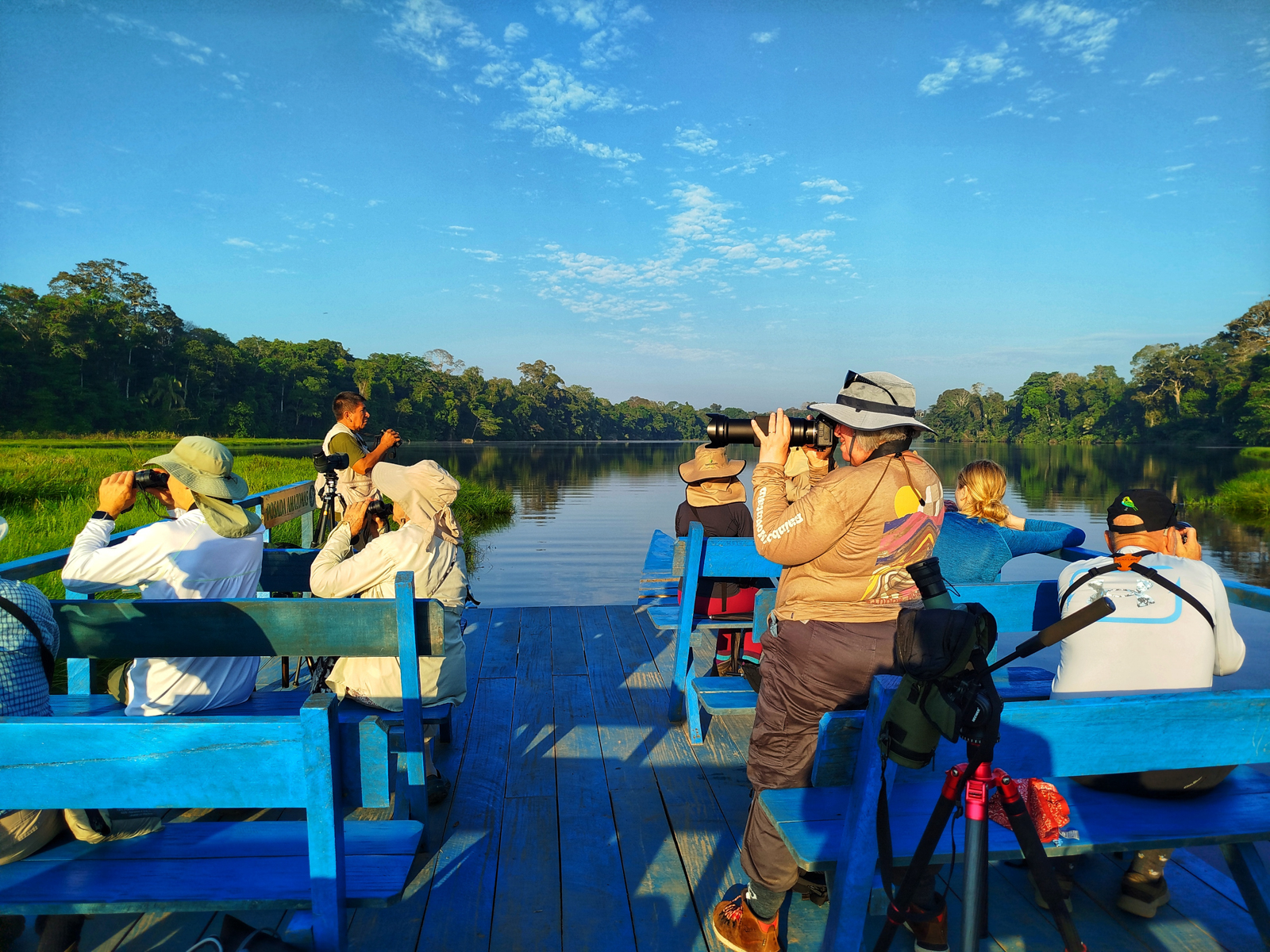
Birding Oxbow Lagoon © Ernesto Carman
We also had great views of a family of Giant River Otters feeding in the water around us and giving us plenty of views! On our walk back to the boat we found several interesting species such as Black-tailed and Collared Trogons, White-shouldered Antshrike White-shouldered Tanager, Pheasant Cuckoo and two species of monkeys in the trees around us, Brown Cappuchin Monkeys and Black-capped Squirrel Monkeys. We returned to the lodge for lunch and later in the afternoon we climbed the spectacular canopy tower on the property which offers amazing views of the canopy and birds we usually cannot see from the ground. Here we saw Western Striolated-Puffbird, White-fronted Nunbird, Gilded Barbet, Violaceous Jay, Green-Backed Trogon, we heard five different species of tinamous and an Amzonian Pygmy-owl. We also enjoyed a troop of Red Howler Monkeys that climbed up a bare tree next to the tower in the sunset and the amazing sounds they made as they answered other distant troops.
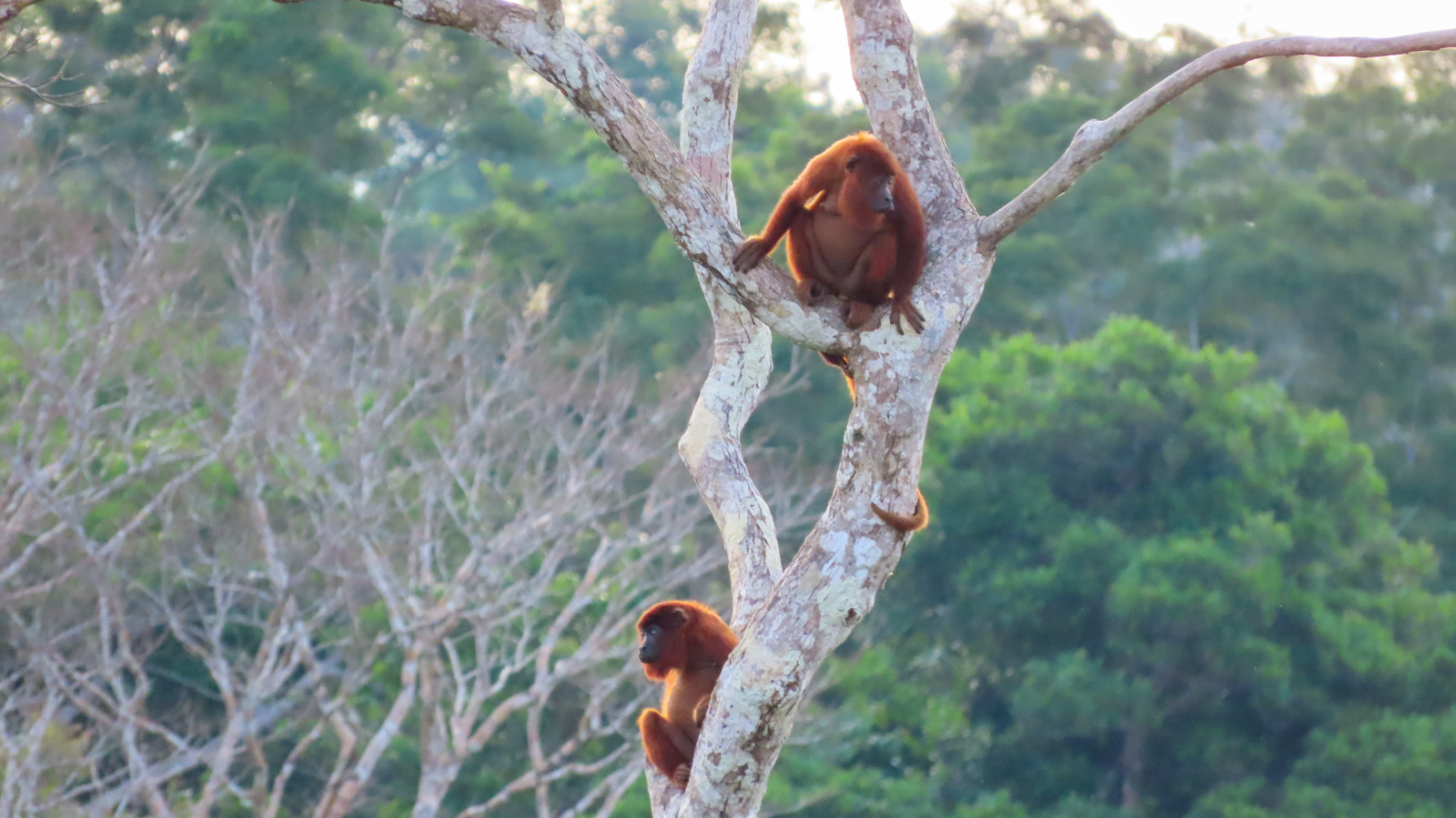
Red Howler Monkey © Ernesto Carman
Day 5. Posada Amazonas Canopy Tower, Tambopata River and Refugio Amazonas
Before sunrise we swigged some coffee and walked to the canopy tower for some early morning birding, and the canopy was teeming with sounds as we enjoyed a scarlet sunrise over the amazon rainforest. This morning we saw Spix’s Guan, Squirrel Cuckoo, White-necked Puffbird, Lettered Aracari, Red-necked Woodpecker, Laughing Falcon, Red-throated and Black Caracara, Masked Tityra, Pink-throated Becard and an impressive show of parrots, parakeets and macaws flying at eye-level right beside us over the canopy!
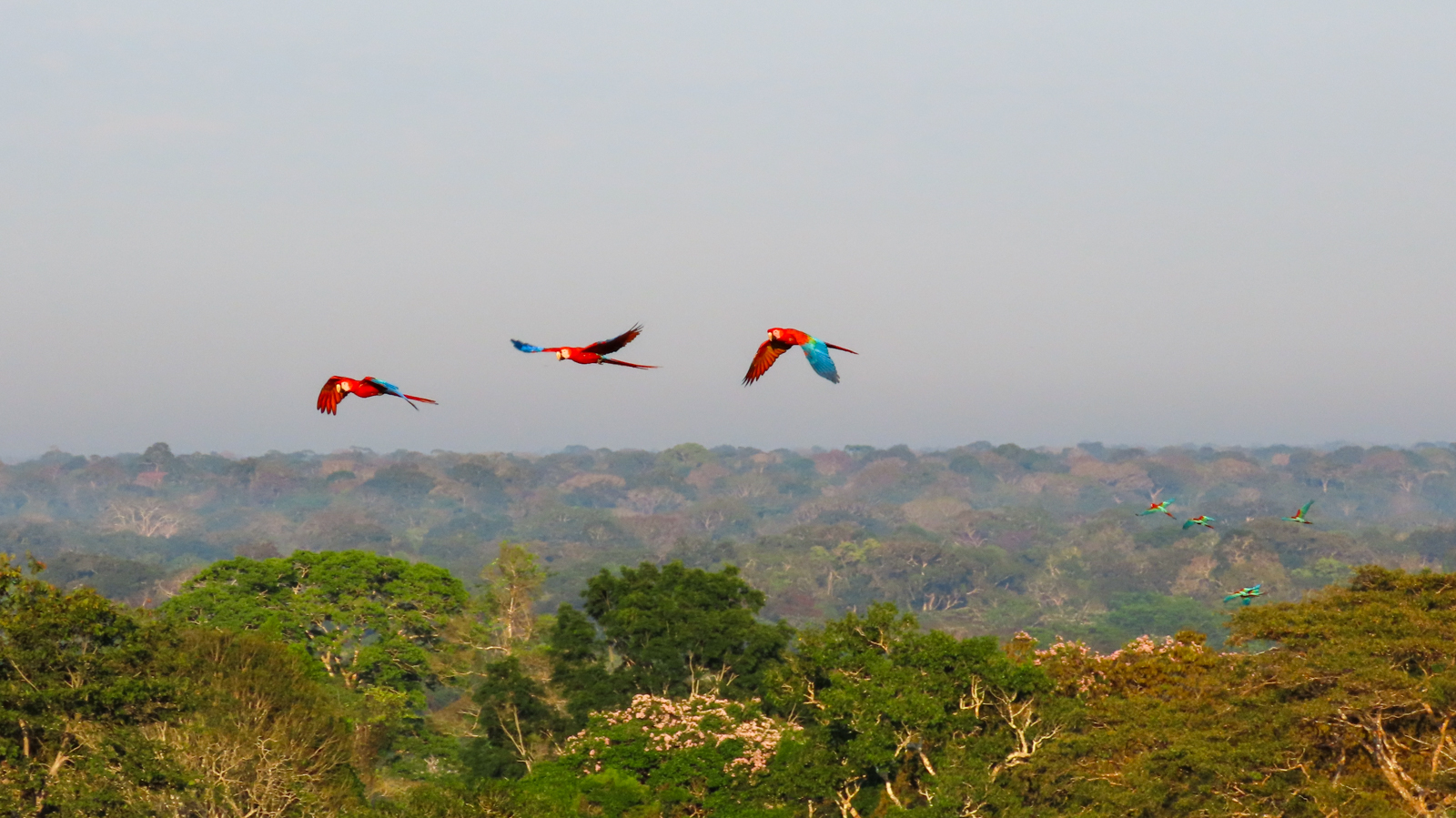
Red-amd-green Macaws © Ernesto Carman
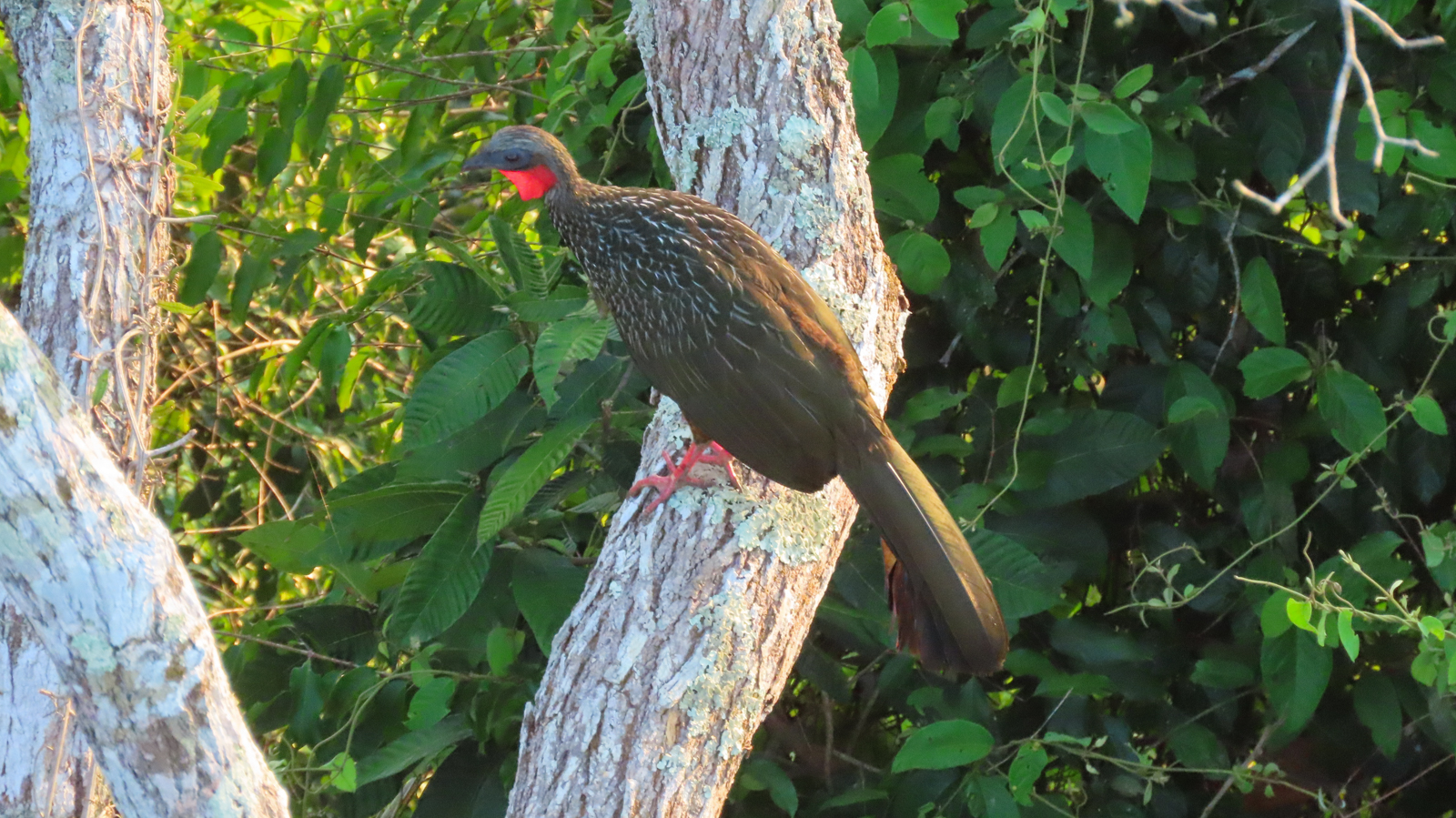
Spix’s Guan © Ernesto Carman
On our walk back to breakfast we saw Amazonian Motmot, Rufous Motmot, Black-faced Antbird and a Slate-colored Hawk. After breakfast we packed our bags and walked to the boat to work our way further up the Tambopata River to our next lodge, Refugio Amazonas. Along the way we saw Large-billed Tern, Cocoi Heron, Capped Heron, White-winged and White-banded Swallows, Bluish-fronted Jacamar, Drab Water-tyrant, Ladder-tailed Nightjar and Giant Cowbirds sitting on top of Capybaras, picking parasites off of them!
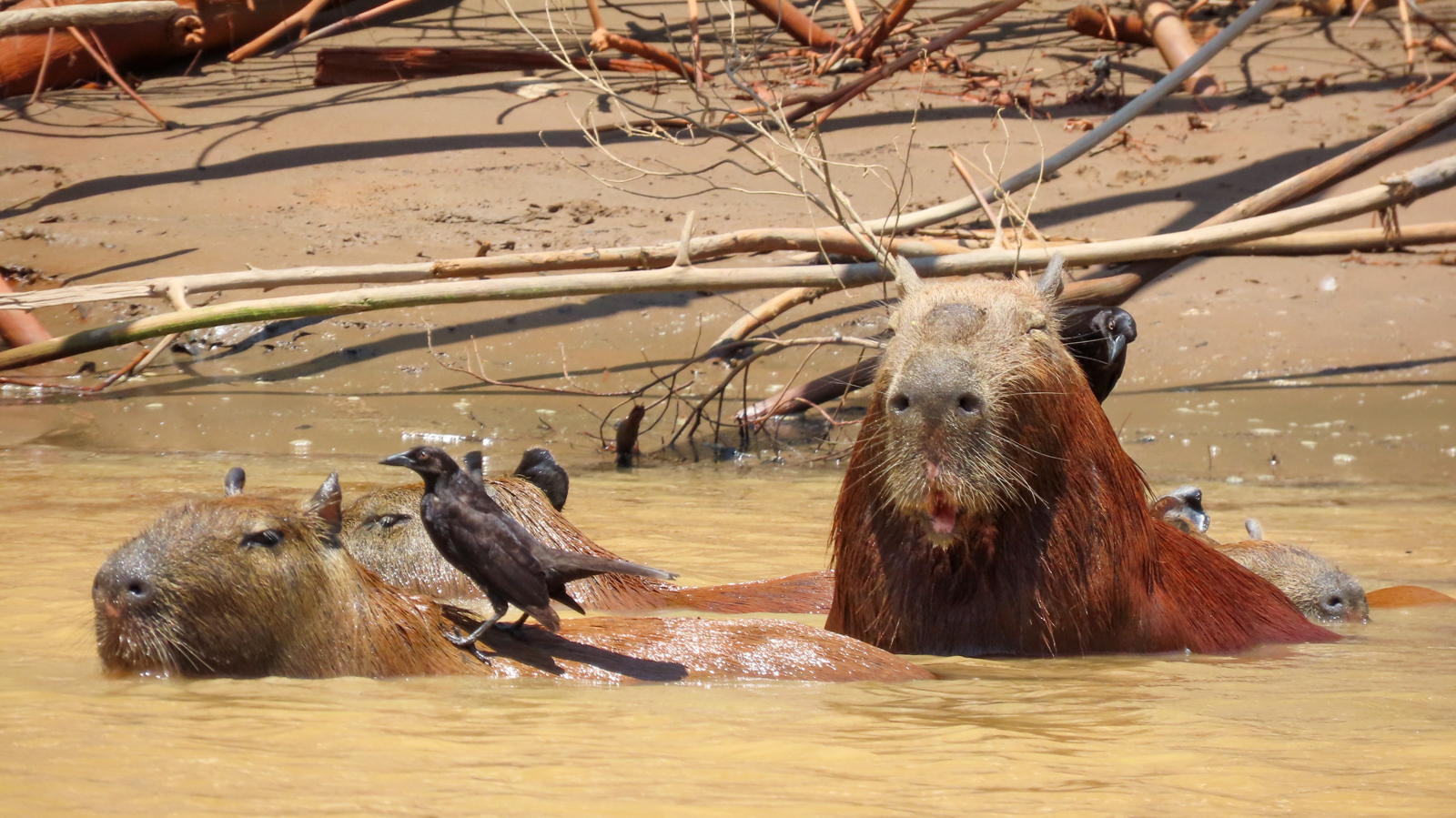
Capybaras with Giant Cowbirds © Ernesto Carman
After arriving at our lodge and having lunch we went birding on many of the trails on the property where the loud song of the Screaming Pihas rang out over the buzzing ciccadas as we walked under and marvelled at the gigantic Brazil-nut trees. Despite the heat we saw some interesting understory species including Long-winged and Gray Antwren, White-browed, Black-faced and Chestnut-tailed Antbirds and two small flycatchers, Ruddy-tailed Flycatcher and White-bellied Tody-Tyrant.
Day 6. Tambopata Clay-lick (Colpa Chuncho) and Refugio Amazonas
Today we had a very early morning because we were headed to the famous parrot clay-lick on the Tambopata River and it is important to be there early. The boat ride in the dark was most pleasant and mystical, then as the sun rose we began seeing many birds including Razor-billed Curassow, Black Skimmer, Orinoco Goose, Greater Yellow-headed Vulture and Black-billed Thrush. We arrived at one of the river islands formed by the Tambopata River and walked a short distance to a point where we could see the raised river bank and could hear hundreds of parrots and macaws in the trees on the edge.
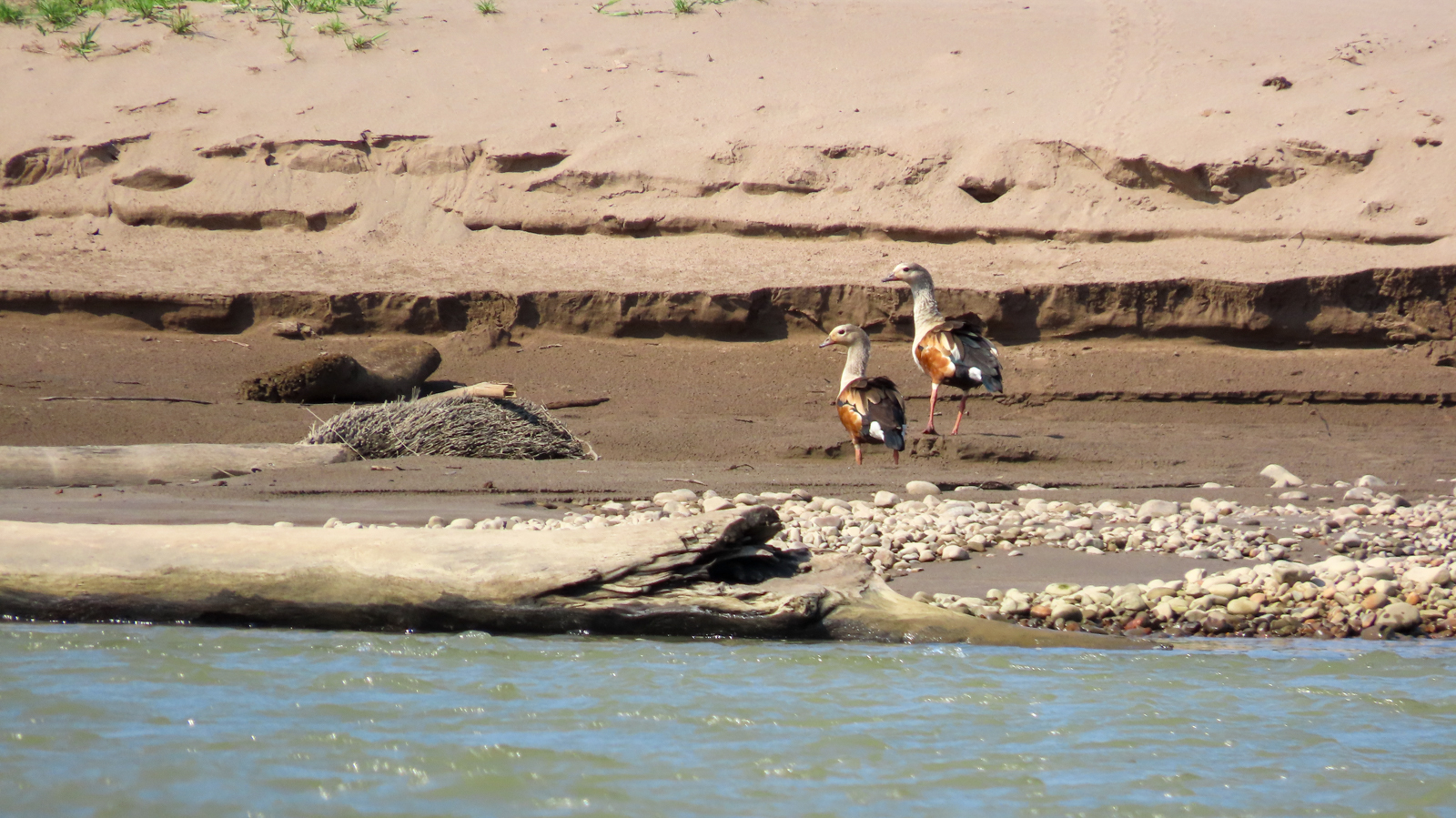
Orinoco Goose © Ernesto Carman
We sat down on our benches and watched other birds as we waited for the macaws to come down to the bank and we saw Chestnut-bellied Seedeater, Yellow-browed Sparrow, Swallow-winged Puffbird and an extremely obliging Burrowing Owl right in front of us. Eventually the three species of macaws, Scarlet, Red-and-green and Blue-and-yellow, started landing on the clay-lick to obtain certain important minerals to complement their diet, and gave us a true spectacle of a mesmerizing combination of colors glowing in the morning sunlight against the dark green background of the forest. When they all flew at once it was even more impressive!
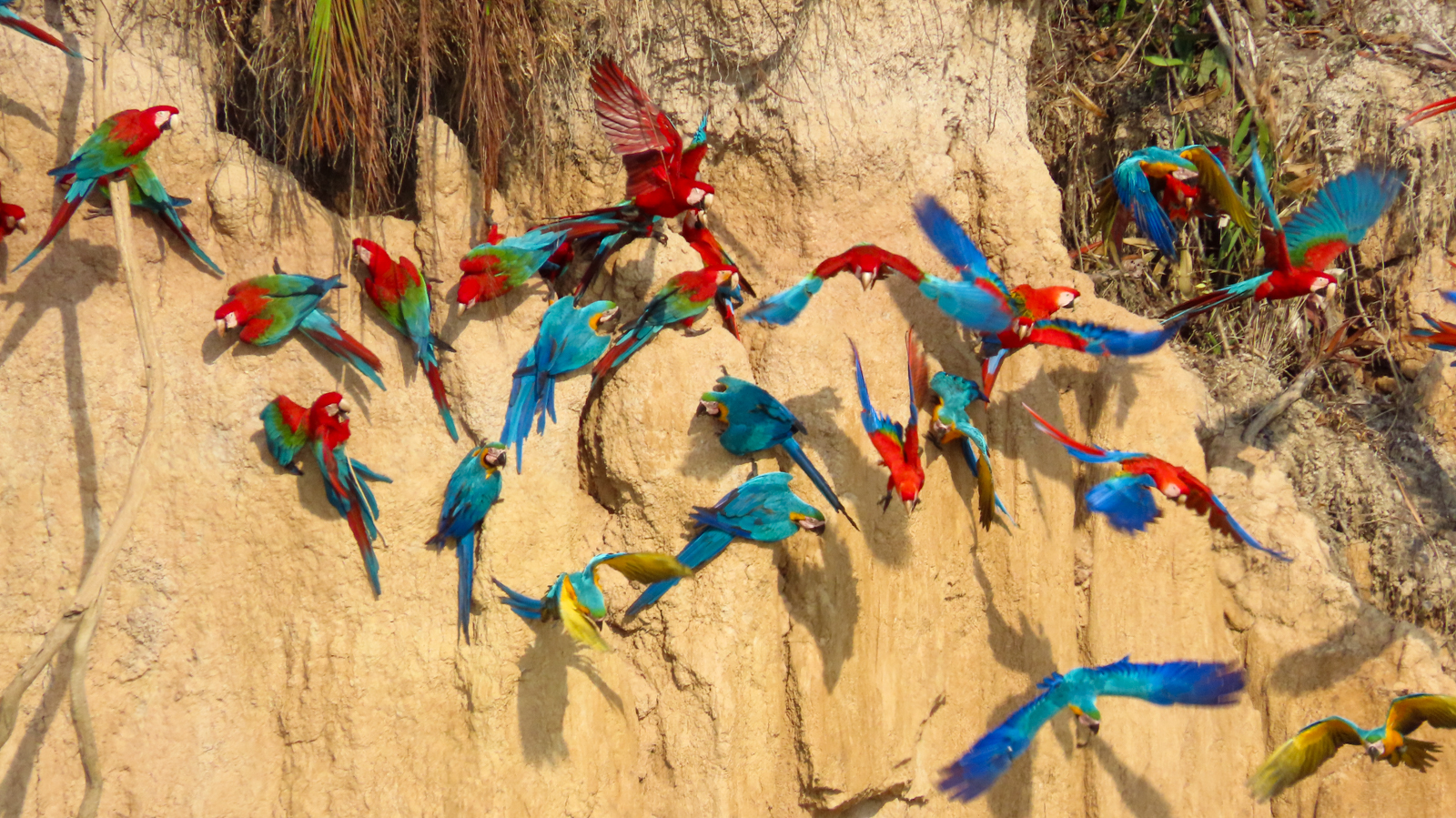
Claylick © Ernesto Carman
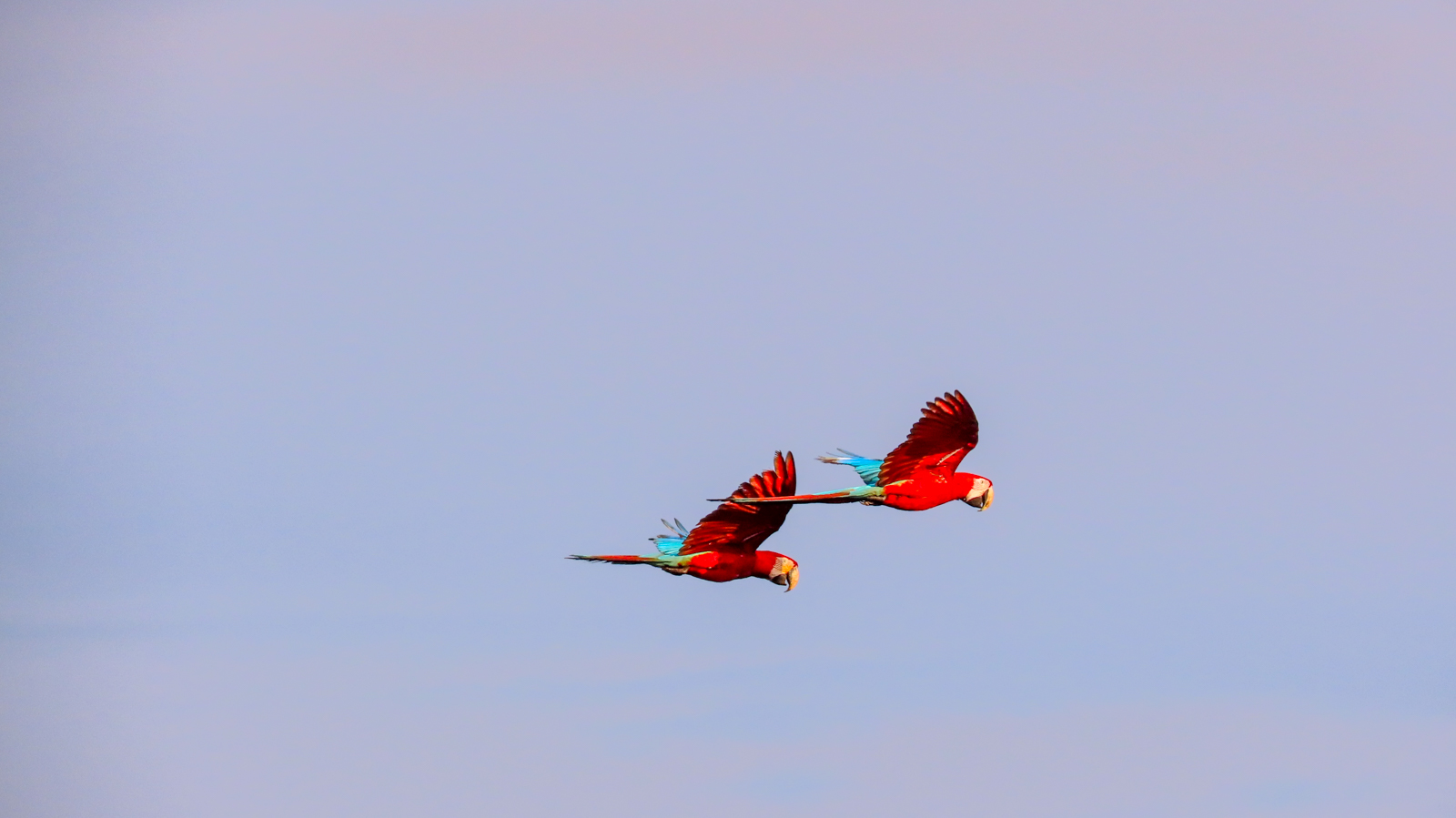
Red-and-green Macaws © Ernesto Carman
After the macaws went on their different ways we had an amazing picnic breakfast before birding our way back down along the river. On one sandbar in particular we found many interesting birds so we actually got off the boat to look at them. Here we saw Black Skimmer, Yellow-billed and Large-billed Terns, at least a dozen Sand-colored Nighthawks, Great Black-hawk and Pectoral, Stilt, Spotted and Buff-breasted Sandpipers. We returned to the lodge for lunch and a siesta and later that afternoon explored another section of trail and saw White-throated Antbird, Golden-collared Toucanet, Curl-crested Aracari and Pavonine Quetzal. As we returned at dusk we heard a Tawny-bellied Screech-owl singing nearby and after some searching we found where it was roosting and had excellent scope views.
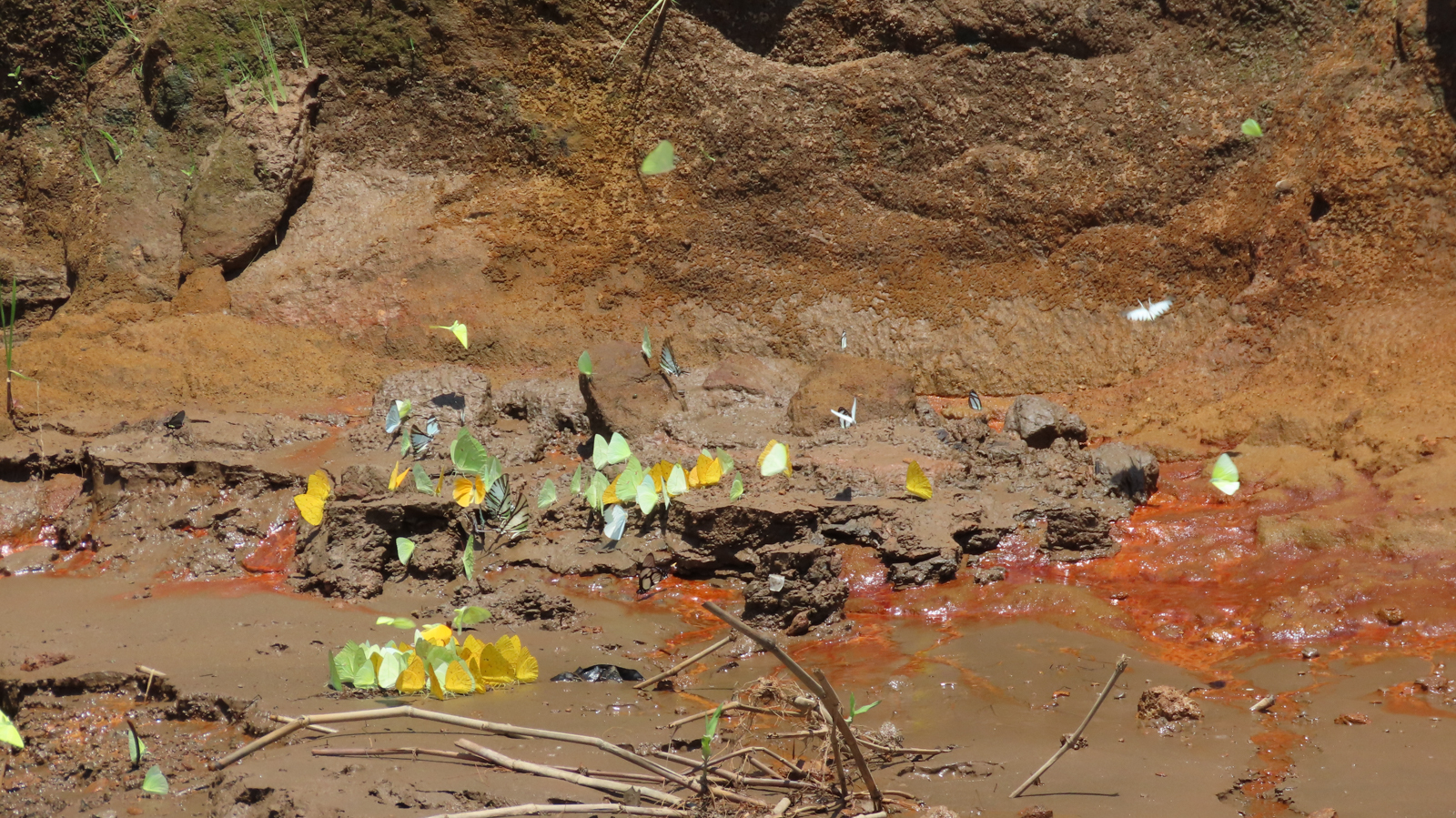
Puddling Butterflies © Ernesto Carman
Day 7. Refugio Amazonas Canopy Tower and trails
We walked to the canopy tower for sunrise and enjoyed amazing views of many new species including Ivory-billed Aracari, White-throated and Channel-billed Toucans, Waved Woodpecker, Purple-throated and Bare-necked Fruitcrow, Gray-headed and Plumbeous Kites, White-lored Tyrannulet, Olive Oropendola, Casdqued Cacique, Blue-crowned Trogon and White-bellied Parrots.
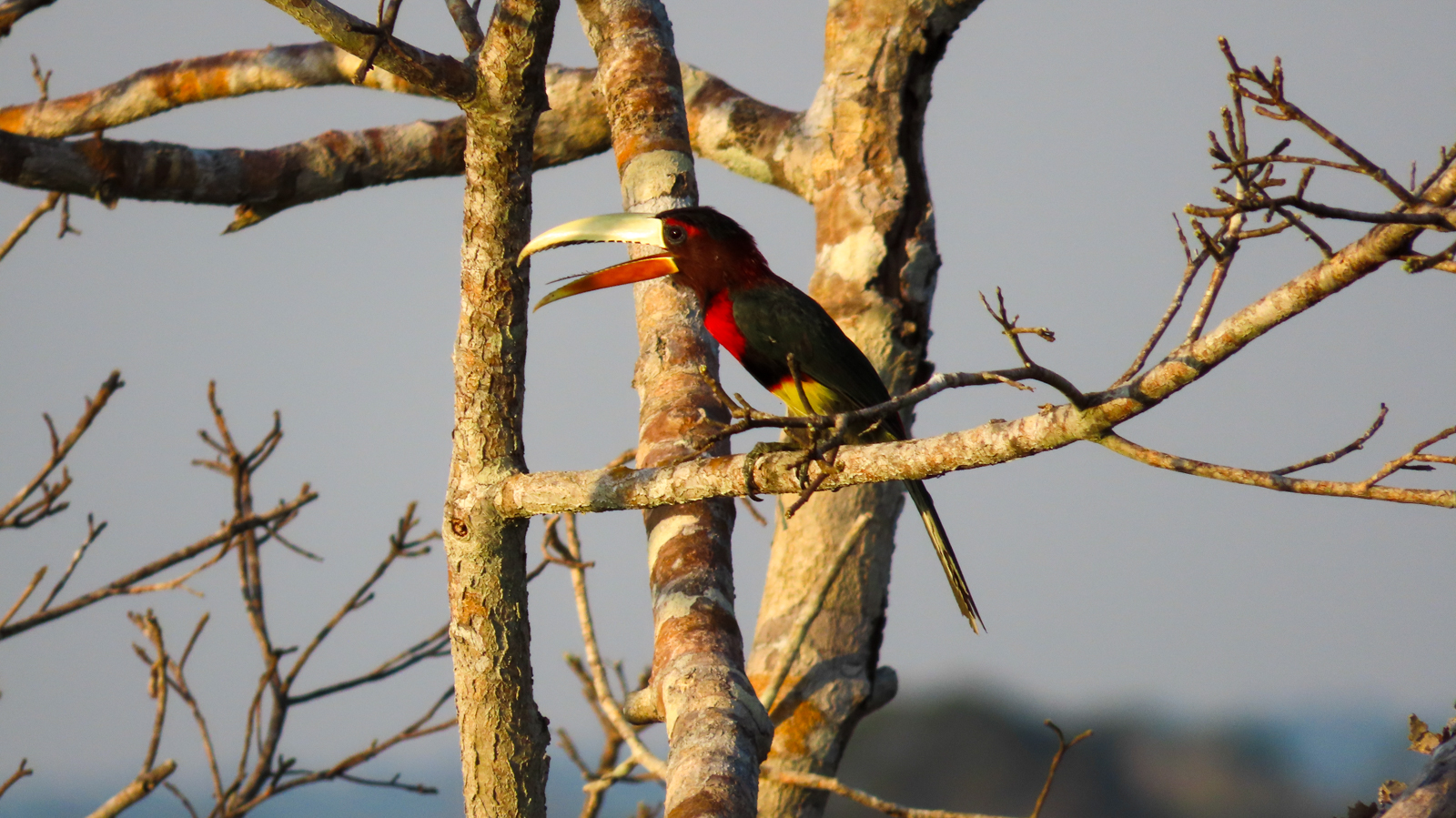
Ivory-billed Aracari © Ernesto Carman
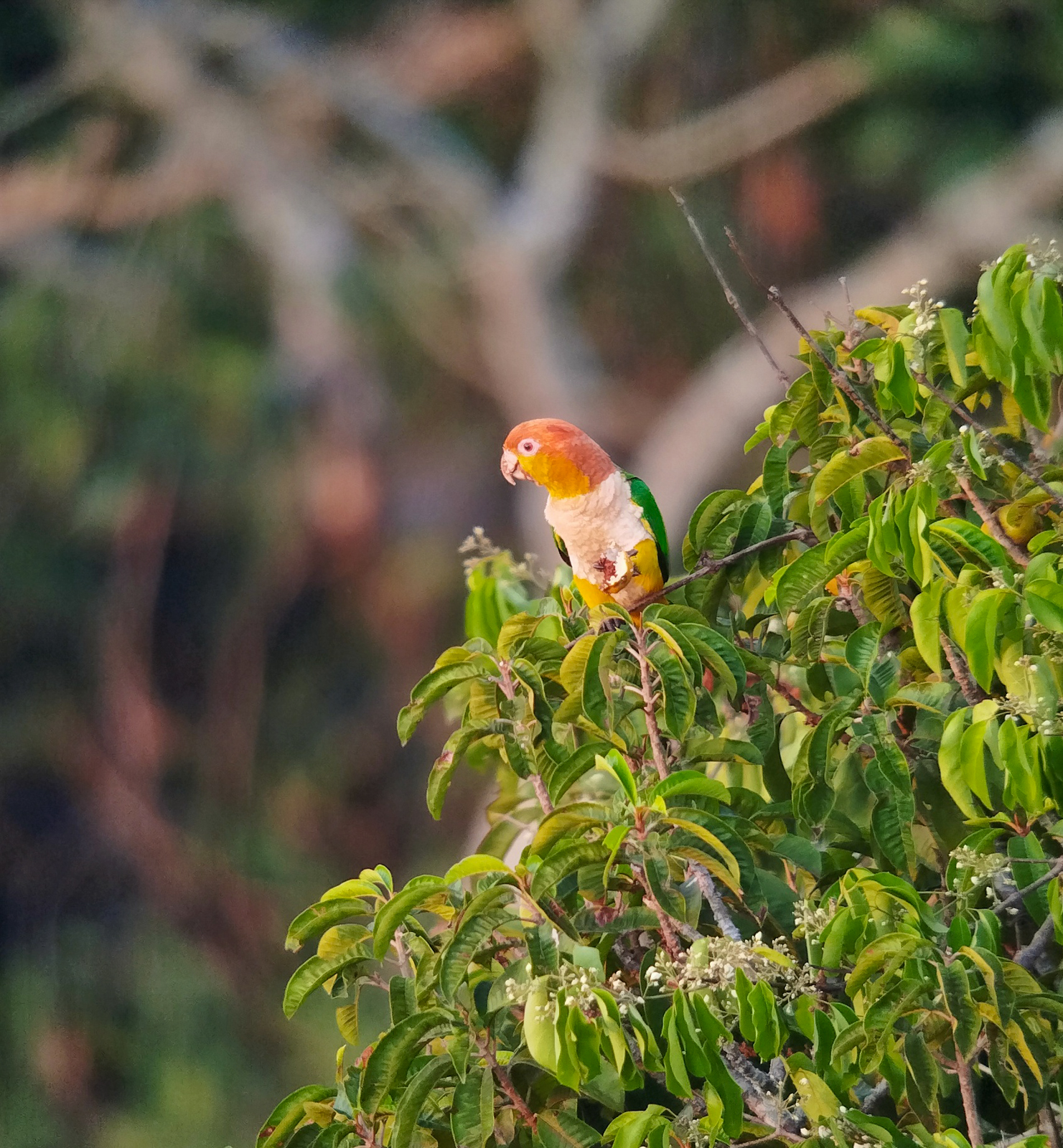
White-bellied Parrot © Ernesto Carman
After breakfast we walked a different combination of trails and found a few interesting species such as Spot-winged Antshrike and Chestnut-winged Hookbill, but the biggest surprise was extremely special. Silverio obtained special permission to visit a Harpy Eagle nest which is usually off limits for tourists, so we made the hike through the forest and reached a massive Brazil-nut tree, but from below we could barely see the edges of the nest and could hear the four-month old chick calling from the nest. It took us at least a half hour to find a window through the trees where the chick was visible and it was well worth it! The chick had already obtained its signature double-pointed Harpy crest and was looking around curiously, giving us fantastic views.
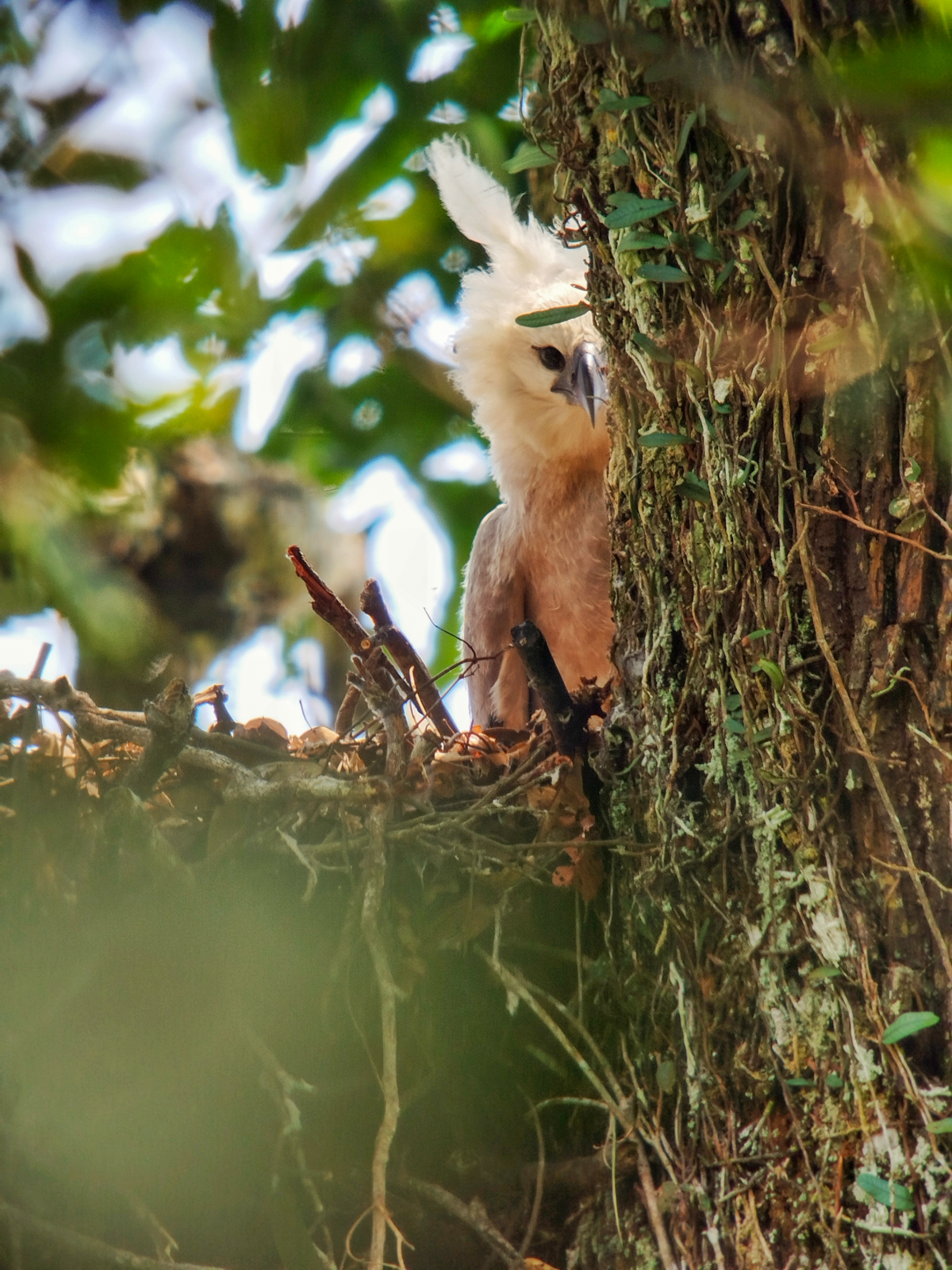
Harpy Eagle © Ernesto Carman
Extremely pleased, we walked back to the lodge for lunch and a siesta before heading back out in the late afternoon for another bit of birding near the lodge and saw Great Tinamou, Reddish Hermit, Black-faced and Rufous-capped Antthrush, Lawrence’s Thrush and Ruddy Spinetail.
Day 8. Transfer from Refugio Amazonas to Cusco
After breakfast we took a boat ride up the Tambopata and then boarded a bus to the airport in Puerto Maldonado where we caught a domestic flight into the heart of the high Andes, landing in Cusco to spend the night.
Day 9. Cusco, Sacred Garden Feeders and Wayqecha Lodge
After an early breakfast we were picked-up by our driver (Hilmar Cosme) and we headed out for our first highland birding in the dry inter-Andean valleys near Cusco and made our first stop at a small garden with feeders called the Sacred Garden where we saw Chiguanco Thrush, Black-backed Grosbeak, Cinereous Conebill, Eared Dove, Golden-billed Saltator and new hummingbirds including Sparkling Violetear, Geen-tailed and Black-tailed Trainbearers, the ridiculously large Giant Hummingbird and two Peruvian endemics, Green-and-white Hummingbird and the elegant Bearded Mountaineer. From here we began gaining elevation and stopped at several spots along the roadside, finding some very interesting birds at every stop, including Chestnut-bellied Mountain-Finch, White-browed Chat-Tyrant, Peruvian Sierra Finch, Creamy-crested Spinetail and Rusty-fronted Canastero. At another stop where the wind was chilling and made us add some layers, we found Andean Lapwing, Andean Ibis, Slender-billed Miner, Rufous-webbed Bush-Tyrant and Black-billed Shrike-Tyrant.
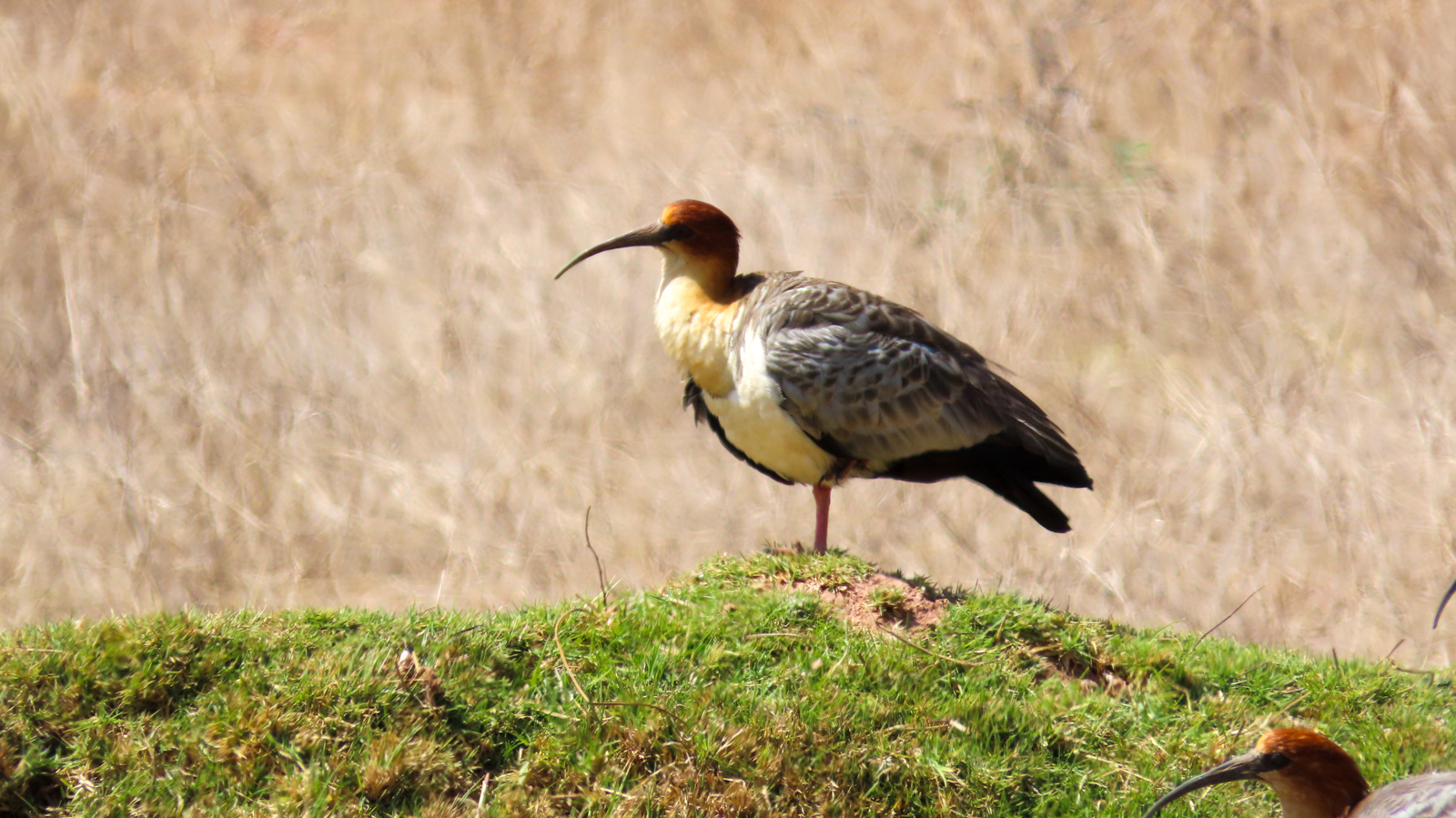
Andean Ibis © Ernesto Carman
After a lovely picnic lunch along the roadside we birded near some pre-Inca ruins and saw Spot-billed Ground-Tyrant and had better views of the Slender-billed Miner. After lunch we continued our way along the Manu Road and soon crested over the highest point and began dropping in elevation and as we did the vegetation changed drastically from the dry, grassy Puna to the moist cloudforest. We made one more stop before reaching our lodge and found Masked and Moustached Flowerpiercers, Mountain Cacique and fantastic views of Gray-breasted Mountain-Toucan.
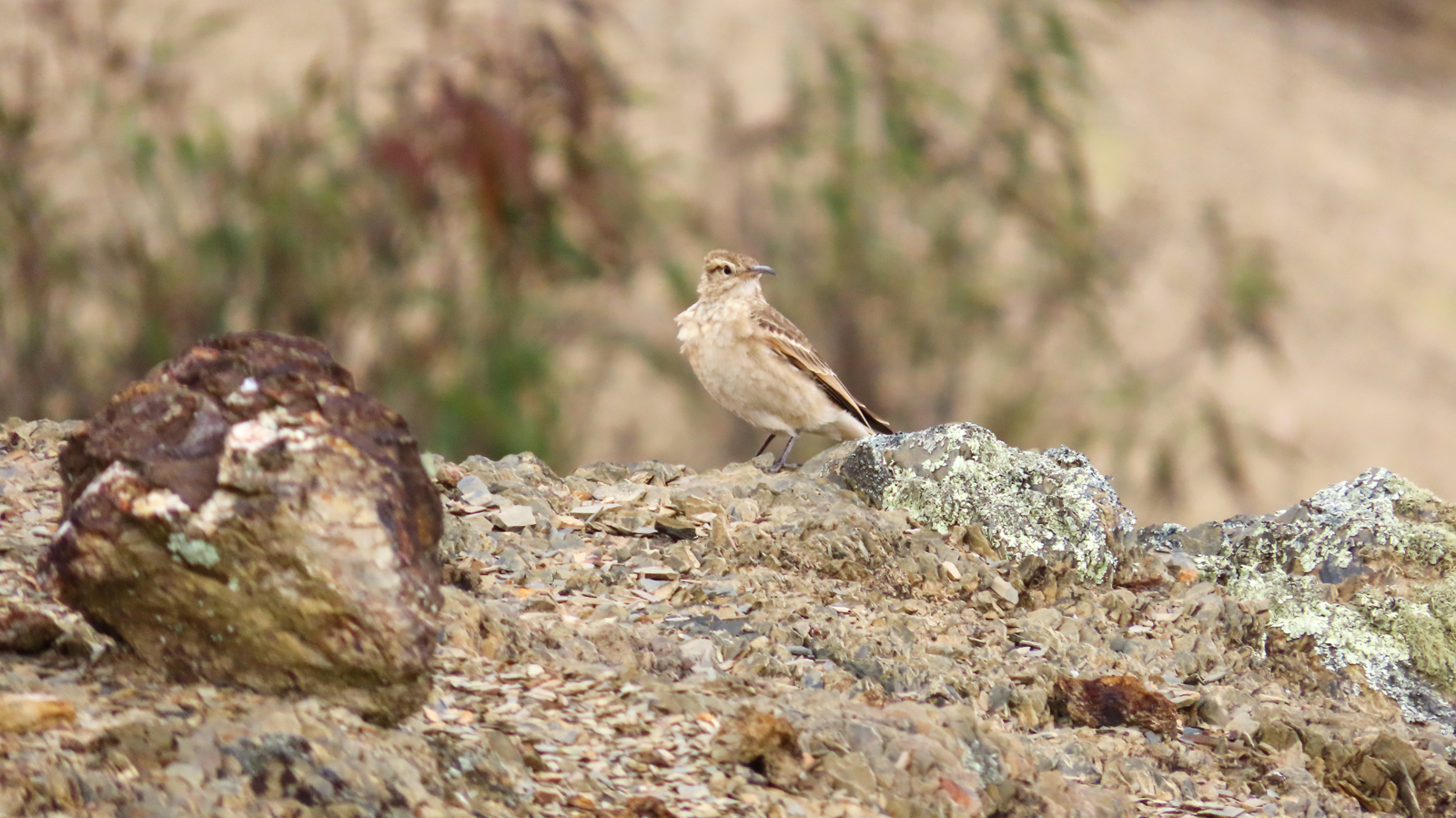
Slender-billed Miner © Ernesto Carman
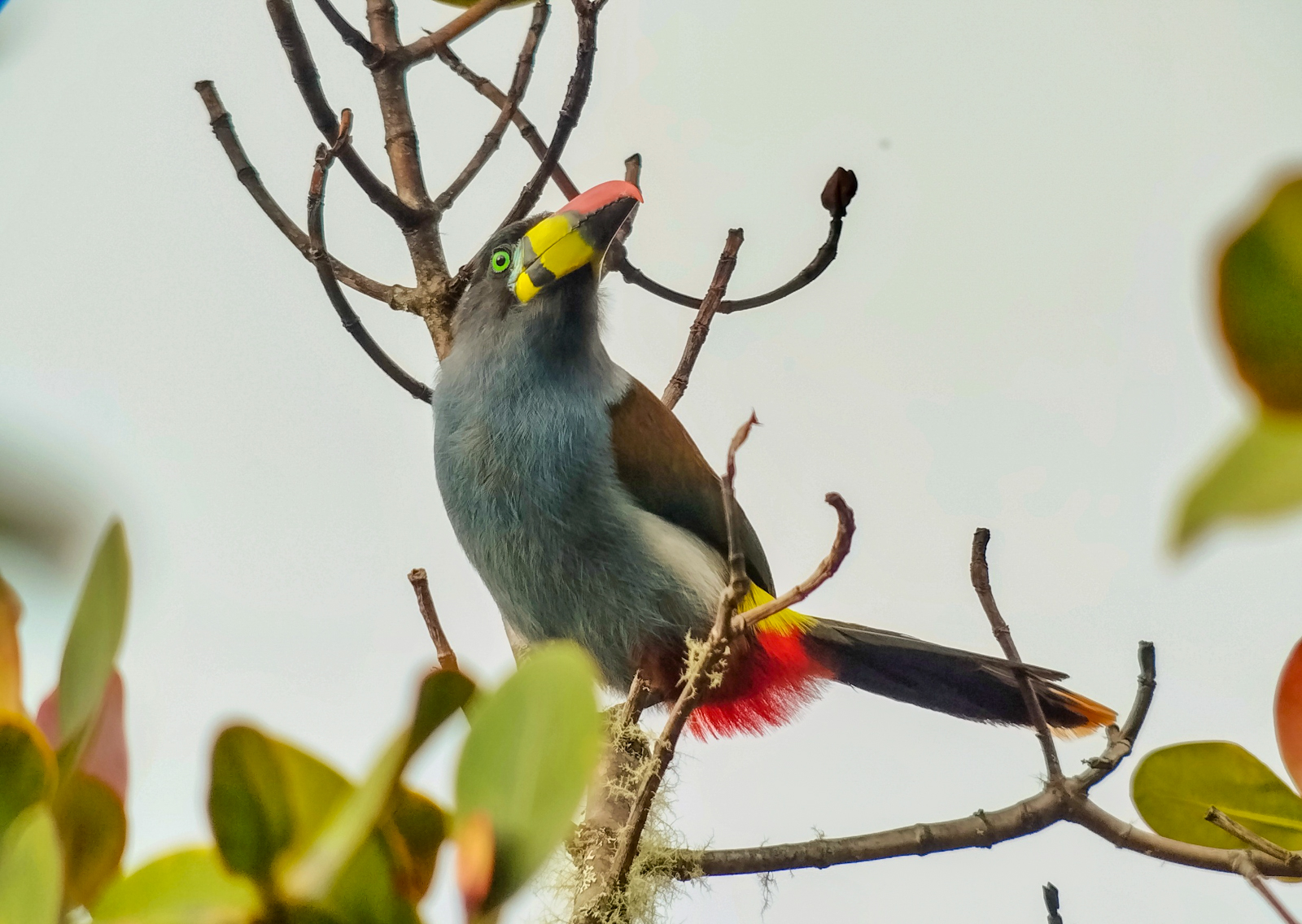
Gray-breasted Mountain-Toucan © Ernesto Carman
Day 10. Wayqecha Lodge to Cock-of-the-Rock Lodge
We gathered for coffee and birding in front of the lodge and the feeders were soon active with Andean Guans, Great Thrush, Blue-capped Tanager, Grass-green Tanager, Golden-collared Tanager, Hooded Mountain-Tanager, Violet-fronted Starfrontlet, Chestnut-breasted Coronet, White-bellied Woodstar and Amethyst-throated Sunangel.
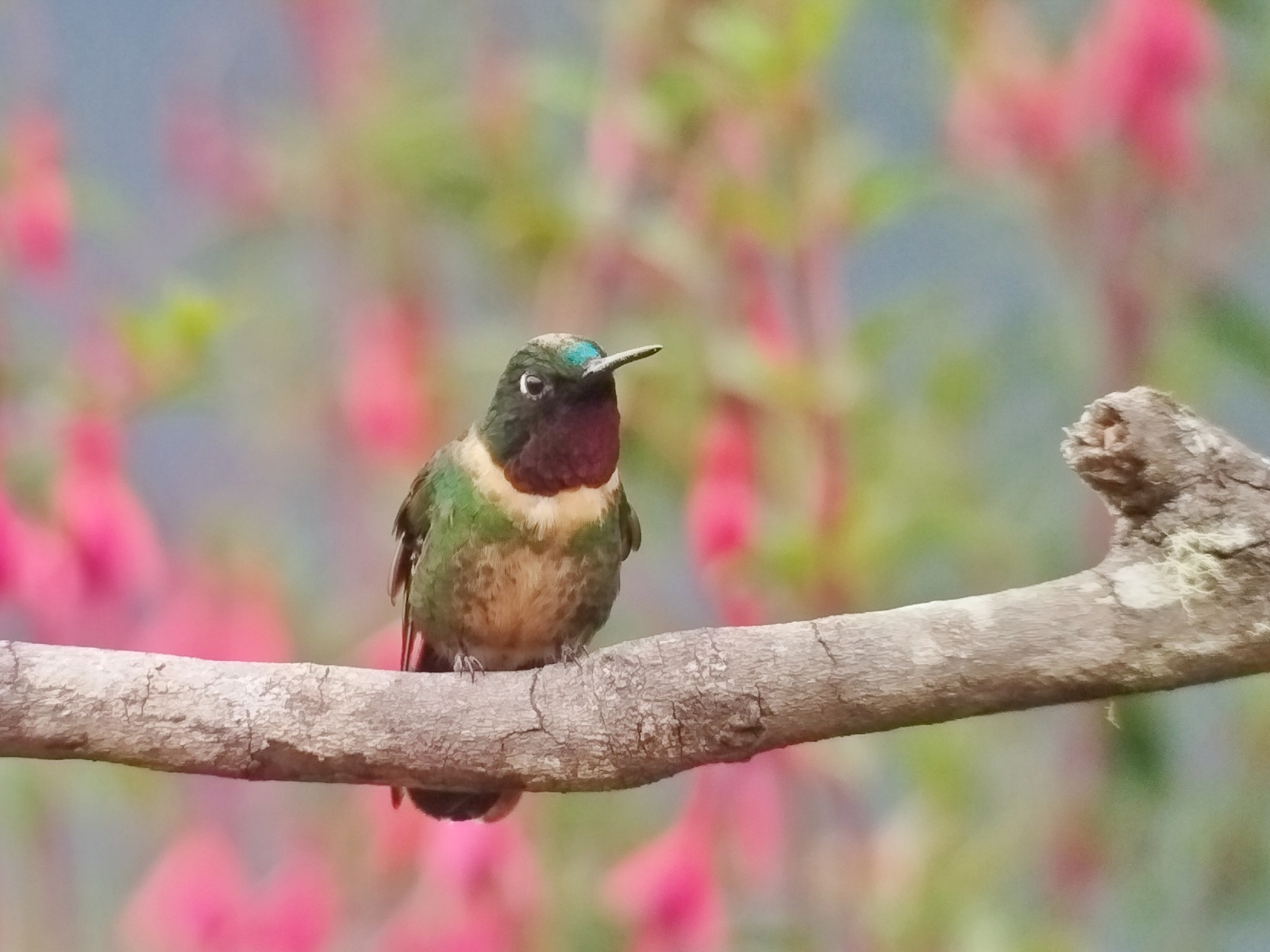
Amethyst-throated Sunangel © Ernesto Carman
Before having breakfast we walked a short trail for our first antpitta experience where the local staff feed a pair of Urubamba Antpittas which gave us an amazing show! But these were not the only antpittas they have trained, so after breakfast we packed the vehicle and went to see two more species of Antpitta: Leymebamba and Red-and-white.
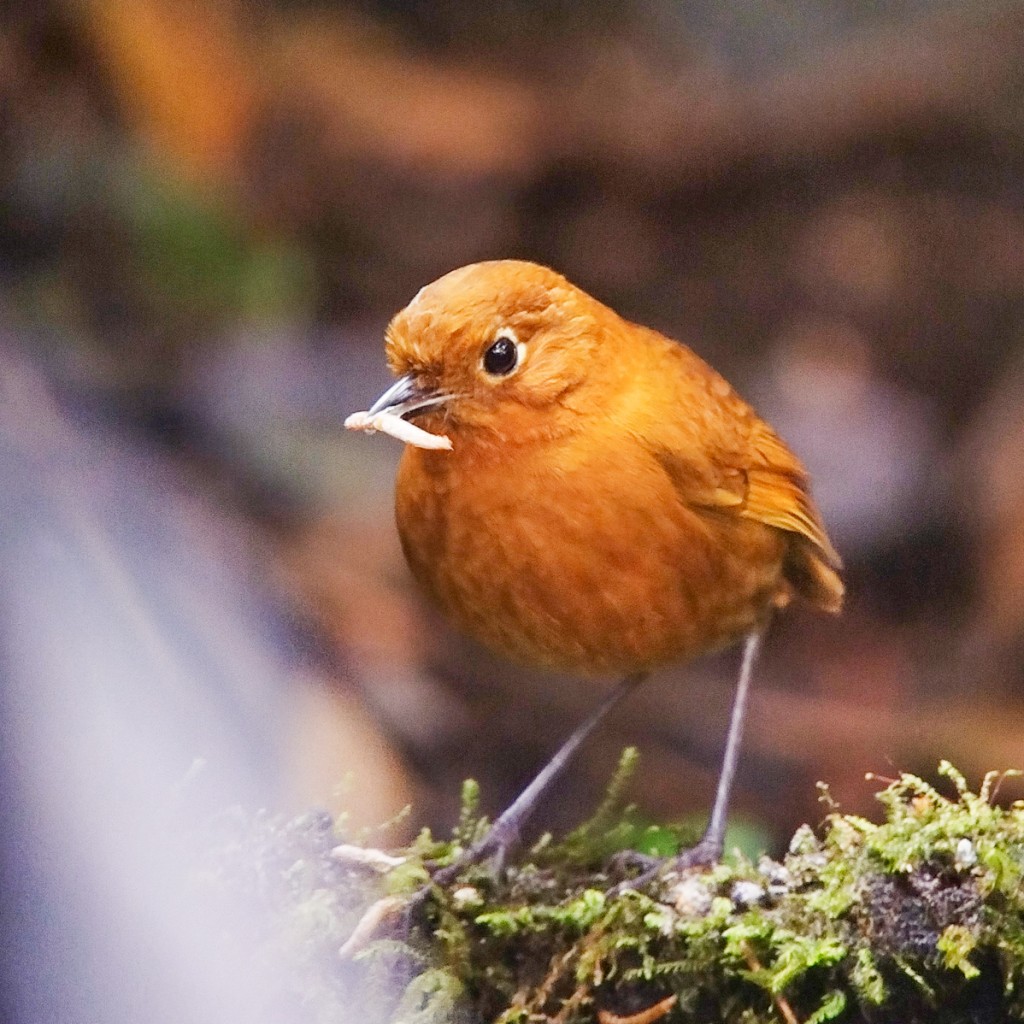
Urubamba Antpitta © Ernesto Carman
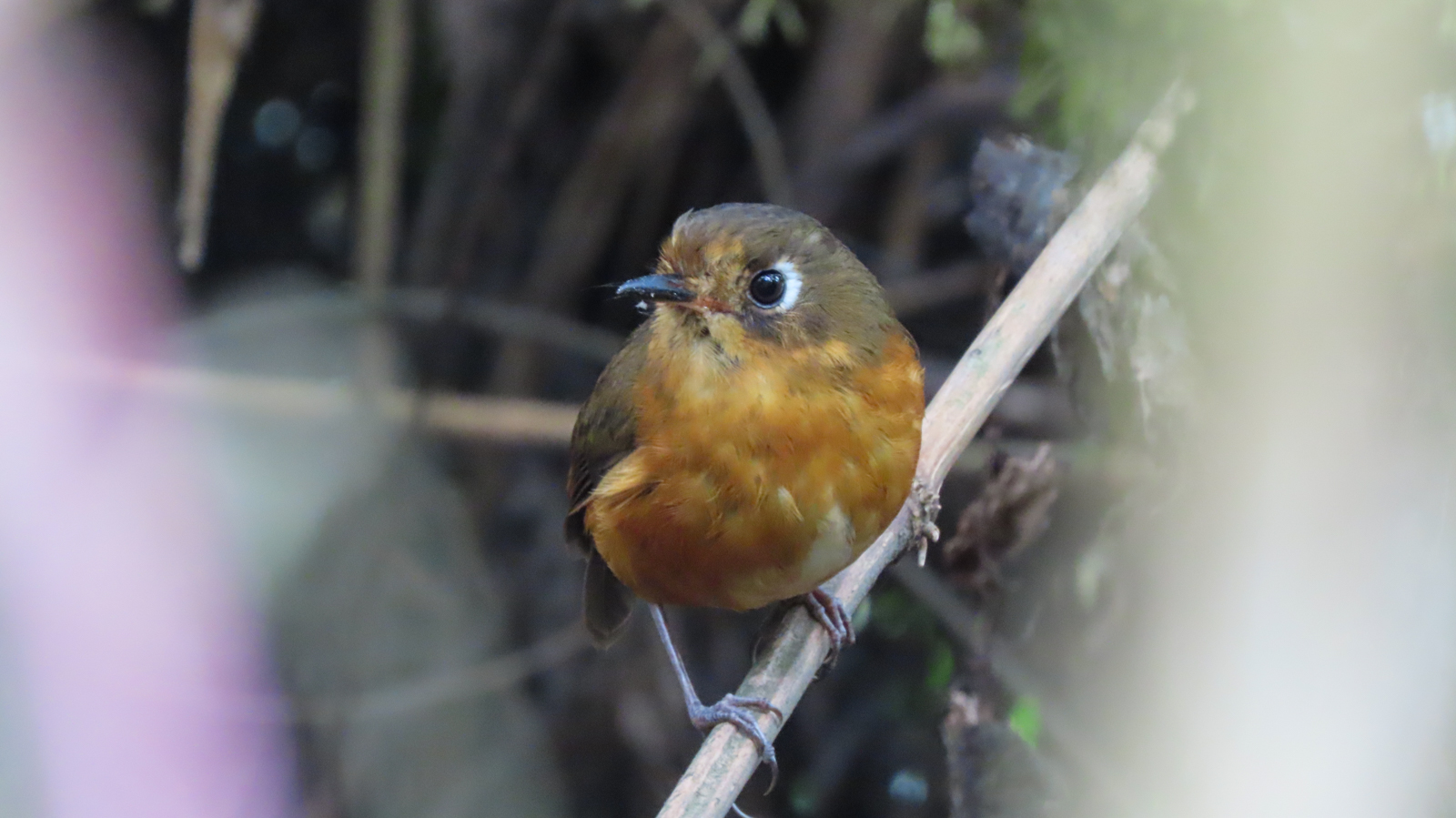
Leymebamba Antpitta © Ernesto Carman
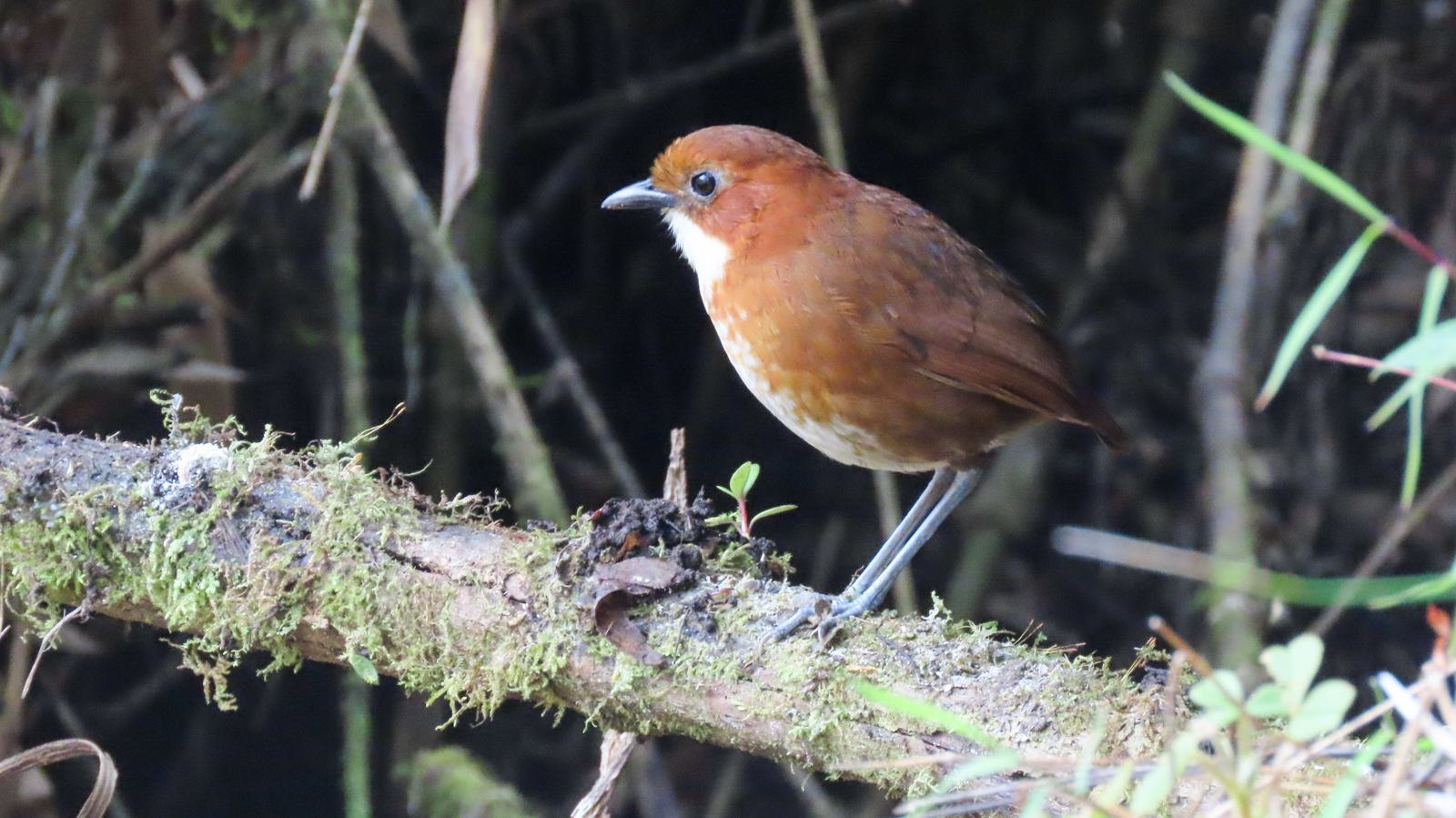
Red-and-white Antpitta © Ernesto Carman
After such satisfying views of these usually very difficult birds, we began birding our way down the famous Manu Road and it certainly lived up to its name. We encountered our first mixed flock and began seeing lifers left and right with Golden-headed Quetzal, Blue-banded Toucanet, Red-crested and Chestnut-crested Cotingas, Andean Solitaire, Spectacled Redstart, Chestnut-collared Swifts, Marcapata Spinetail, Band-tailed Fruiteater, Citrine Warbler, Plushcap and many others! Further down the road we spotted Masked Trogon, Maroon-belted Chat-Tyrant, Pearled Treerunner, Montane and Olive-backed Woodcreepers, Cinnamon Flycatcher and the gorgeous White-collared Jay.
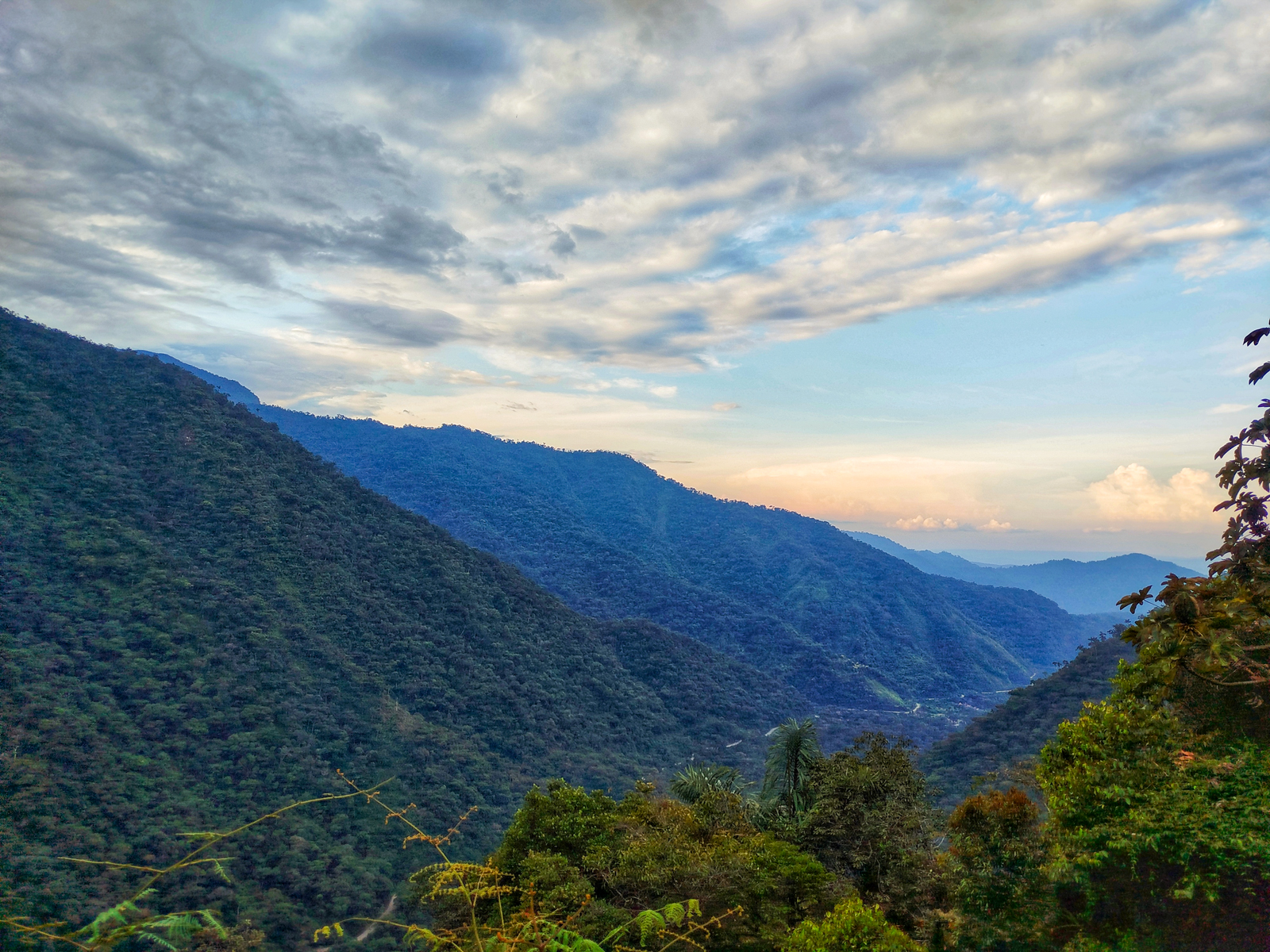
Manu Road © Ernesto Carman
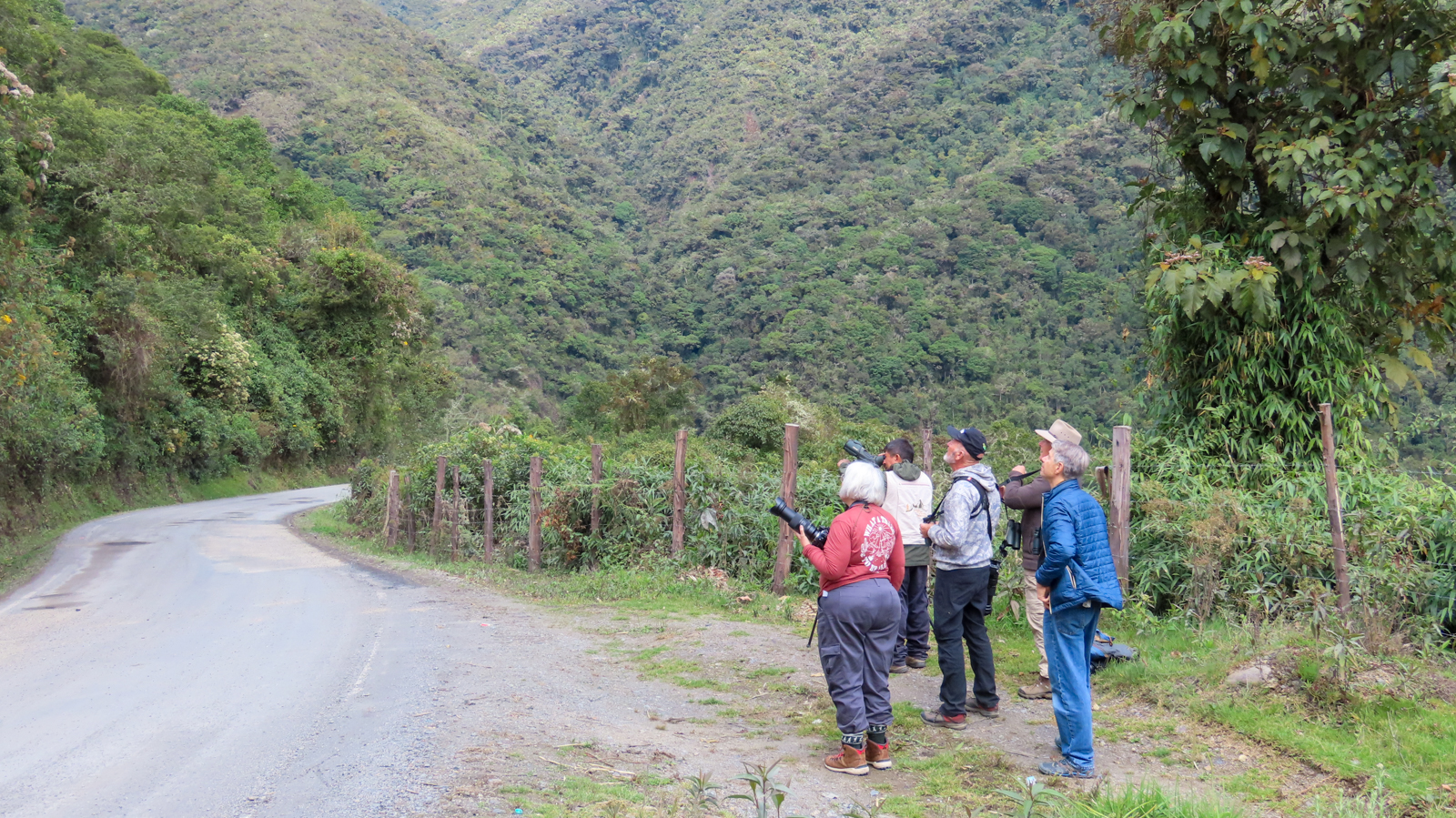
Birding Manu Road © Ernesto Carman
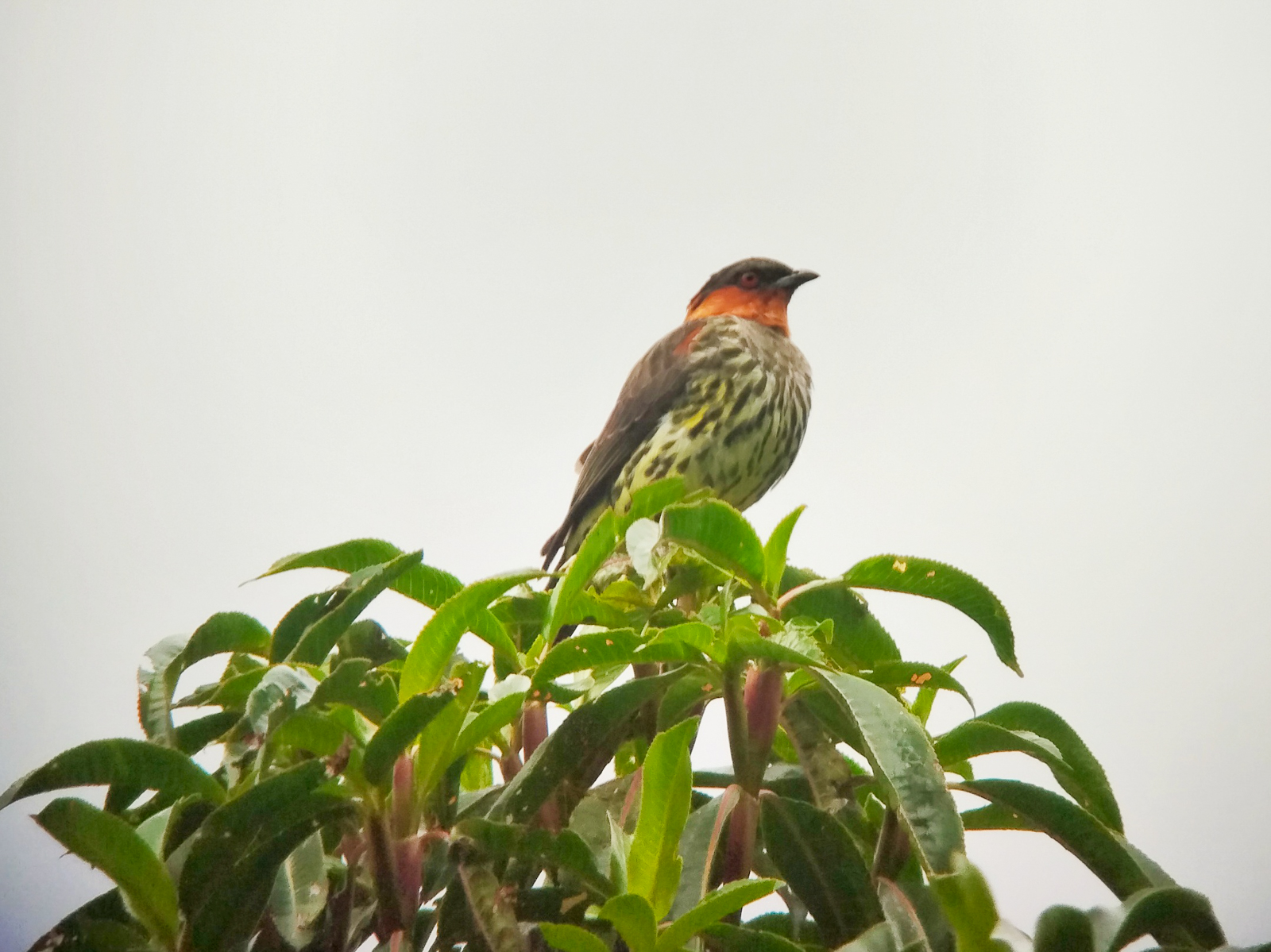
Chestnut-crested Cotinga © Ernesto Carman
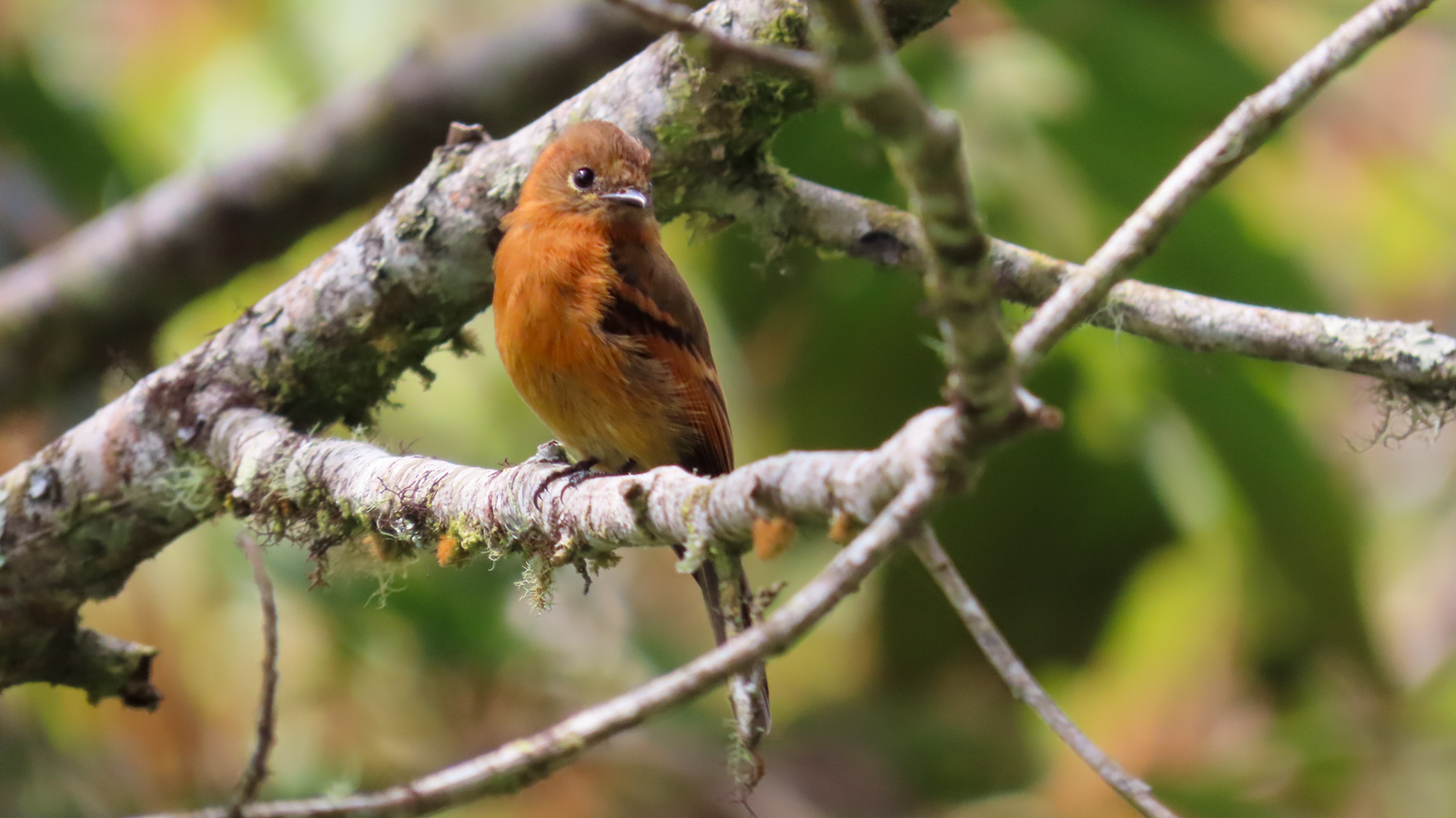
Cinnamon Flycatcher © Ernesto Carman
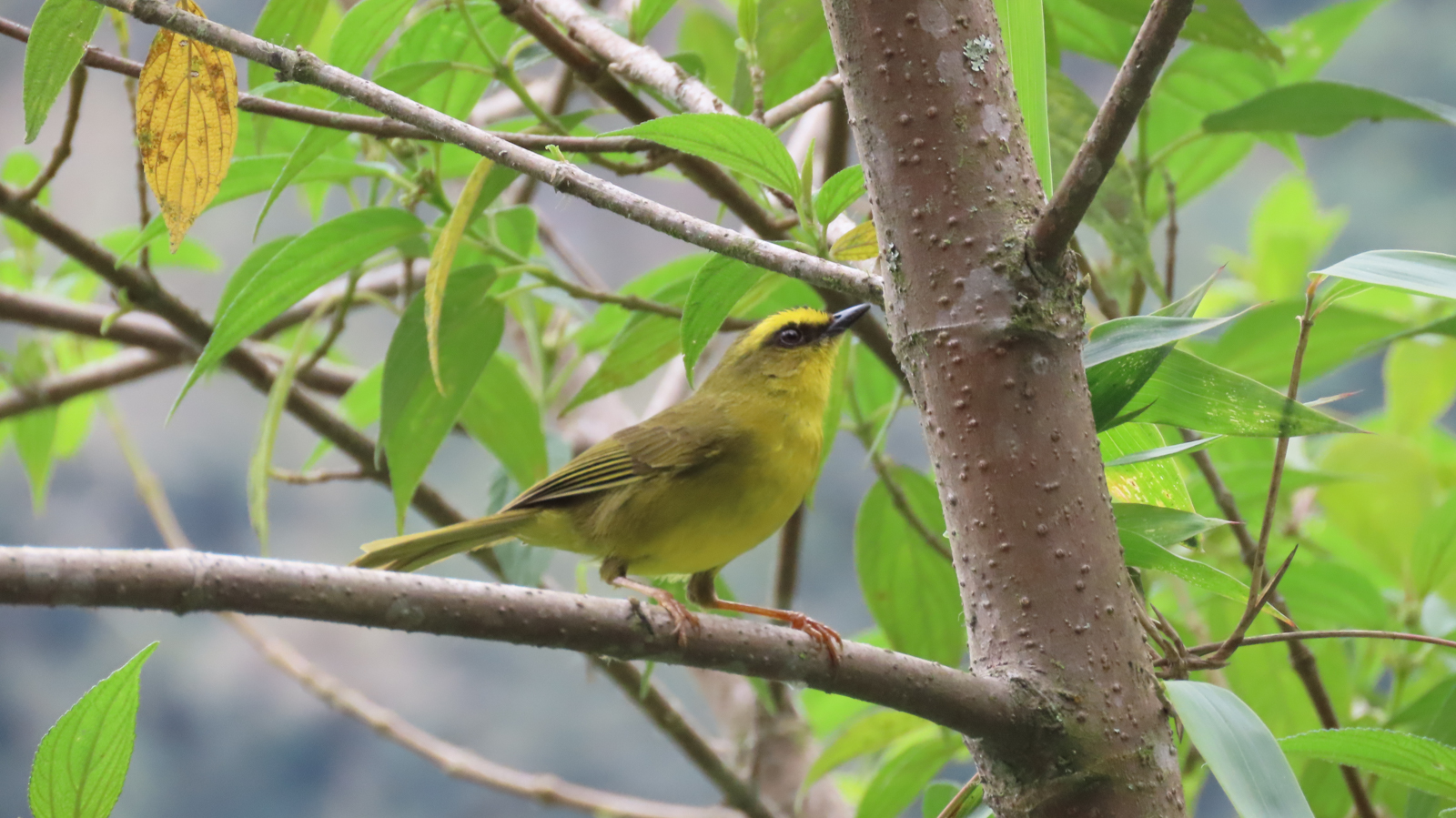
Citrine Warbler © Ernesto Carman
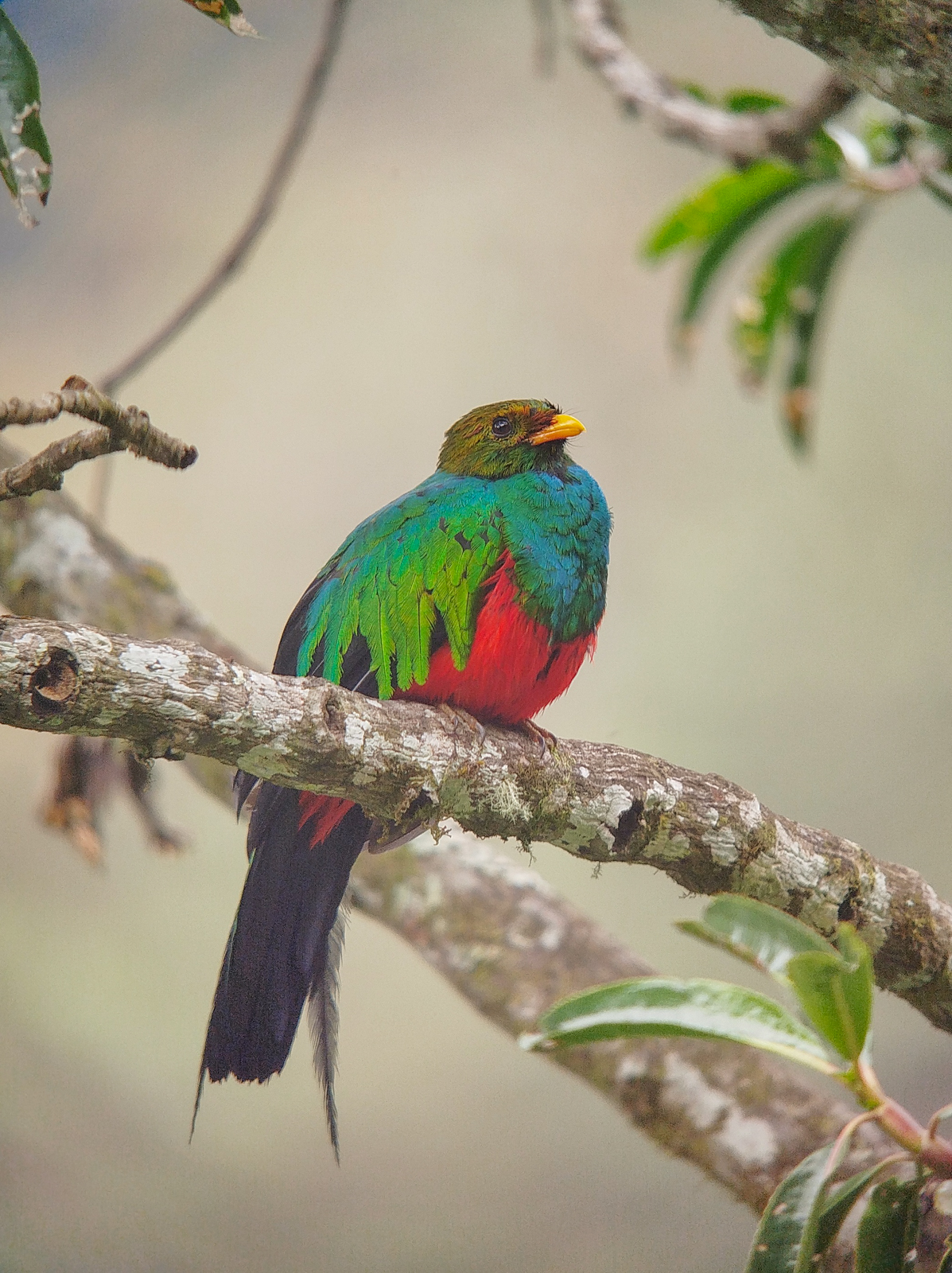
Golden-headed Quetzal © Ernesto Carman
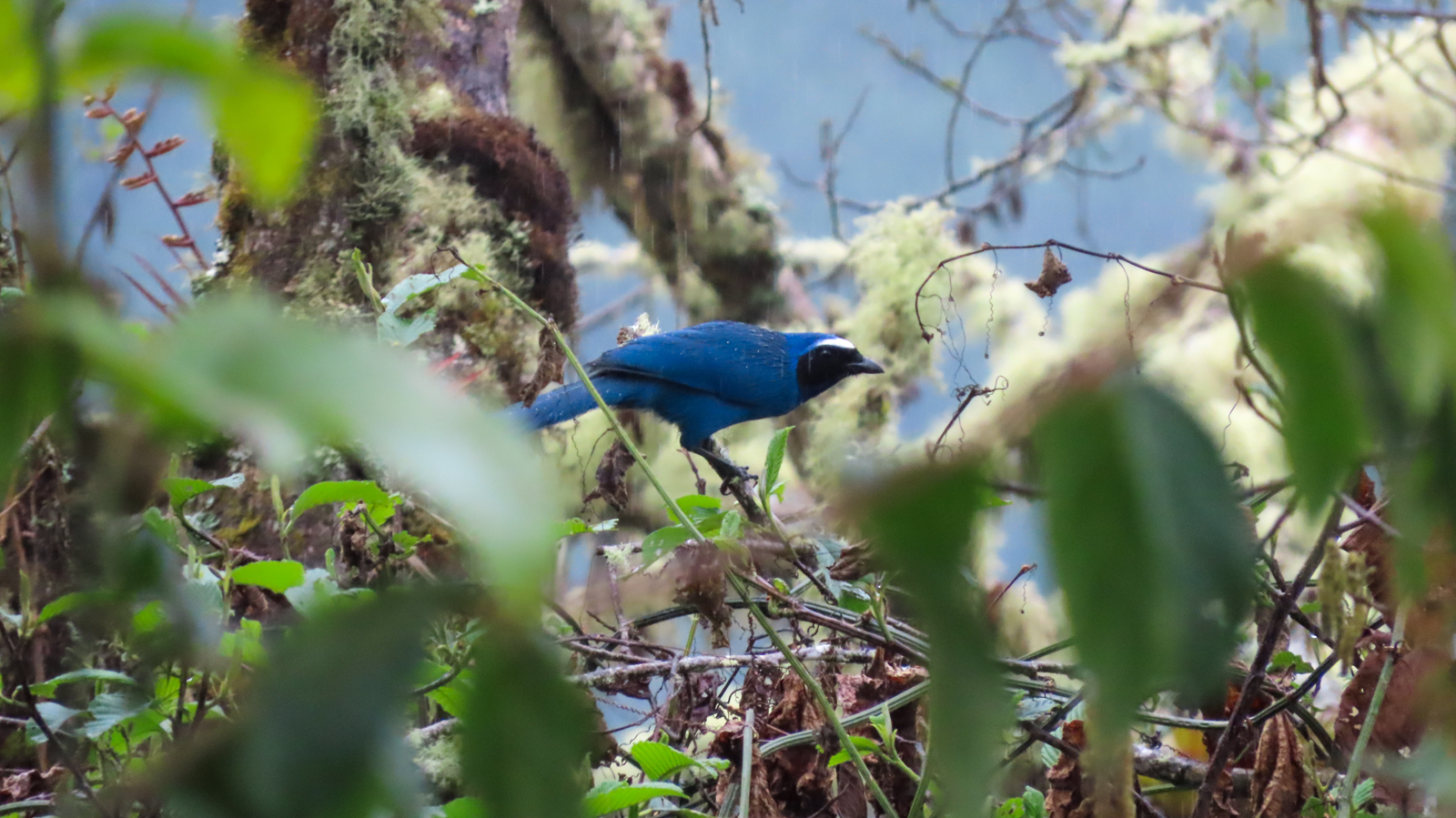
White-collared Jay © Ernesto Carman
After our picnic lunch we stopped a few more times and found Black-streaked Puffbird, Versicolored Barbet, Crimson-mantled Woodpecker, Variegated Bristle-Tyrant, Yellow-throated Tanager and Deep-blue Flowerpiercer.
Day 11. Cock-of-the-rock Lodge and Manu Road
We began our day as usual with coffee and birds watching the feeders behind the dining room and saw Violet-fronted Brilliant, Wire-crested Thorntail, Fork-tailed Woodnymph, Many-spotted Hummingbird, Speckled Chachalaca, Golden Tanager, Orange-bellied Euphonia and Blue-necked Tanager. After breakfast we continued birding the road above the lodge and saw Mottle-backed Elaenia, Chestnut-backed Antshrike, Stripe-chested Antwren, Lemon-browed Flycatcher, Spotted Tanager, Paradise, Golden, Beryl-spangled and Orange-eared Tanagers. A short distance up the road we got out and Silverio pointed out a Solitary Eagle on a nest, which despite the distance we had good scope views of the mother and the chick. The rest of the morning was hotter than the day before and activity was a little slower, but we still saw many great species such as Scale-crested Pygmy-Tyrant, Golden-olive Woodpecker, Three-striped Warbler and Crested Quetzal.
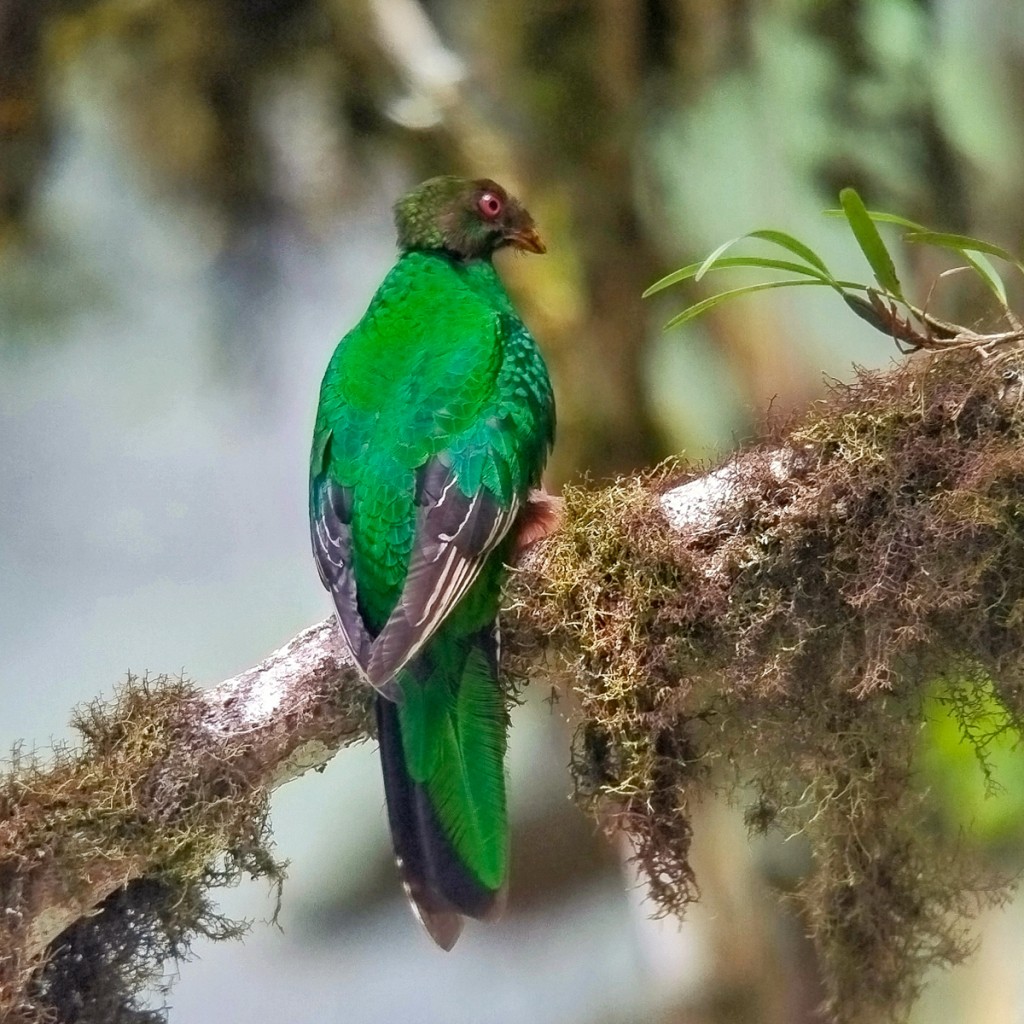
Crested Quetzal © Ernesto Carman
After lunch we set out mid-afternoon with a few specific goals in mind, the first one being the Andean Cock-of-the-Rock which we had an impressive spectacle at a lek, watching them perform at a rather close distance!
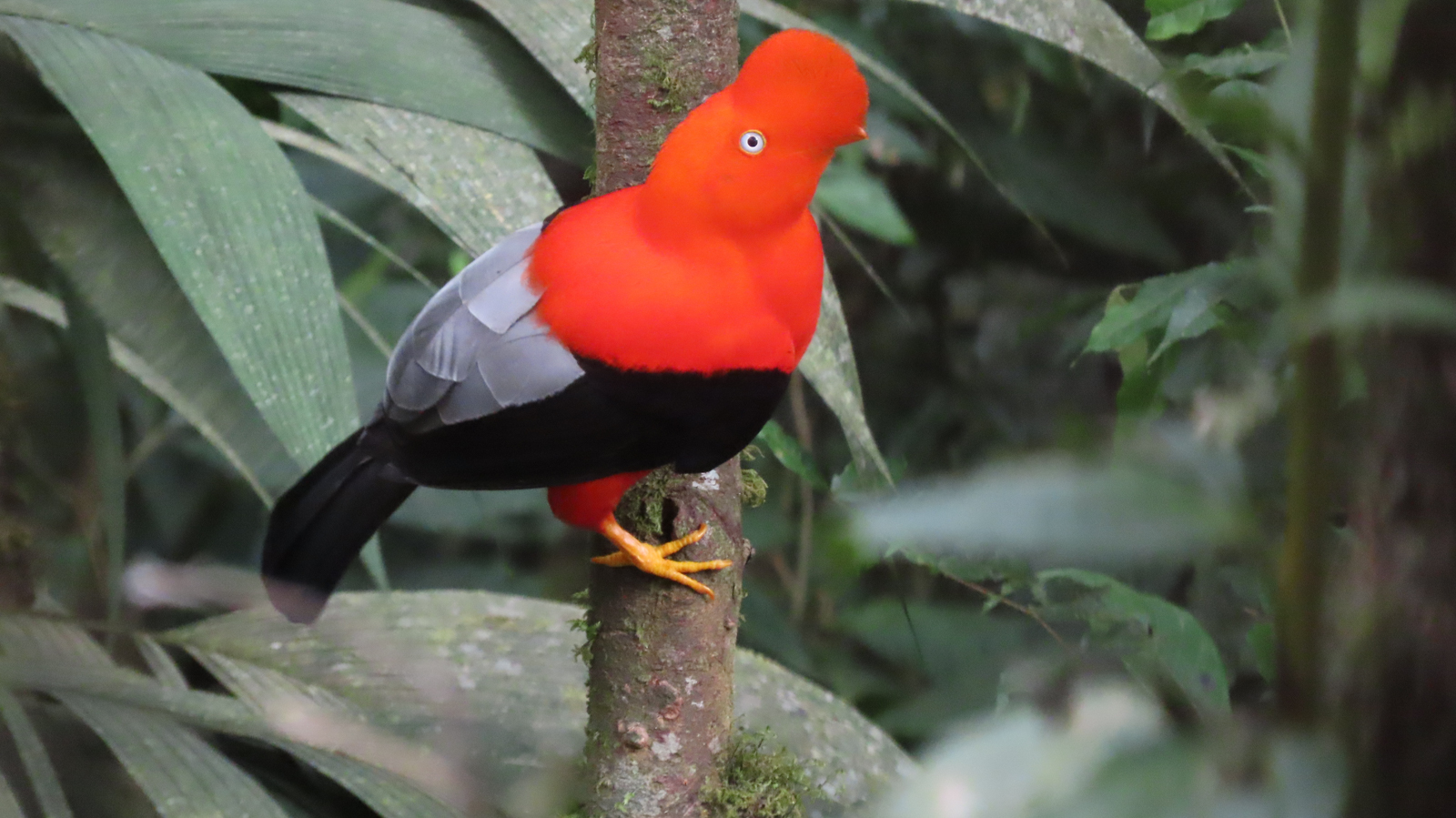
Andean Cock-of-the-rock © Ernesto Carman
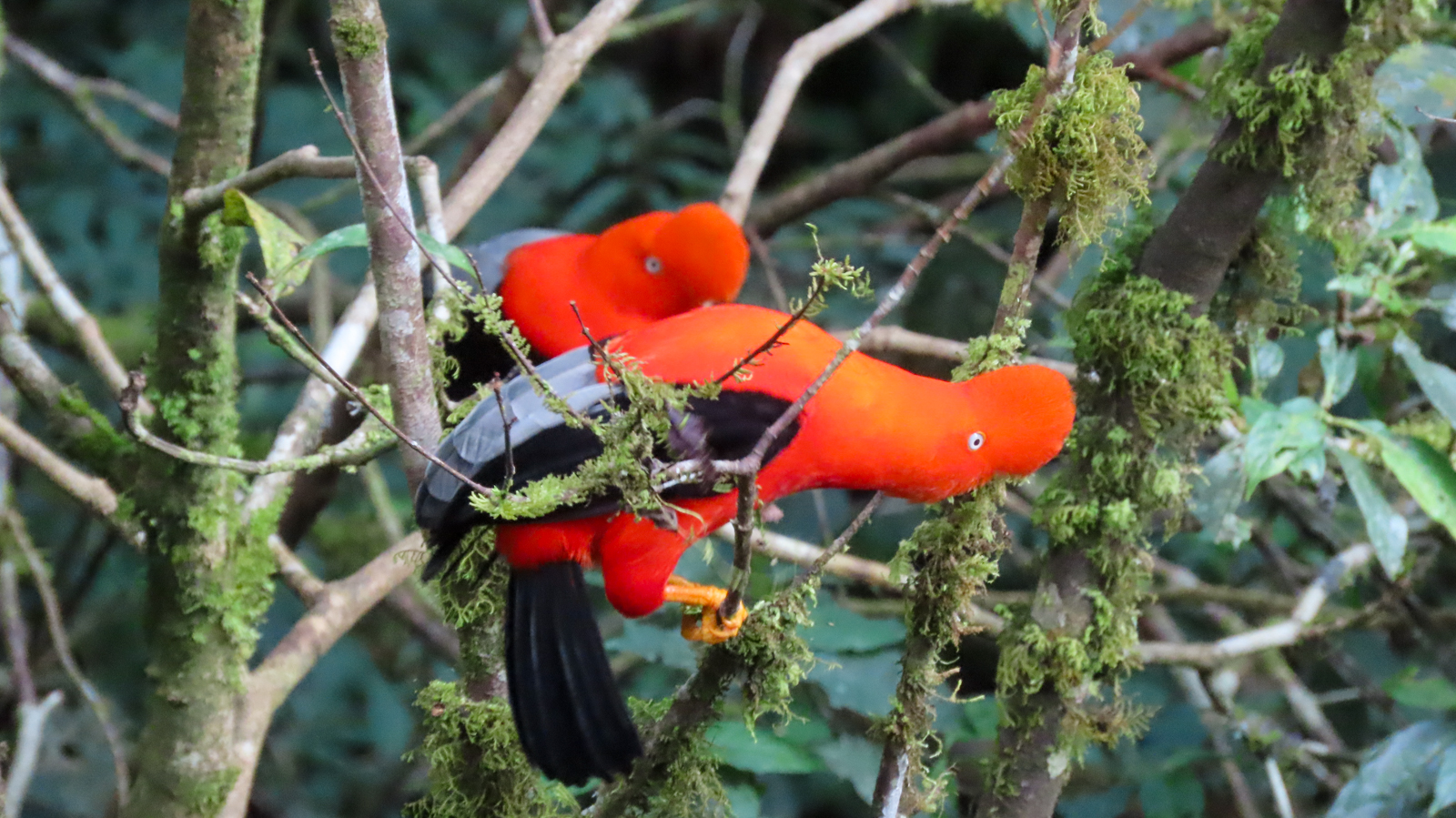
Andean Cock-of-the-rock at lek © Ernesto Carman
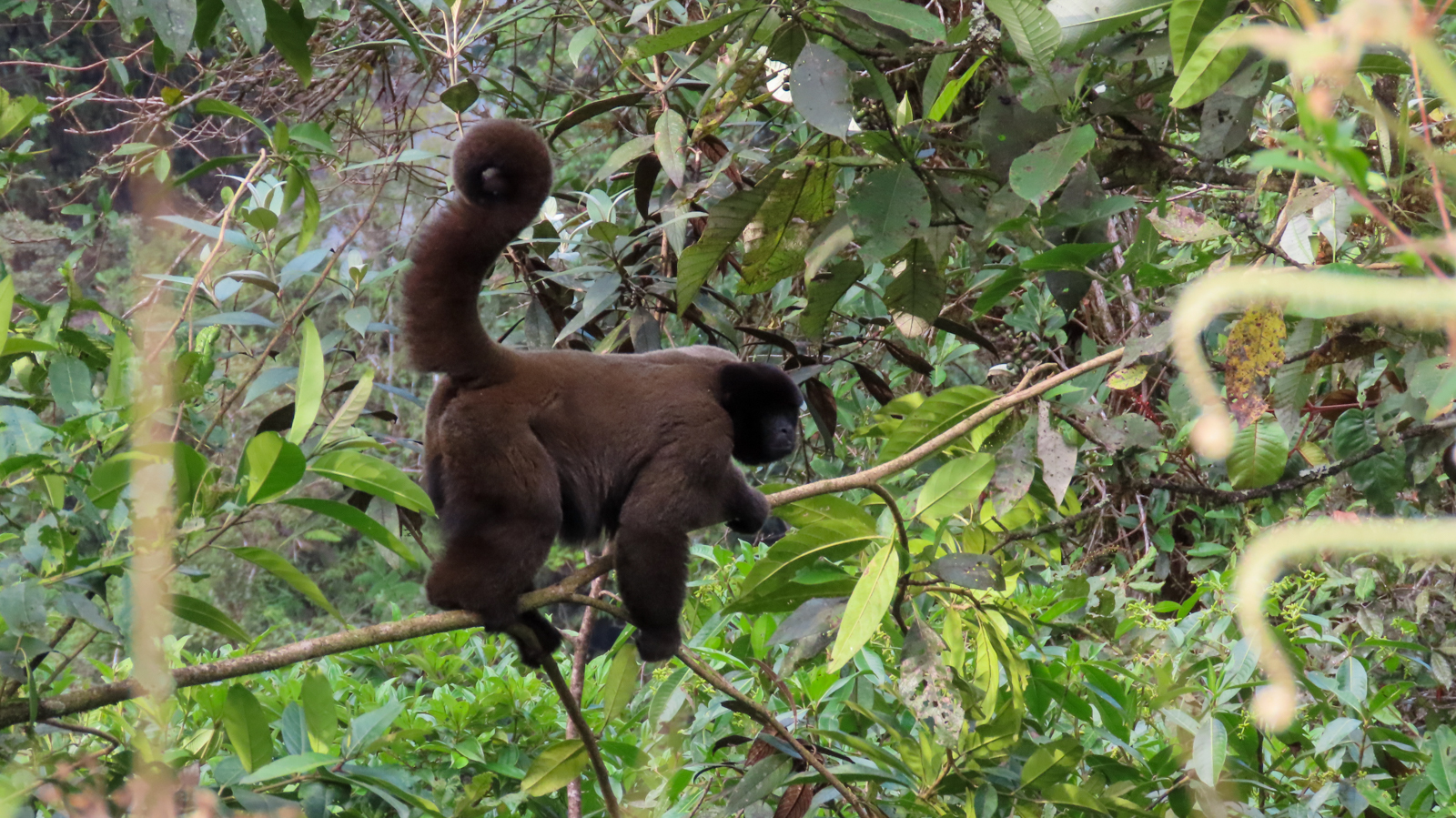
Gray Woolly Monkey © Ernesto Carman
After the lek we encountered a small troop of Gray Woolly Monkeys below eye level on the roadside and we had spectacular views and got fantastic photos!
We then spent some time at a feeding station where we birded and waited for it to get dark so we could look for two nocturnal species. At the feeding station we had the usual hummingbirds and Bronzy Inca, Rufous-booted Rackettail, Golden-collared Honeycreeper, Golden-eared, Golden, Golden-naped, Blue-necked and Spotted Tanagers and male and female Versicolored Barbet. After nightfall we were successful finding Rufescent Screech-Owl and Lyre-tailed Nightjar before having dinner and getting some rest.
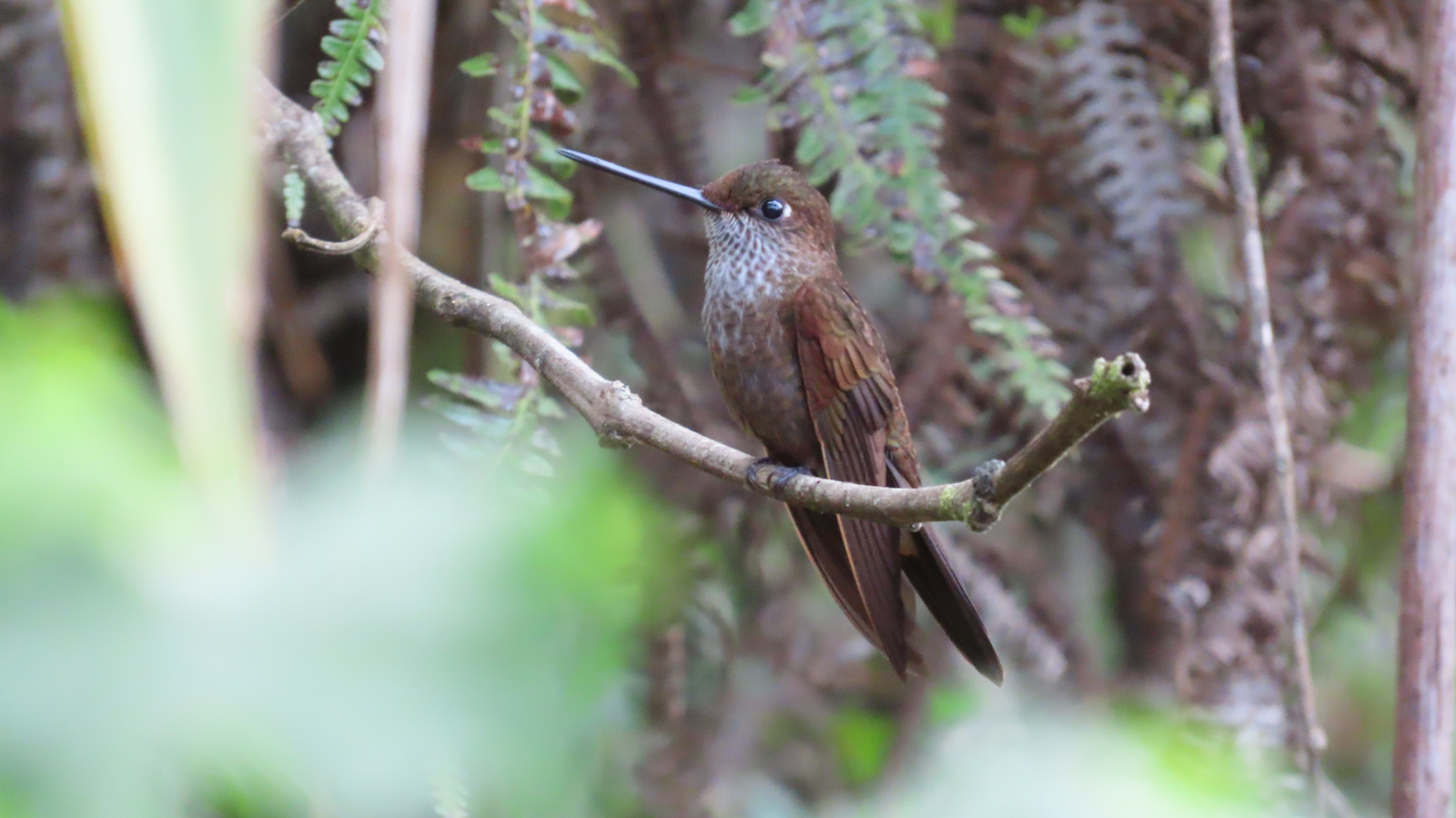
Bronzy Inca © Ernesto Carman
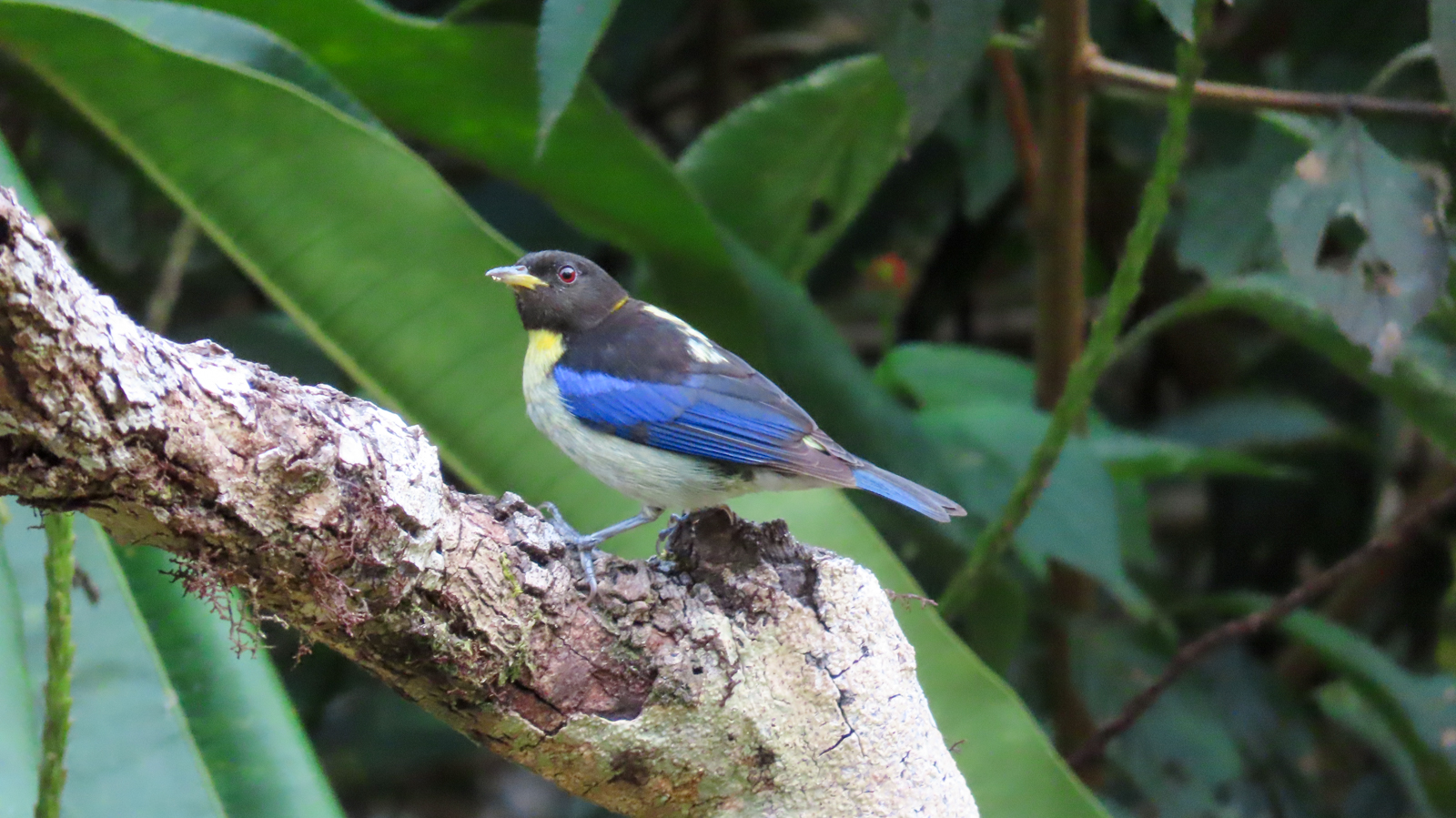
Golden-collared Honeycreeper © Ernesto Carman
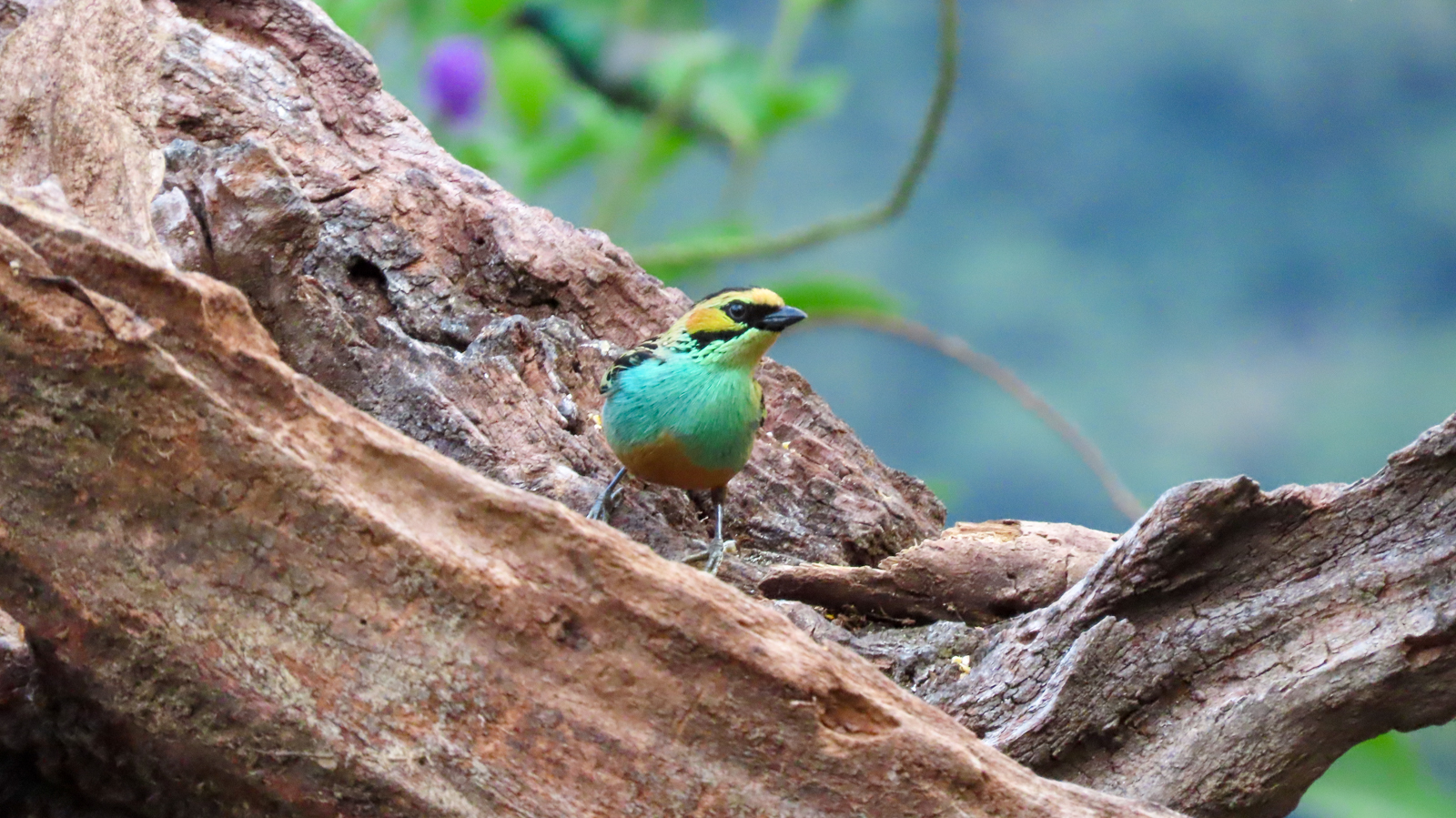
Golden-eared Tanager © Ernesto Carman
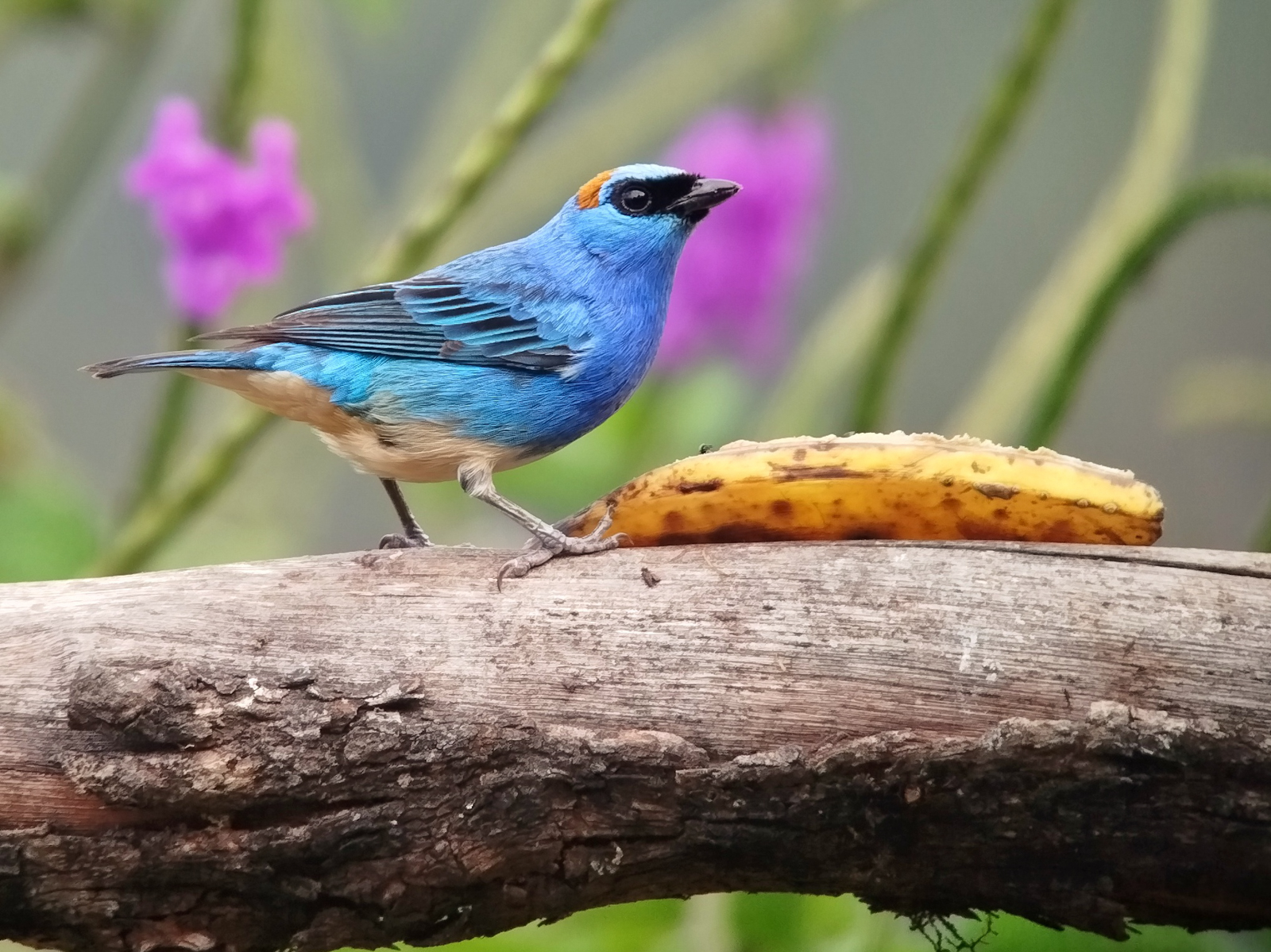
Golden-naped Tanager © Ernesto Carman
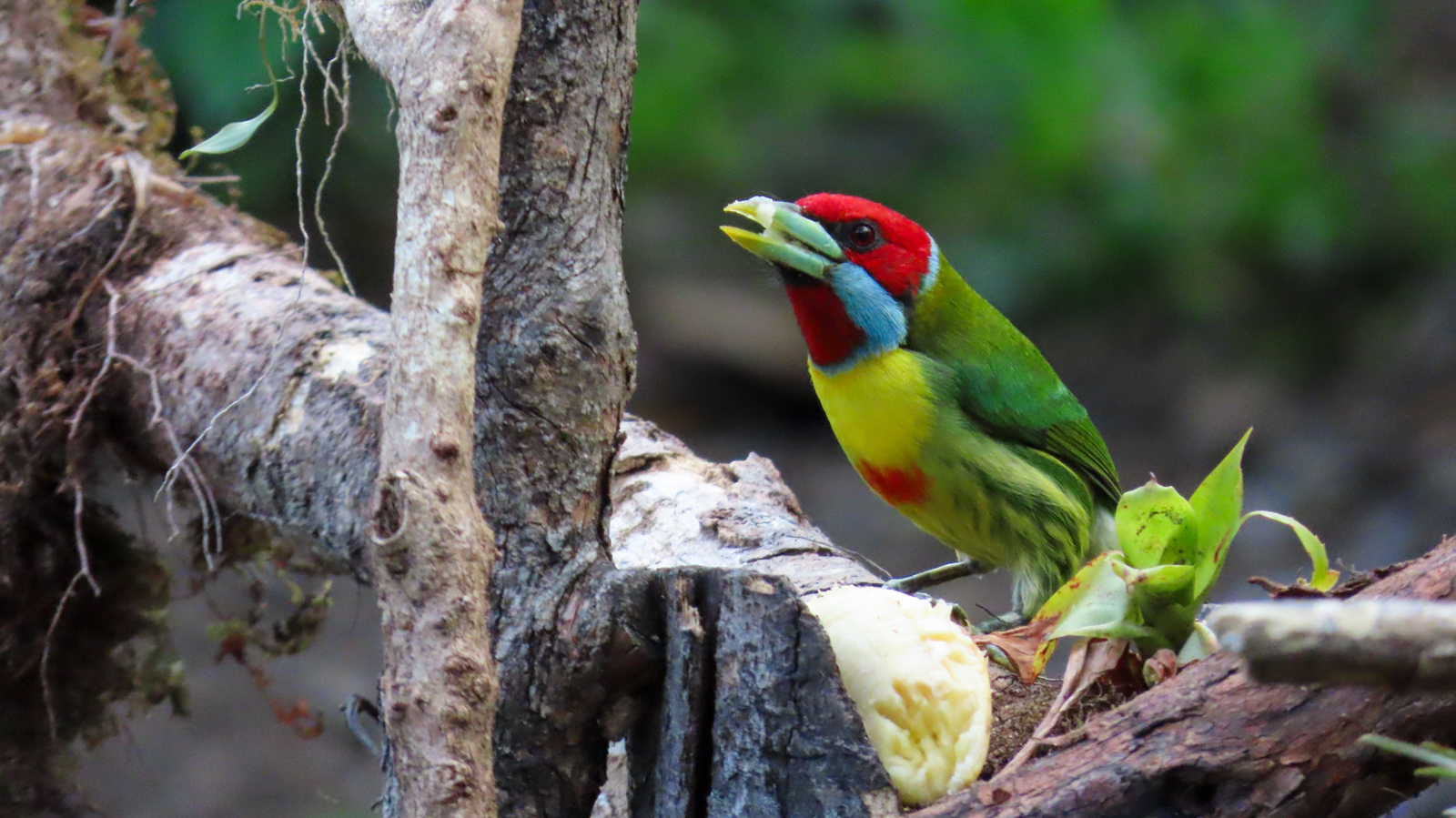
Versicolored Barbet © Ernesto Carman
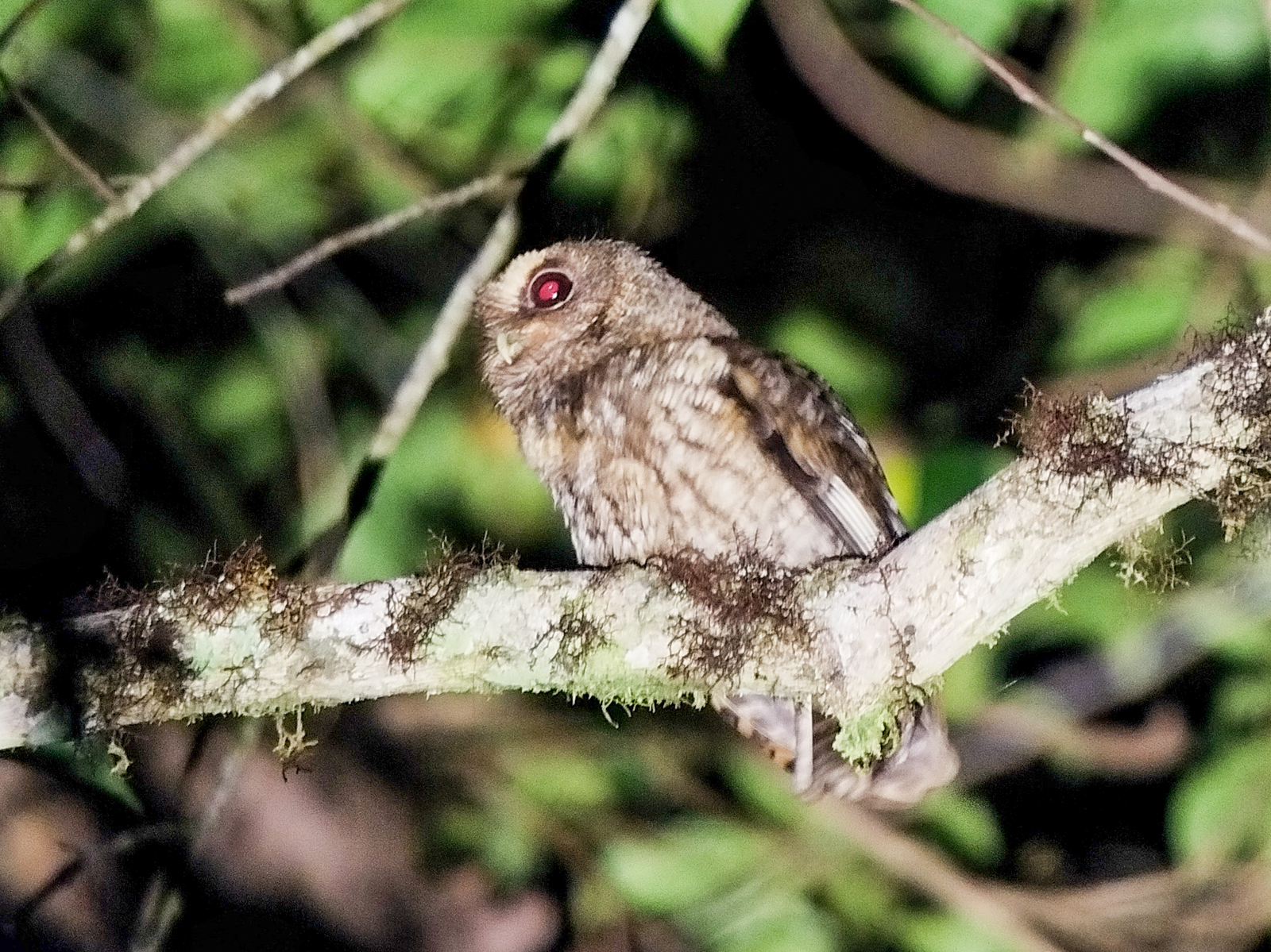
Rufescent Screech-Owl © Ernesto Carman
Day 12. Cock-of-the-Rock Lodge, Huacarpay wetlands and Cusco
After some early morning birding which included a family of Torrent Ducks with two small ducklings, we had breakfast and began making our way back to Cusco, stopping for a few birds along the way including Andean Flicker. We made a small detour to bird the Huacarpay wetlands and found Wren-like Rushbird, Many-colored Rush-Tyrant, Slate-colored Coot, Andean Gull, Black-chested Buzzard-Eagle, Yellow-billed Teal, Yellow-billed Pintail, White-tufted Grebe and a Plumbeous Rail sitting in the wide open!
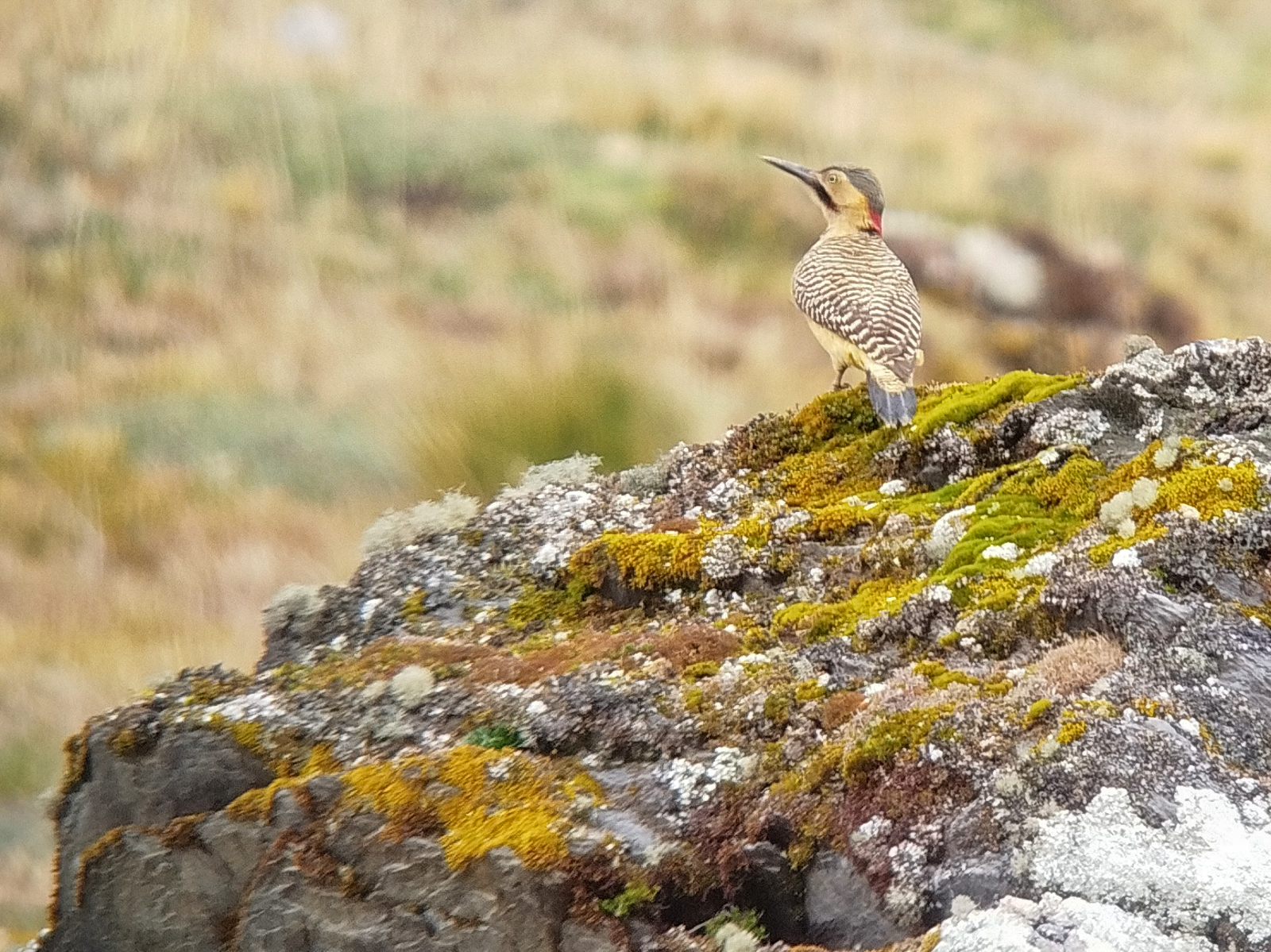
Andean Flicker © Ernesto Carman
Day 13. Cusco, Pisac, Ensifera Camp Feeders, Ollantaytambo and Aguas Calientes
Today we visited two different archeological sites, Pisac and Ollantaytambo and stopped at a couple birding spots. The first was a pond just outside of Cusco where we saw Common Gallinule, Yellow-billed Teal, Andean Gull and Andean Goose and then we had lunch at Ensifera Camp where we added Shining Sunbeam, Scaled Metaltail, Black-throated Flowerpiercer and the fantastic Sword-billed Hummingbird.
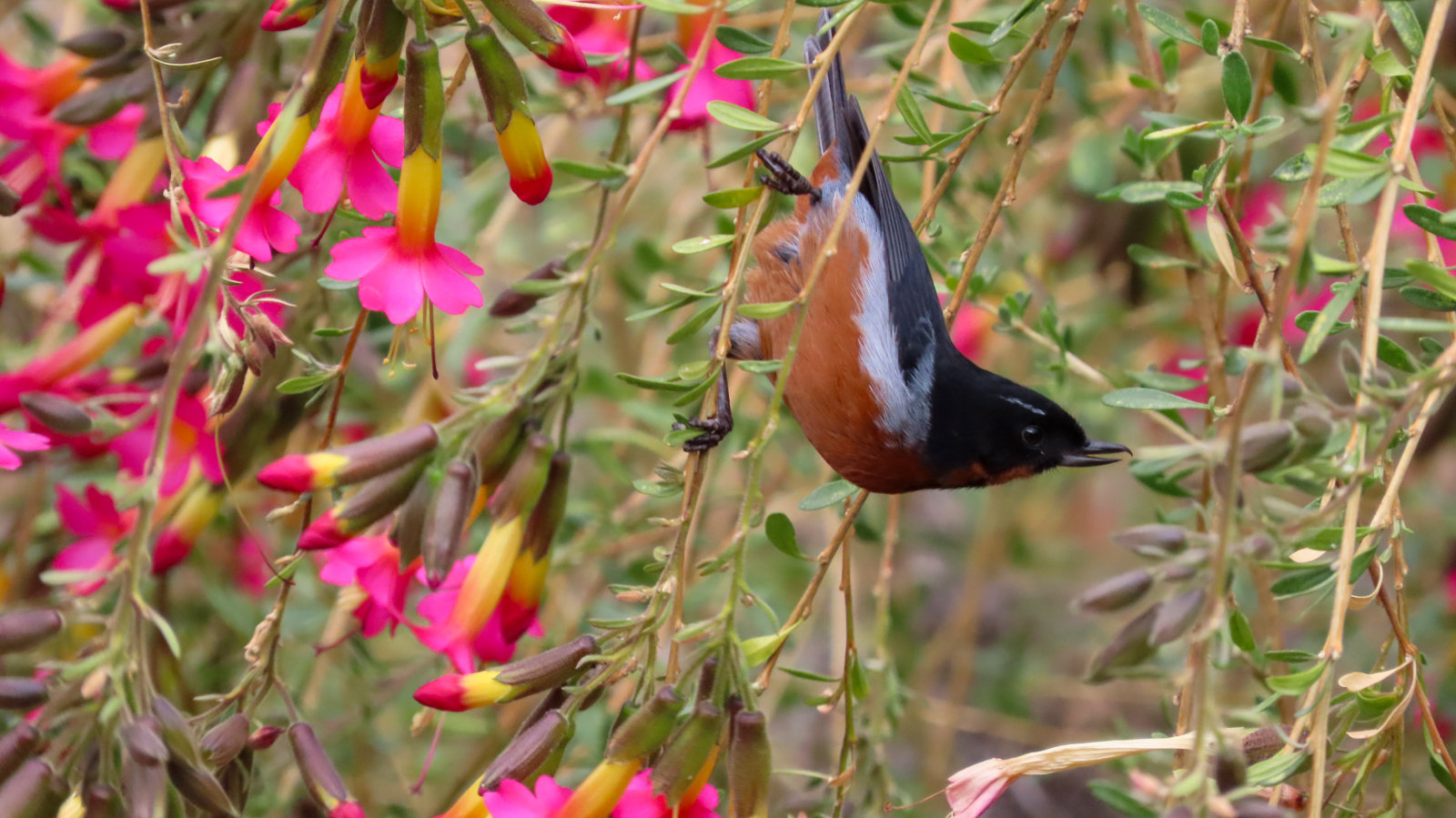
Black-throated Flowerpiercer © Ernesto Carman
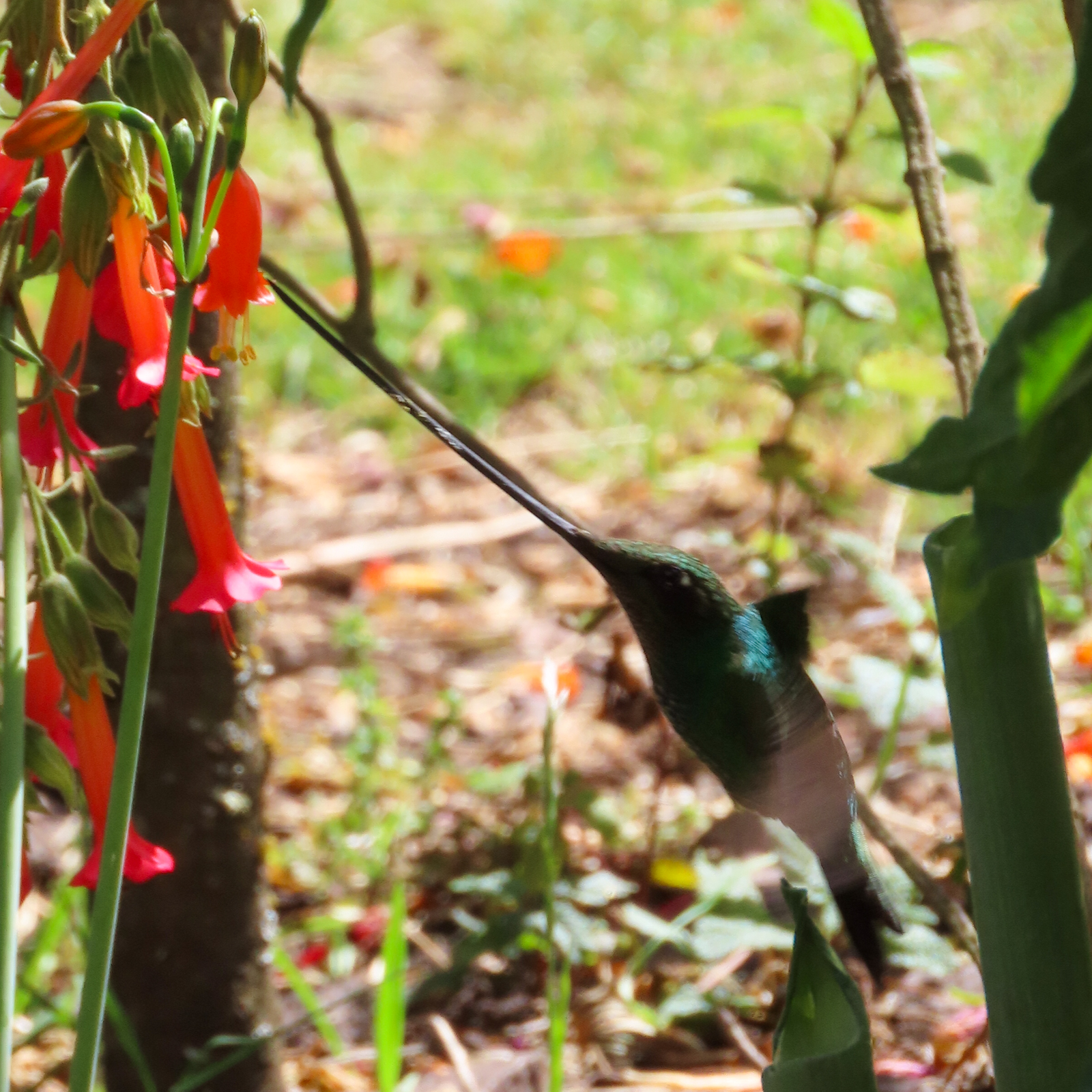
Sword-billed Hummingbird © Ernesto Carman
After lunch and a tour around the town of Ollantaytambo we boarded our train that took us through some of the most amazing terrain with snow-covered peaks, cliffs and the fast-flowing Vilcanota River, finally arriving in the town of Aguas Calientes for the night.
Day 14. Aguas Calientes, Machupicchu and Ollantaytambo.
We were met at 6 a.m. by our guide Wilfredo and we went for a little birding before breakfast and found Silvery Tanager, White-bellied Hummingbird, Andean Motmot, Gray-mantled Wren, Thick-billed Euphonia, Chivi Vireo and Hepatic Tanager. After breakfast we made our way to Machupicchu and had a fantastic tour with Wilfredo. After the tour we returned to Aguas Calientes, had lunch and caught our train back to Ollantaytambo.
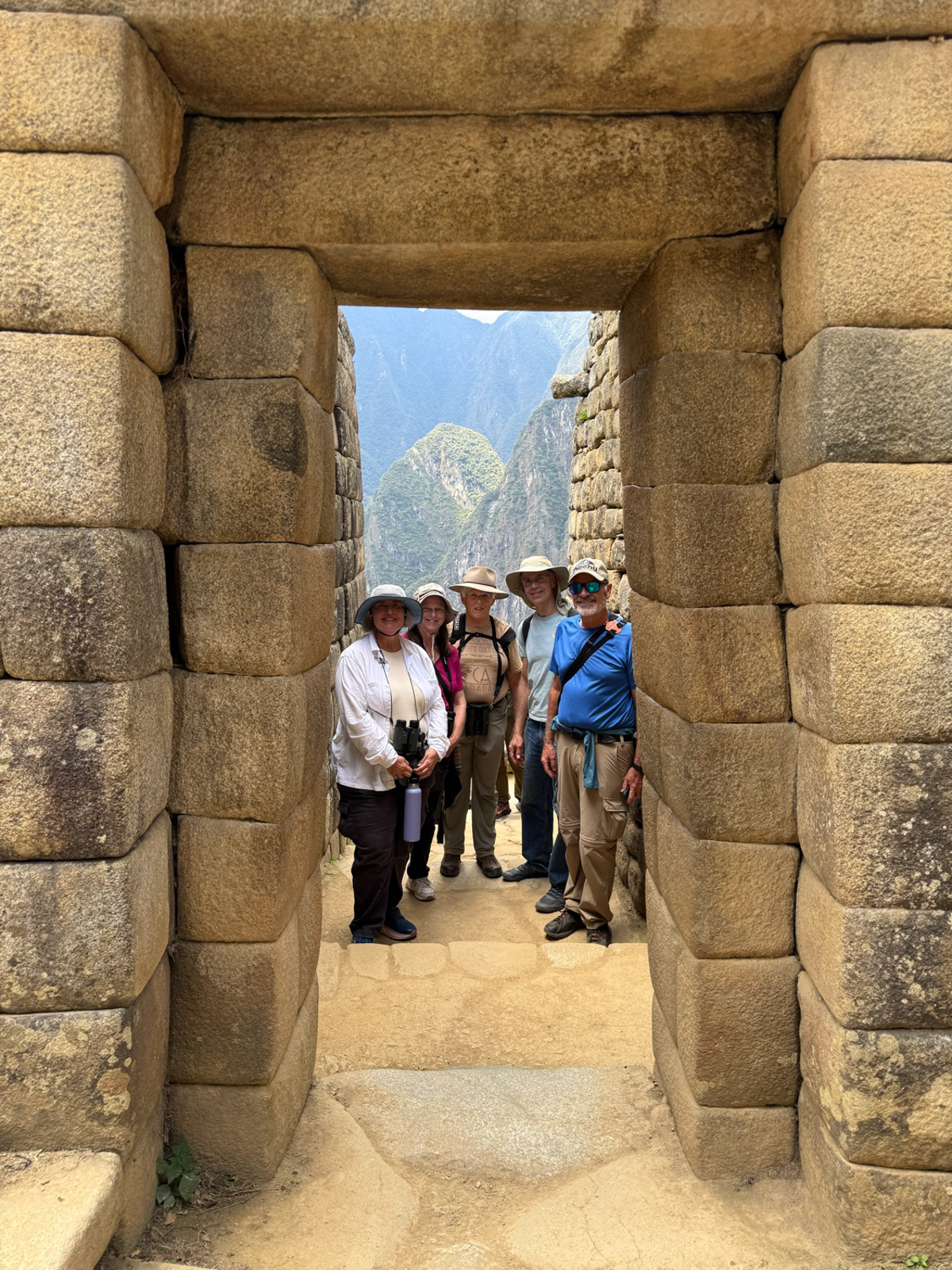
Group at Machu Picchu © Ellen Golden
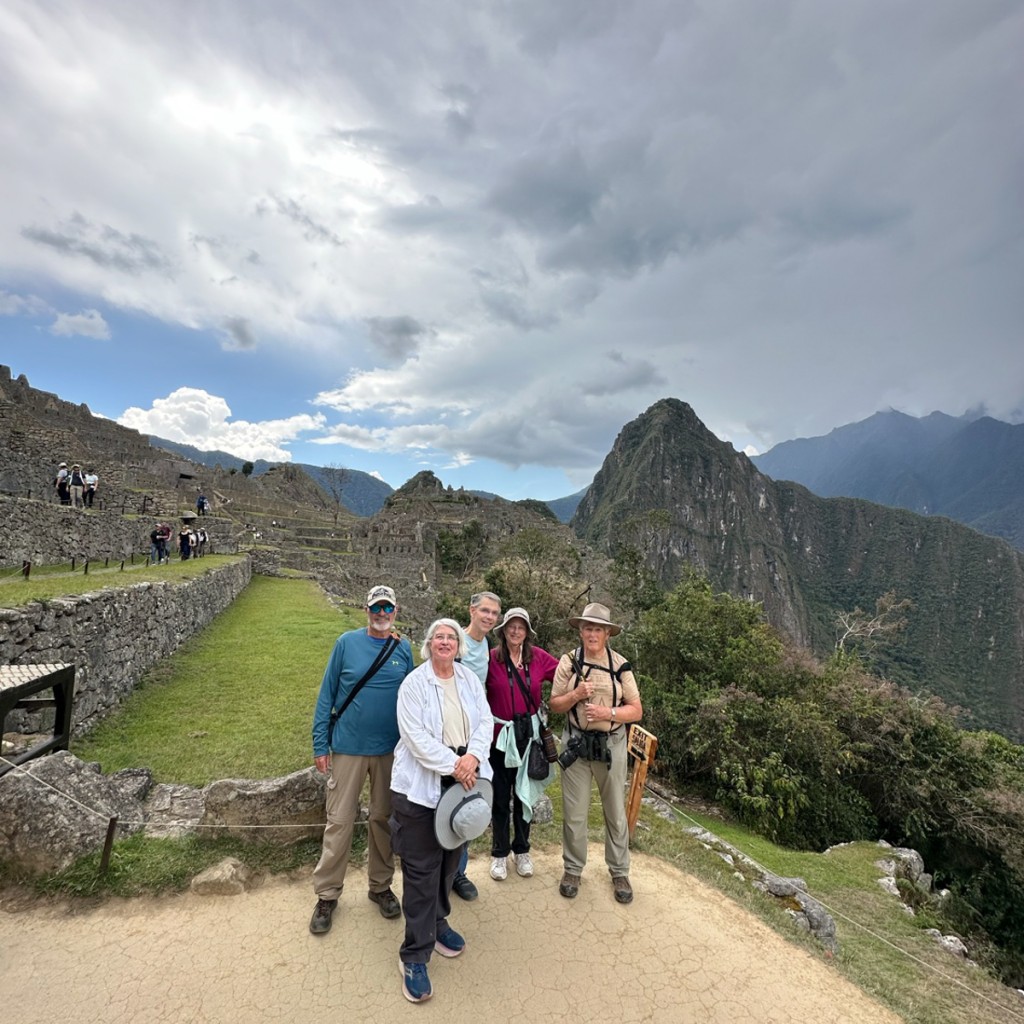
Machu Picchu © Joyce Anderson
Day 15. Abra Málaga
After an early breakfast we began working our way up the mountain towards Abra Málaga, a high mountain pass at 4,300 m (14,100 ft).
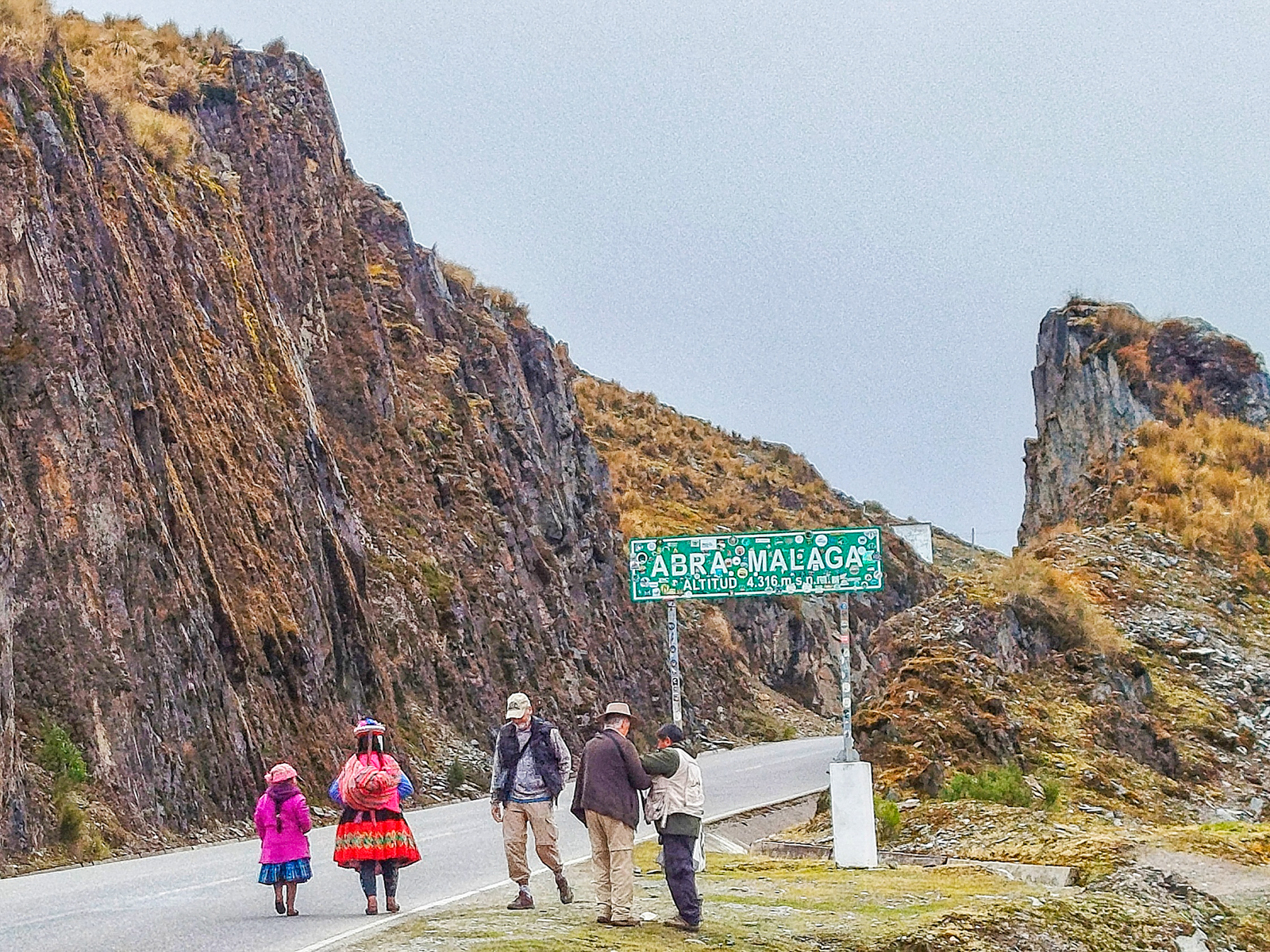
Abra Malaga © Ernesto Carman
Soon after leaving Ollantaytambo we stopped to look for hummingbirds and saw both Shining Sunbeam and White-tufted Sunbeam and a pair of Torrent Ducks in the creek. We also birded the short, grassy Puna habitat and saw Andean Flicker, Plumbeous Sierra Finch, Junin Canastero, Páramo and Plain-colored Seedeaters. At the highest point we took a moment to take photos of Nevado de Verónica, an impressive glacier-covered peak towering above all the surrounding landscape and we also had great views of Glacier Finch and Cream-winged Canastero.
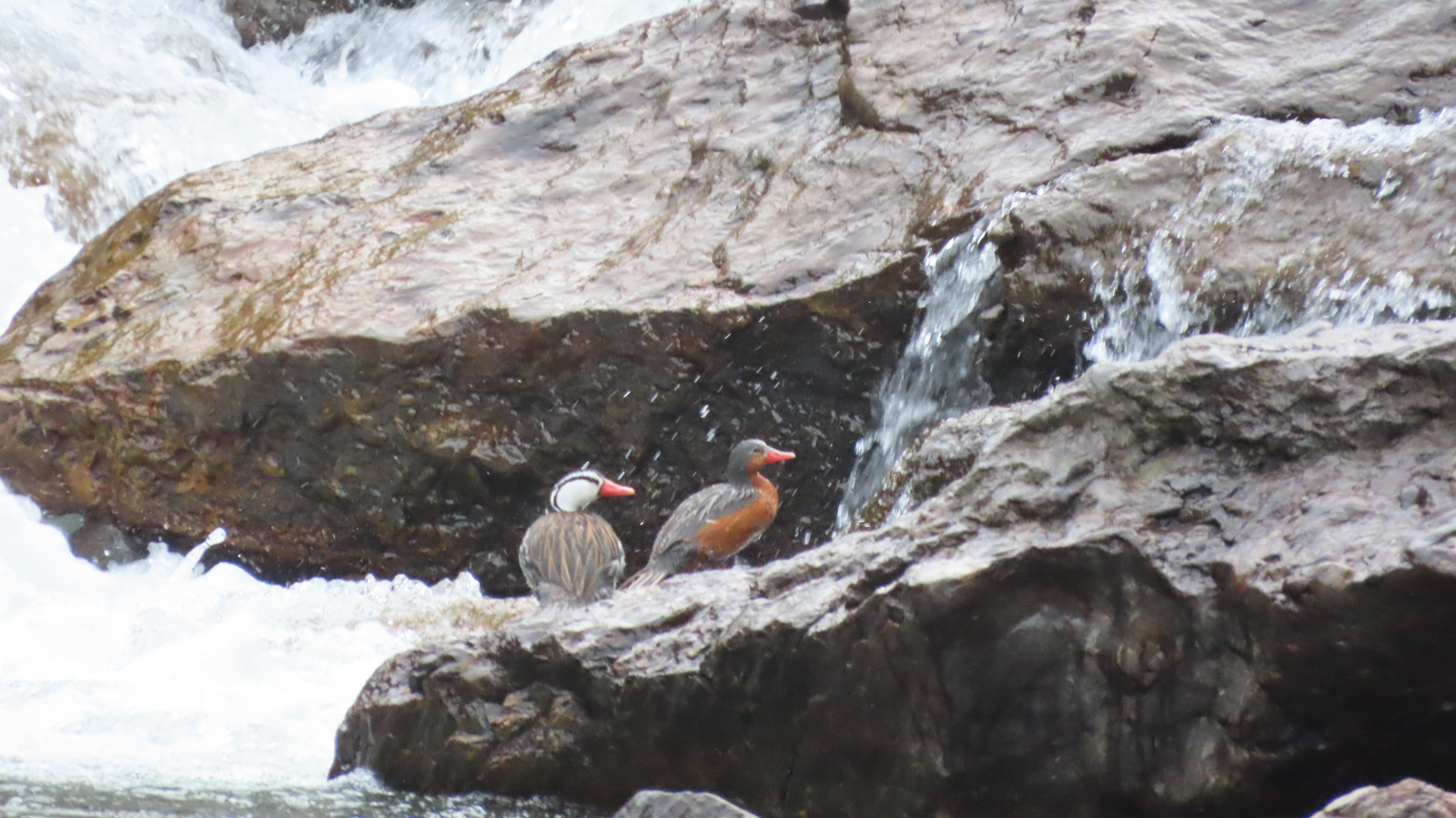
Torrent Ducks © Ernesto Carman
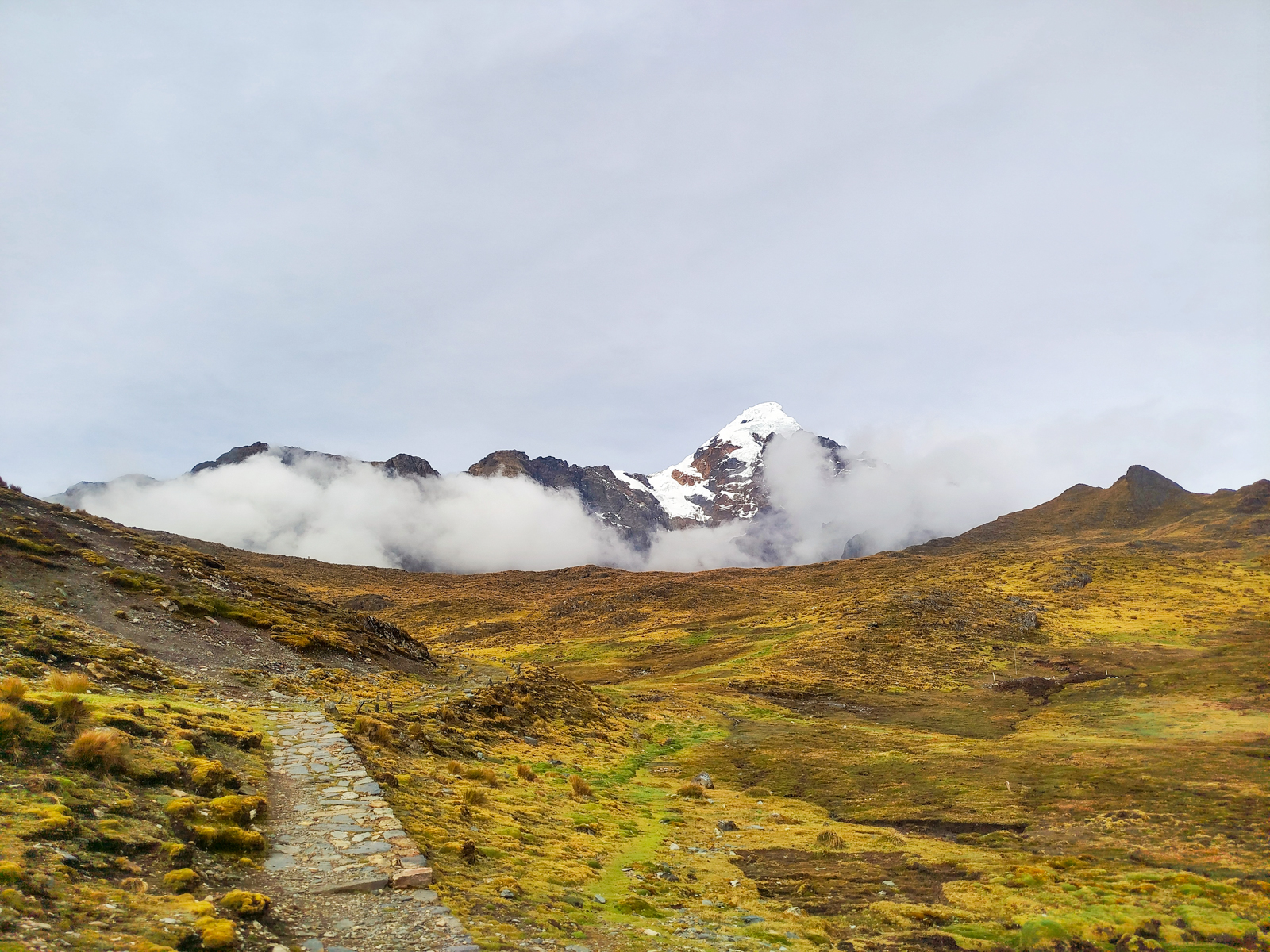
Veronica Peak © Ernesto Carman
We drove a little further and dropped a little in elevation to look for several specialties on the windward side of the mountain and saw Puna Thistletail, Parodi’s and Three-striped Hemispingus, Marcapata Spinetail, Grass Wren, Inca Wren, Cuzco Wren, Rufous-breasted Chat-Tyrant, Unstreaked Tit-Tyrant, Chestnut-bellied Mountain-Tanager and White-throated Hawk.
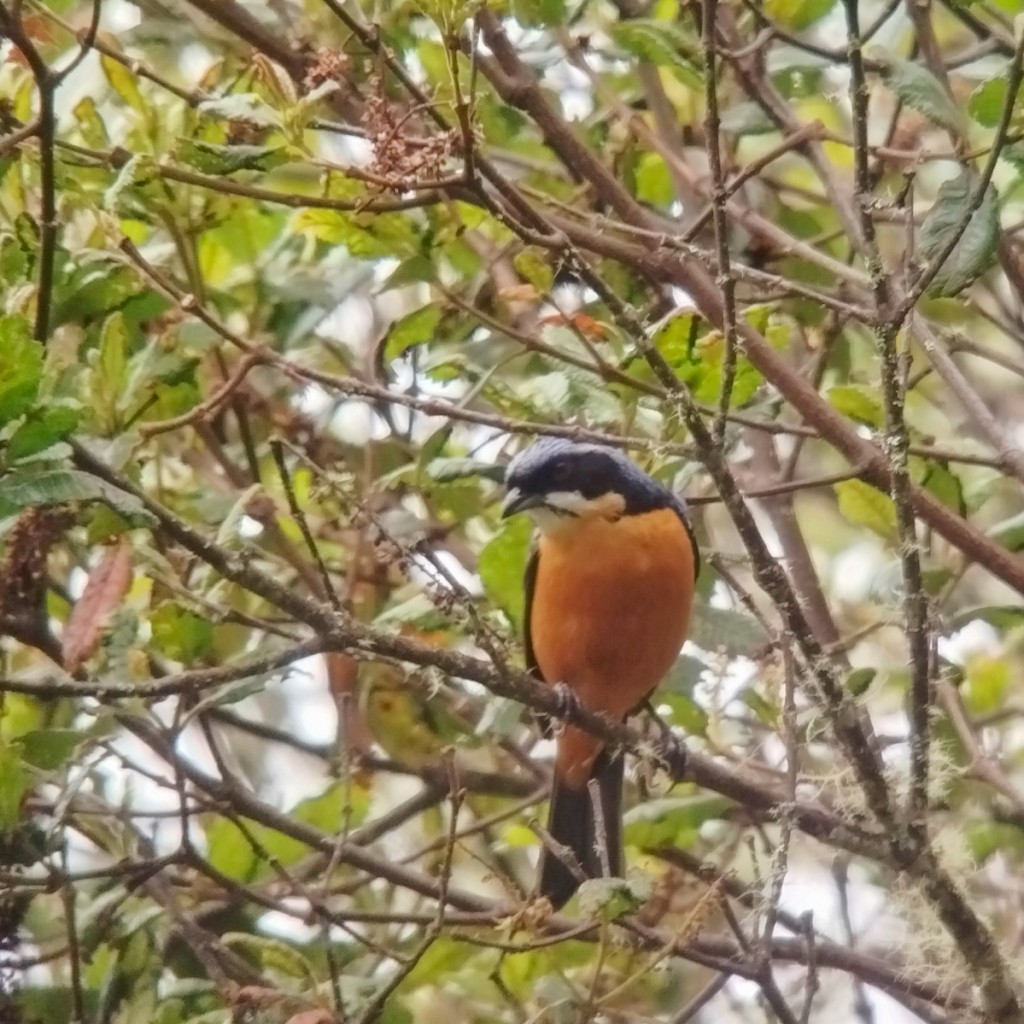
Chestnut-bellied Mountain Tanager © Ernesto Carman
After a roadside picnic lunch we made our way back up the mountain, making a few stops along the way to see Andean Goose, Andean and Puna Ibis and Andean Lapwing. Before reaching our hotel we made one last stop to scan a little creek and saw White-capped Dipper.
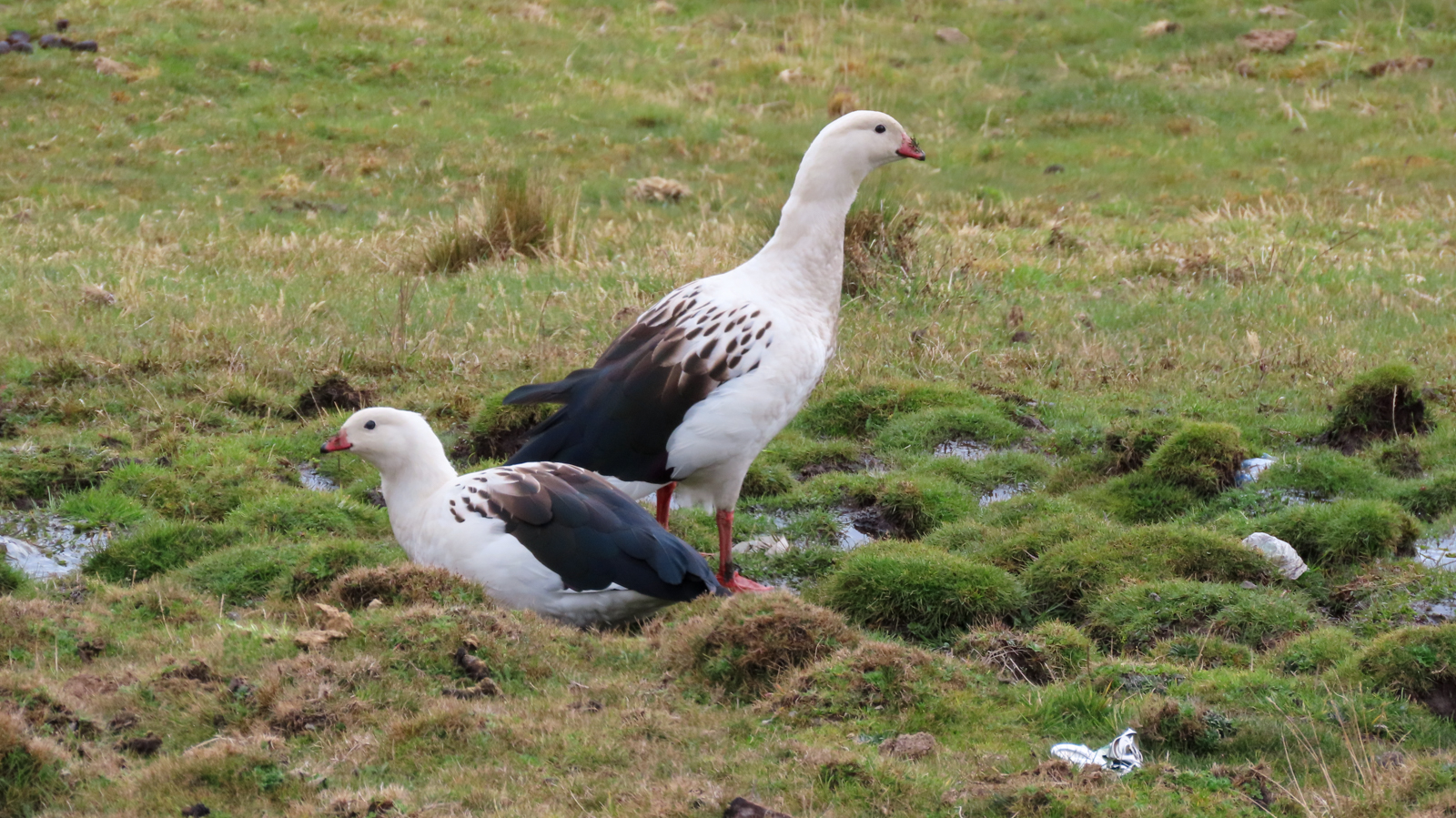
Andean Goose © Ernesto Carman
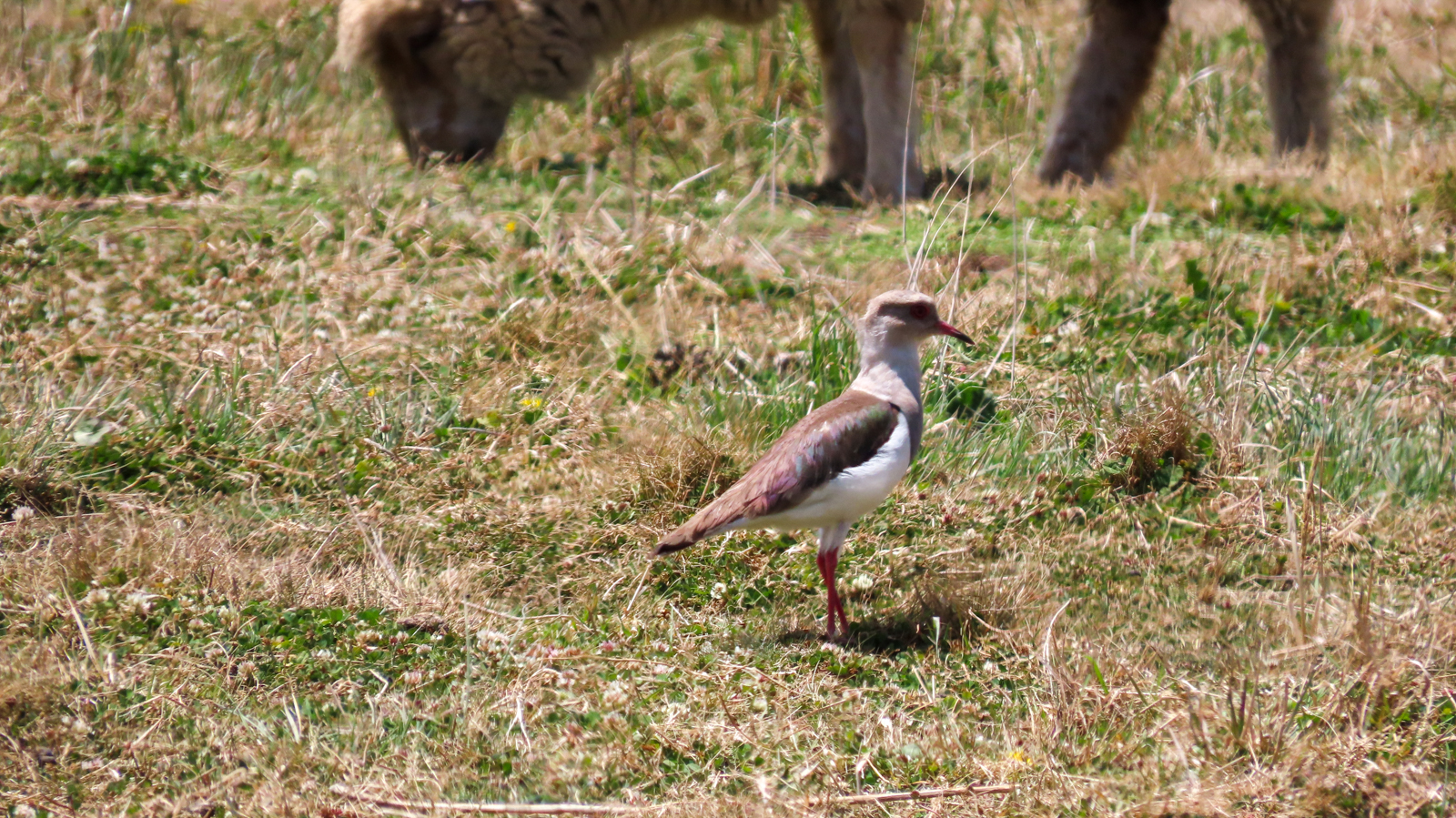
Andean Lapwing © Ernesto Carman
Day 16. Ollantaytambo, Laguna de Piuray, Cusco
After breakfast we began working our way back up the Sacred Valley towards Cusco, but we had several interesting stops along the way to break-up the drive. We first visited an archaeological site called Moray which was basically a site used for agricultural experimentation during the Inca period.
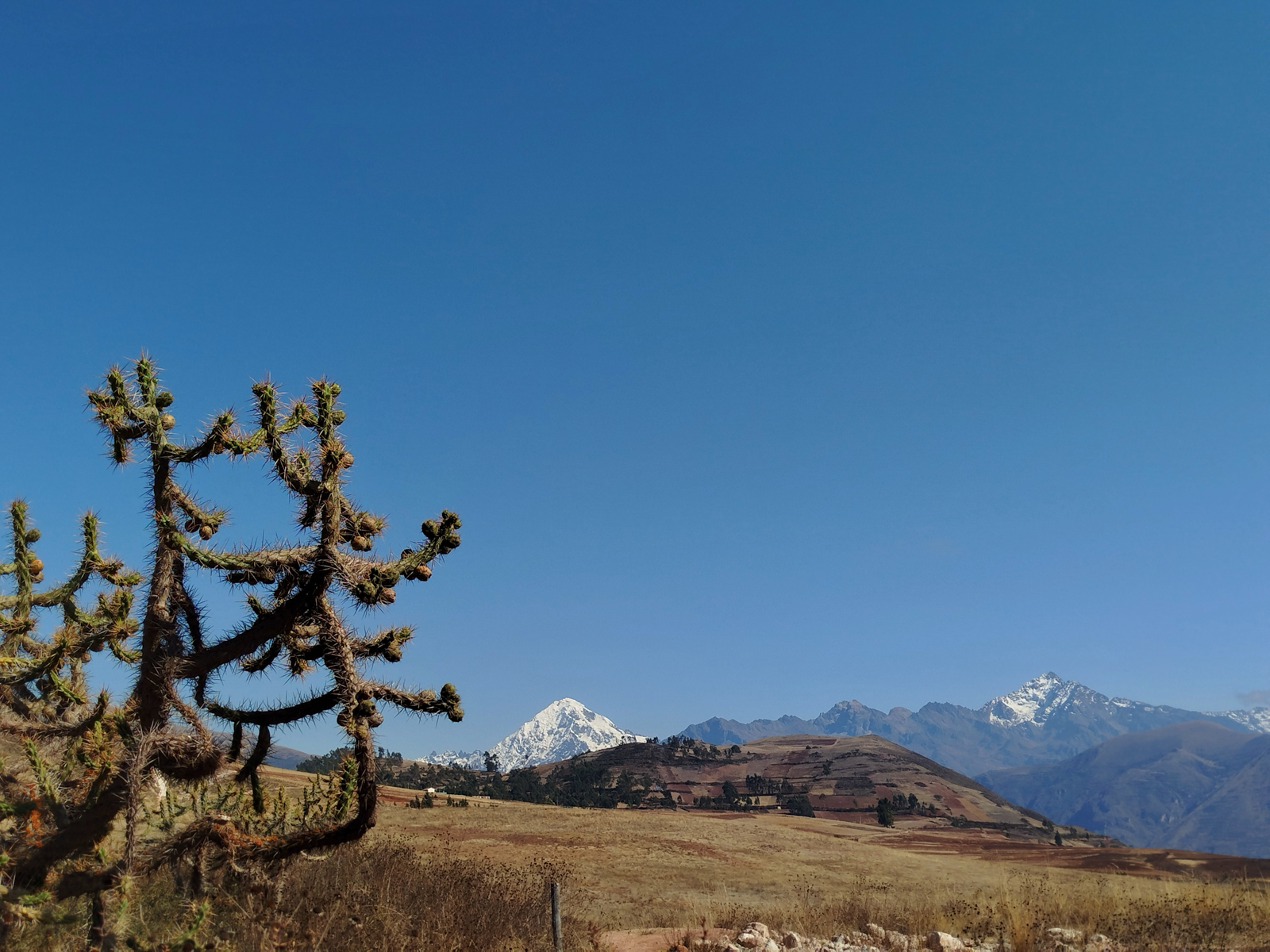
Sacred Valley landscape © Ernesto Carman
We also visited the Maras salt pans, which is not where you would expect to find salt pans as it is placed on a steep hillside! Our next stop was at Lake Piuray where the waterfowl show was amazing as we saw Silvery and White-tufted Grebe, Puna, Yellow-billed and Cinnamon Teal, Yellow-billed Pintail, Andean Duck, Andean Lapwing, Baird’s and Pectoral Sandpiper, Andean Flicker and Yellow-winged Blackbird. From here we reached Cusco for lunch and a visit to one more archaeological site, Saqsayhuaman, before arriving at our for our last night and farewell dinner.
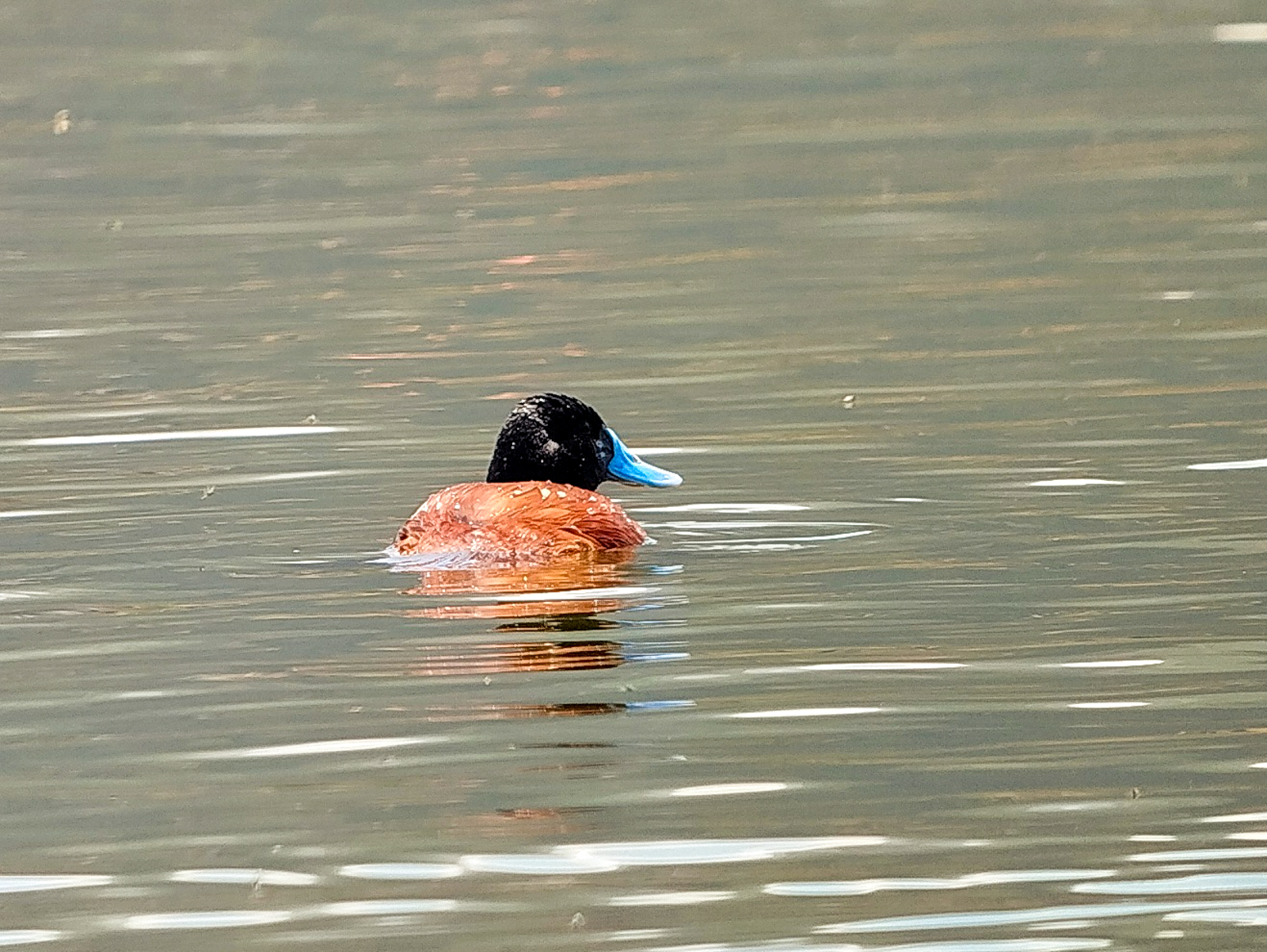
Andean Duck © Ernesto Carman
Day 17. Departure
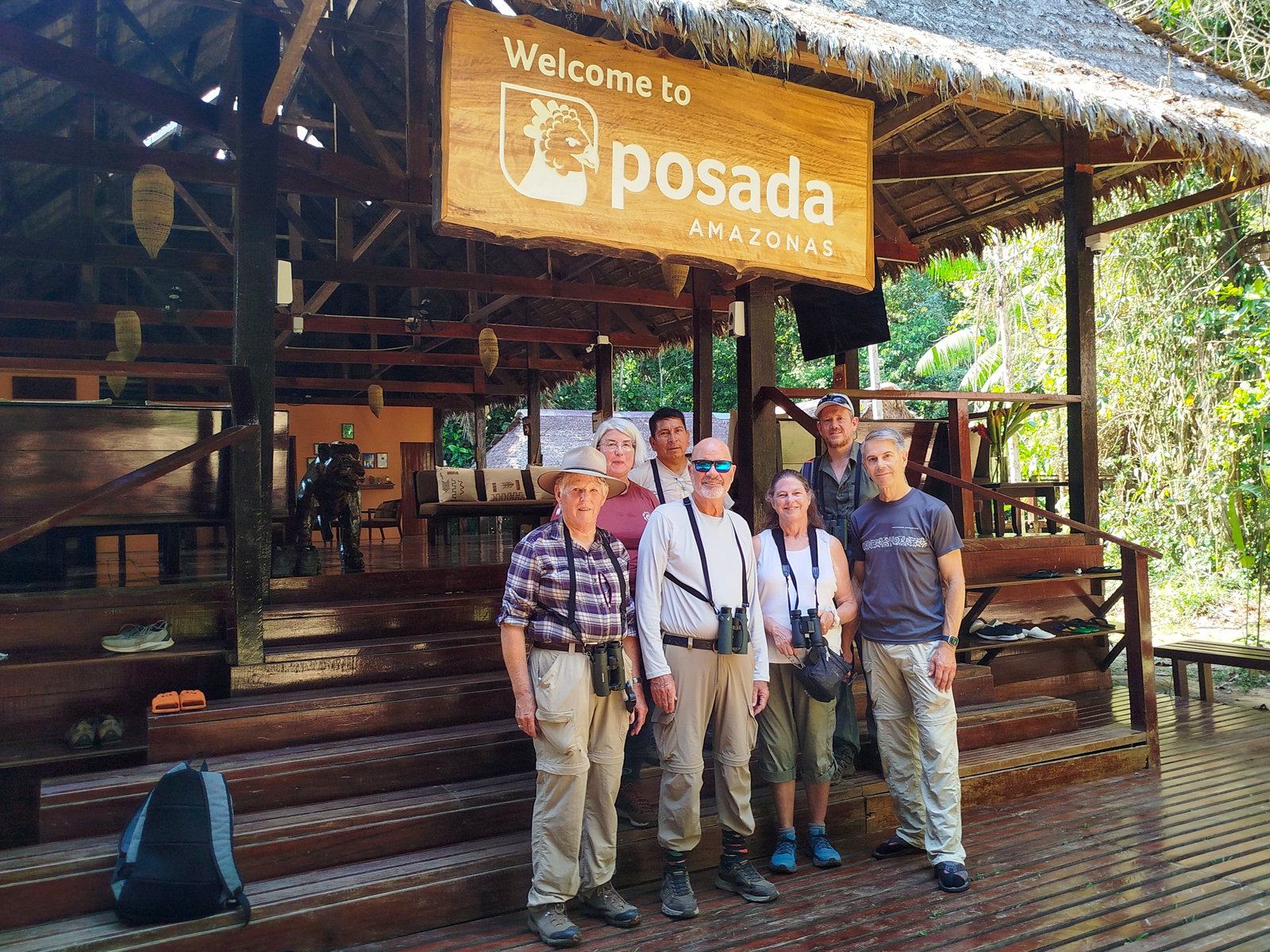
Southern Peru group 2025



